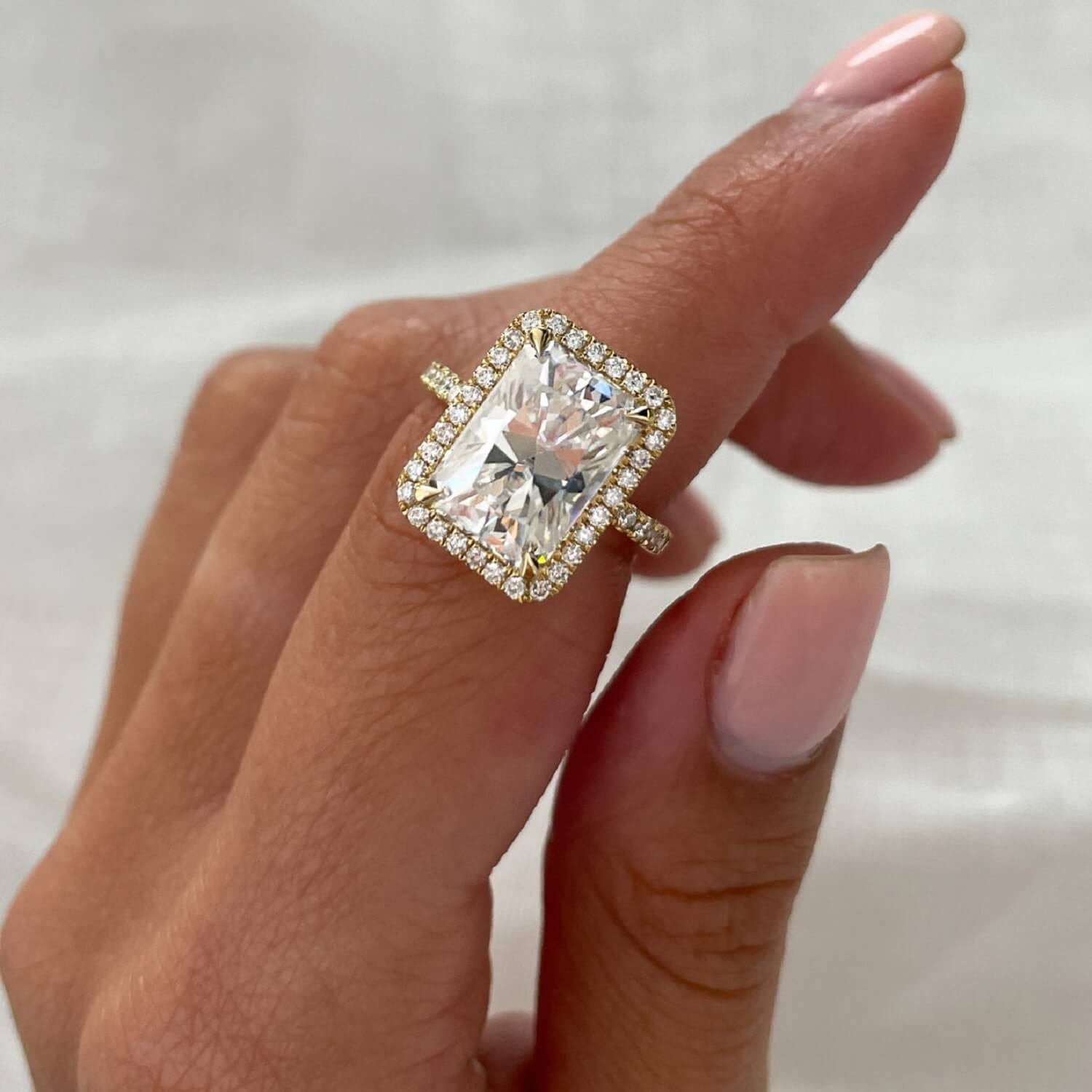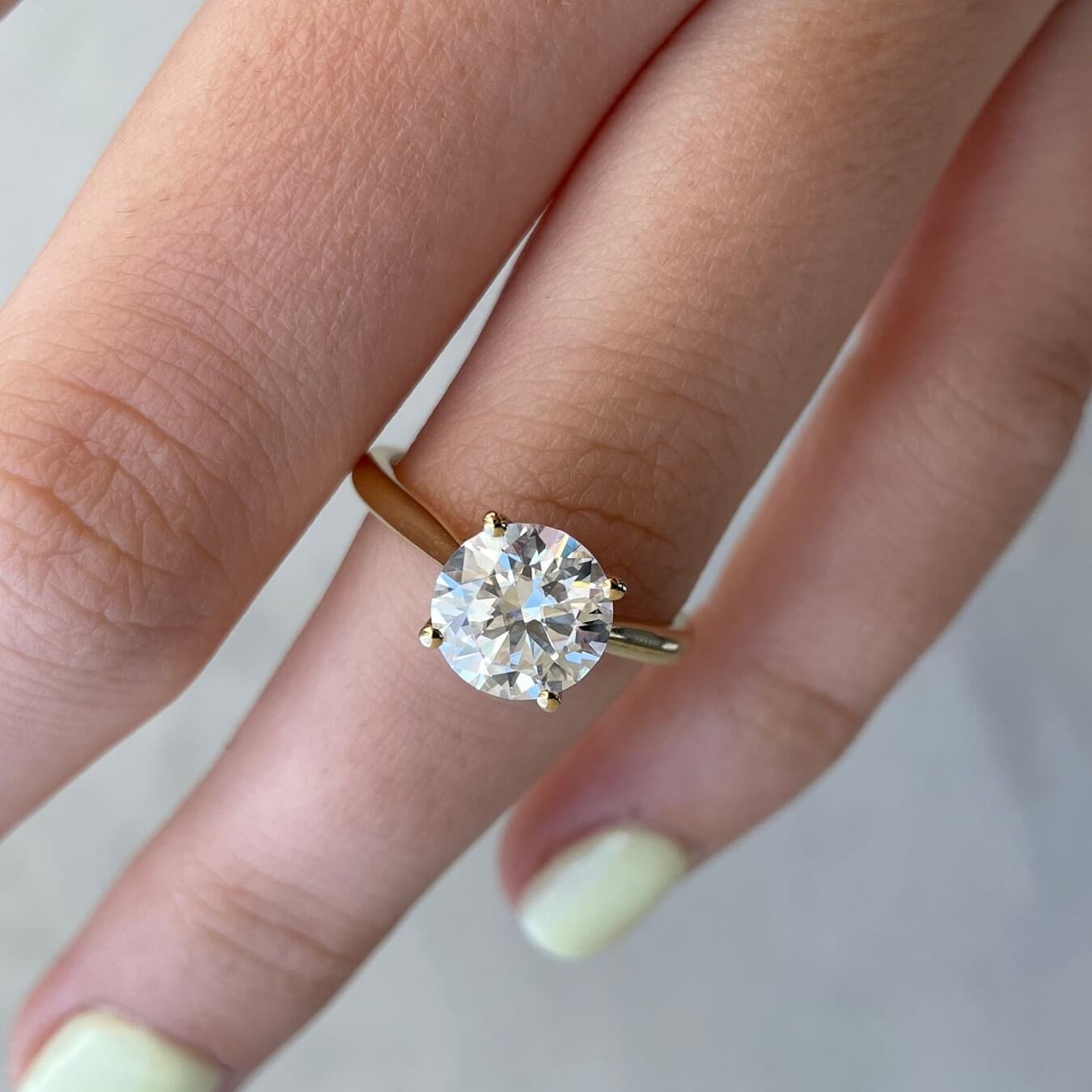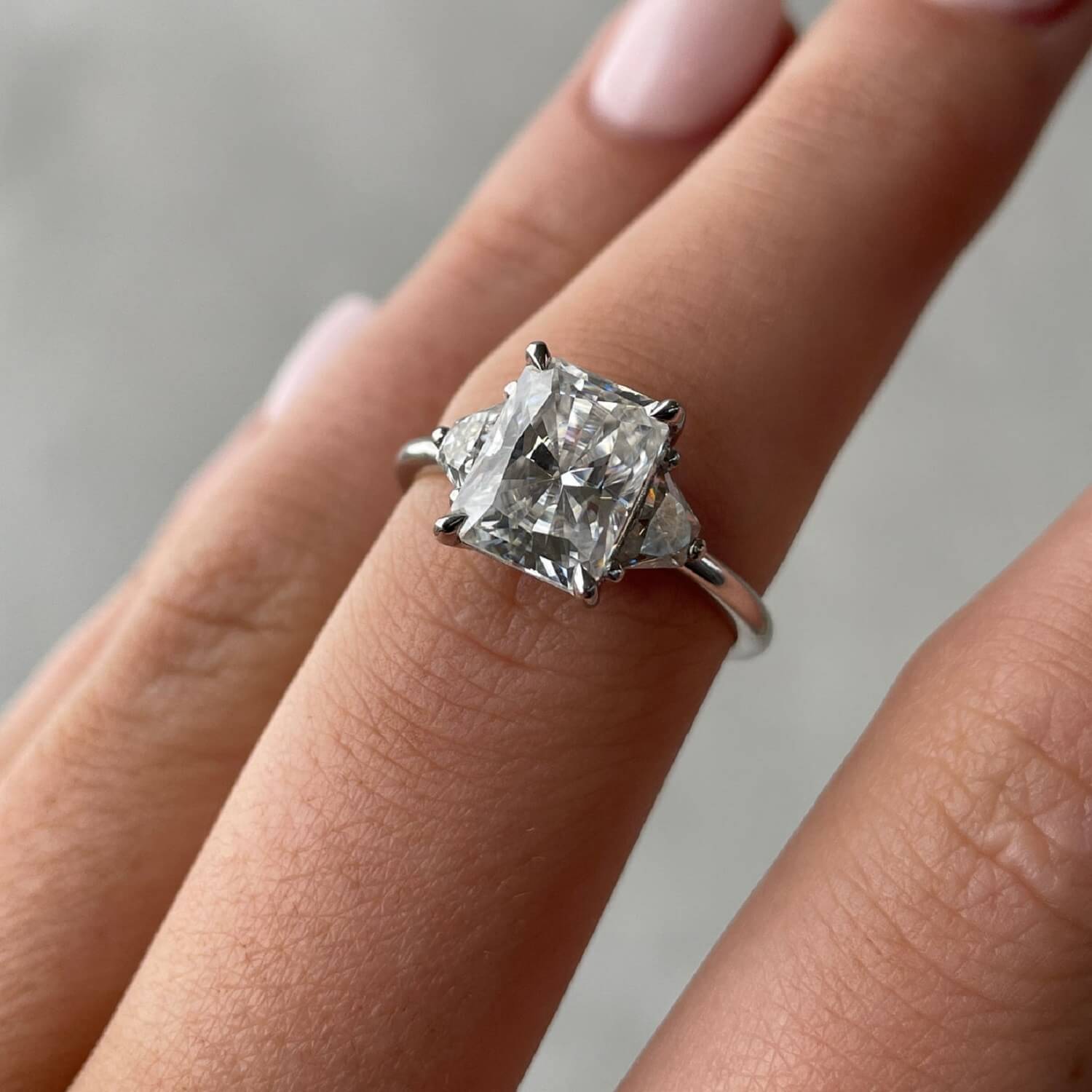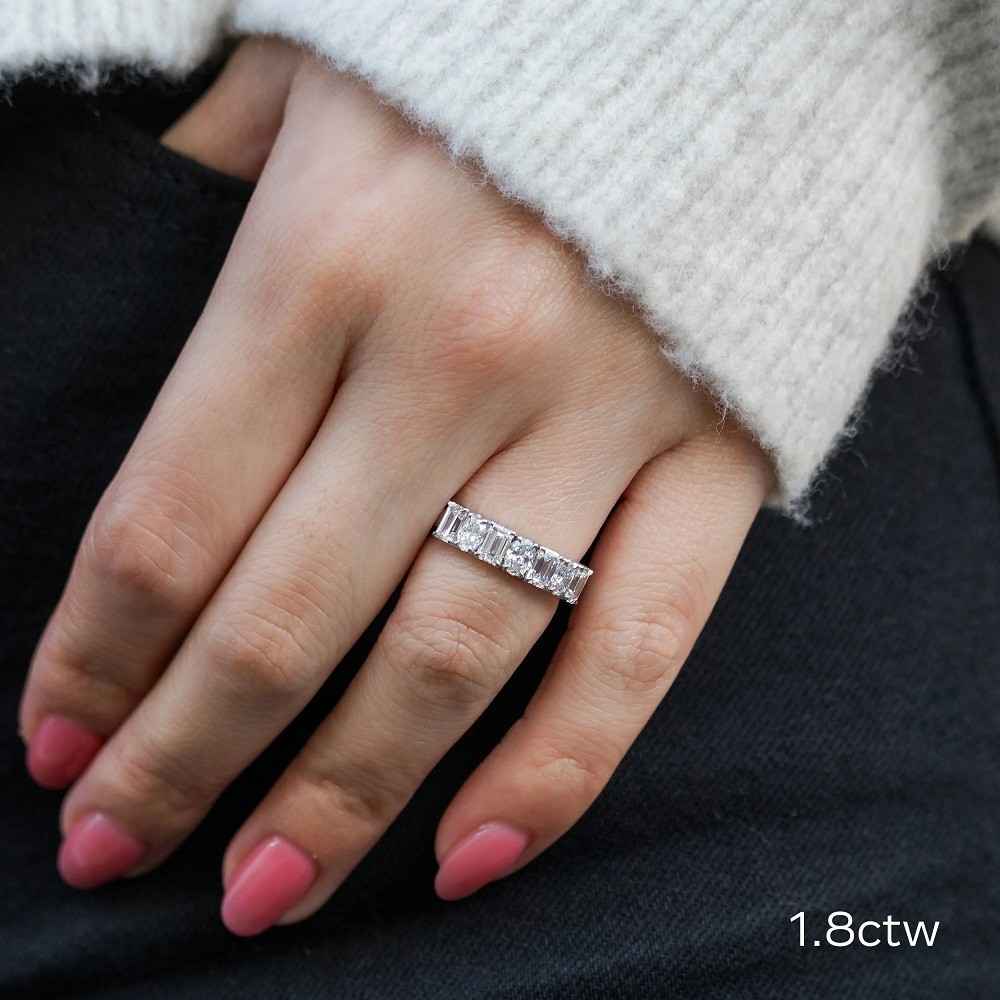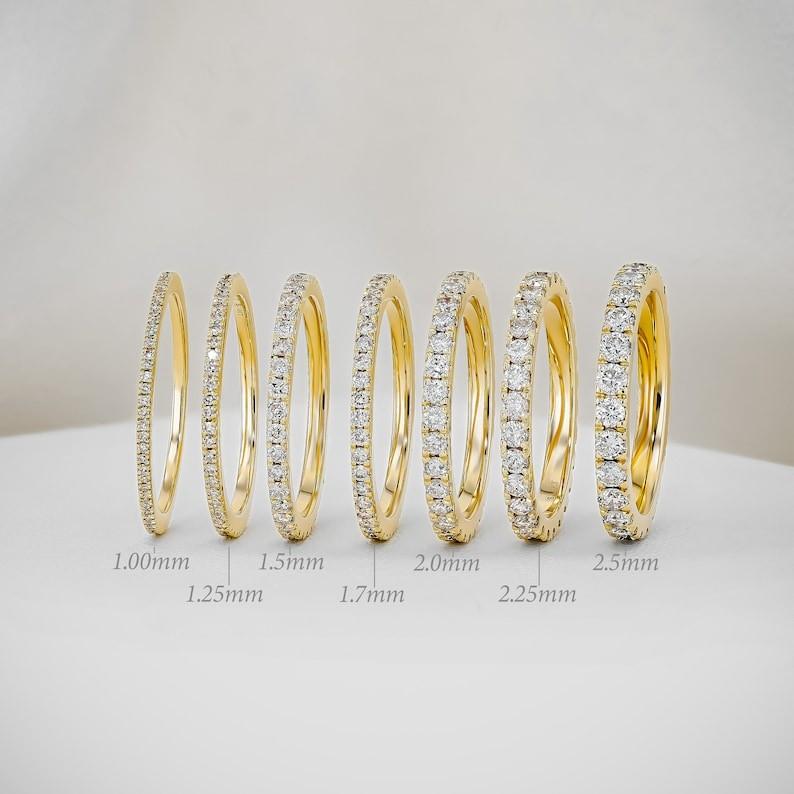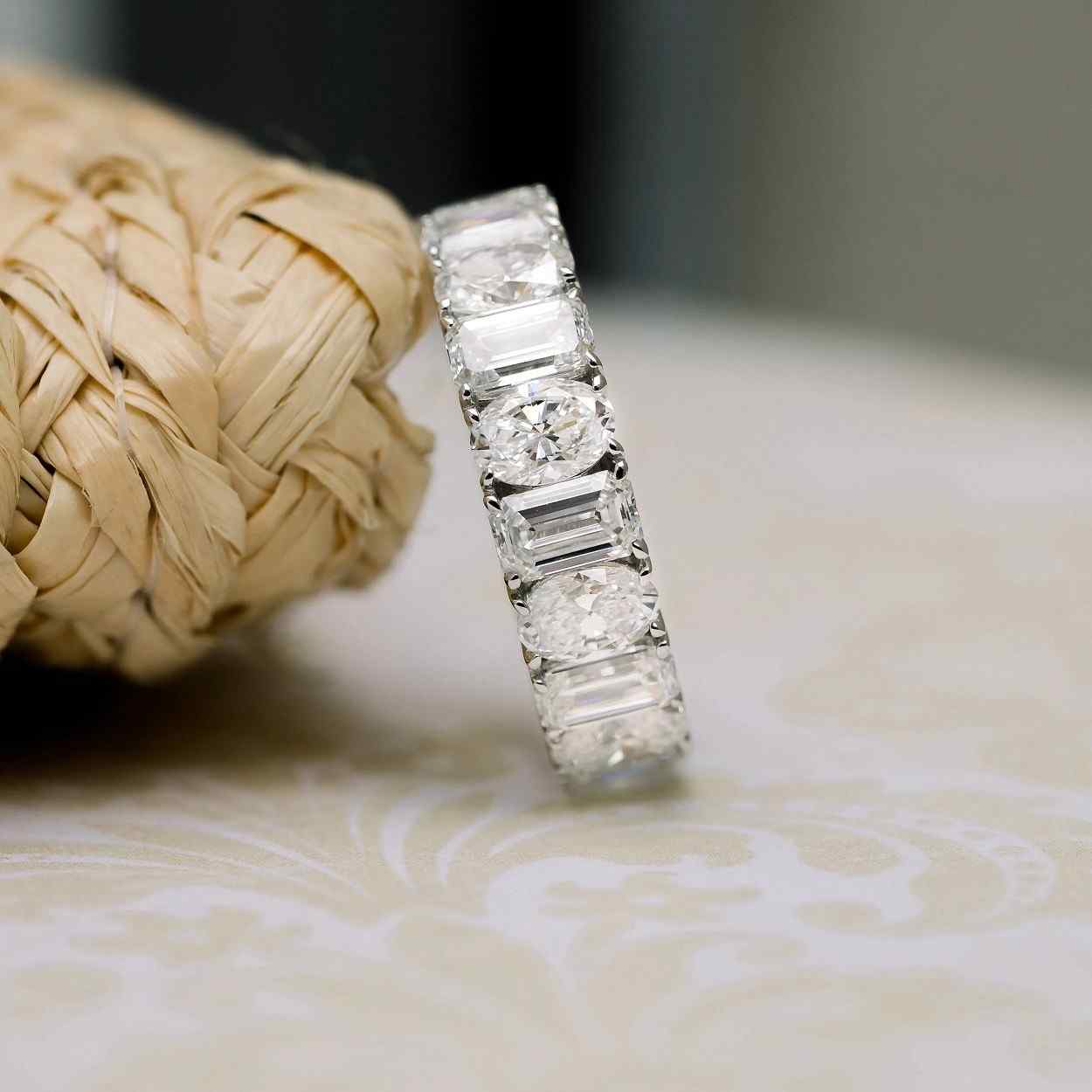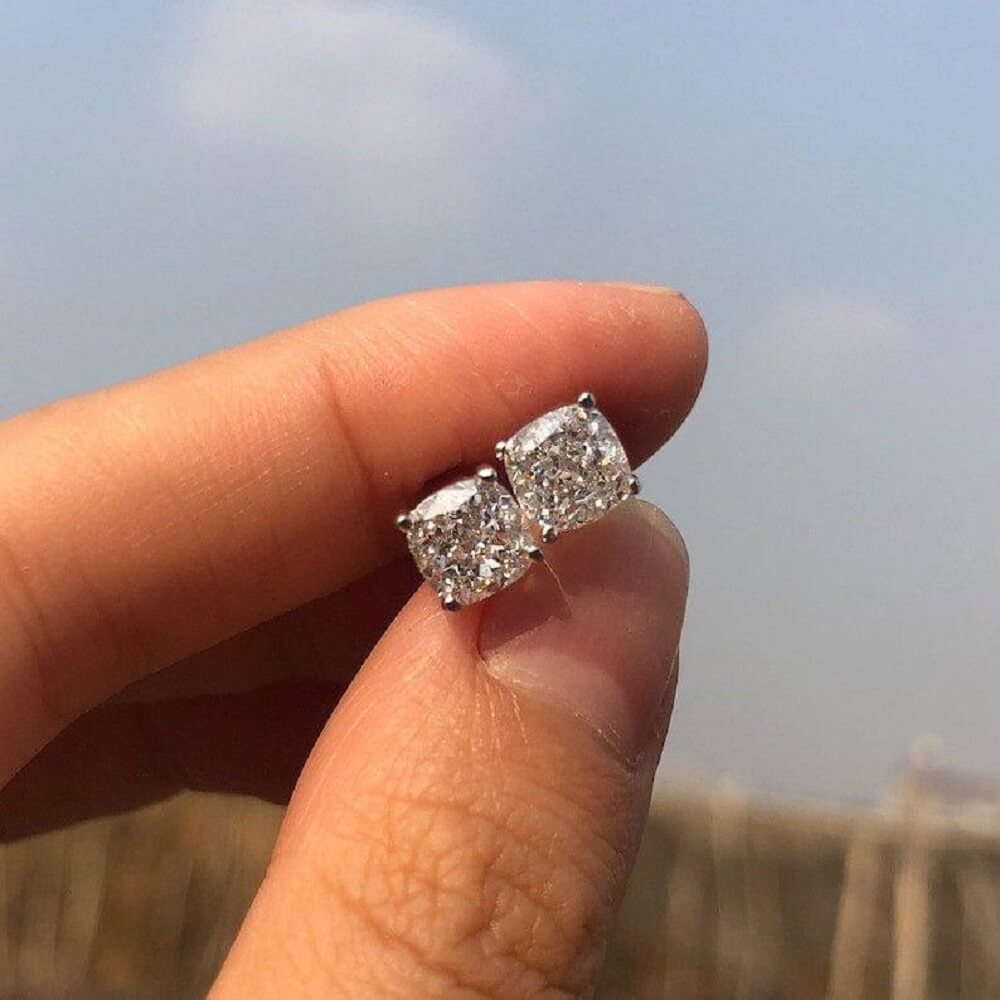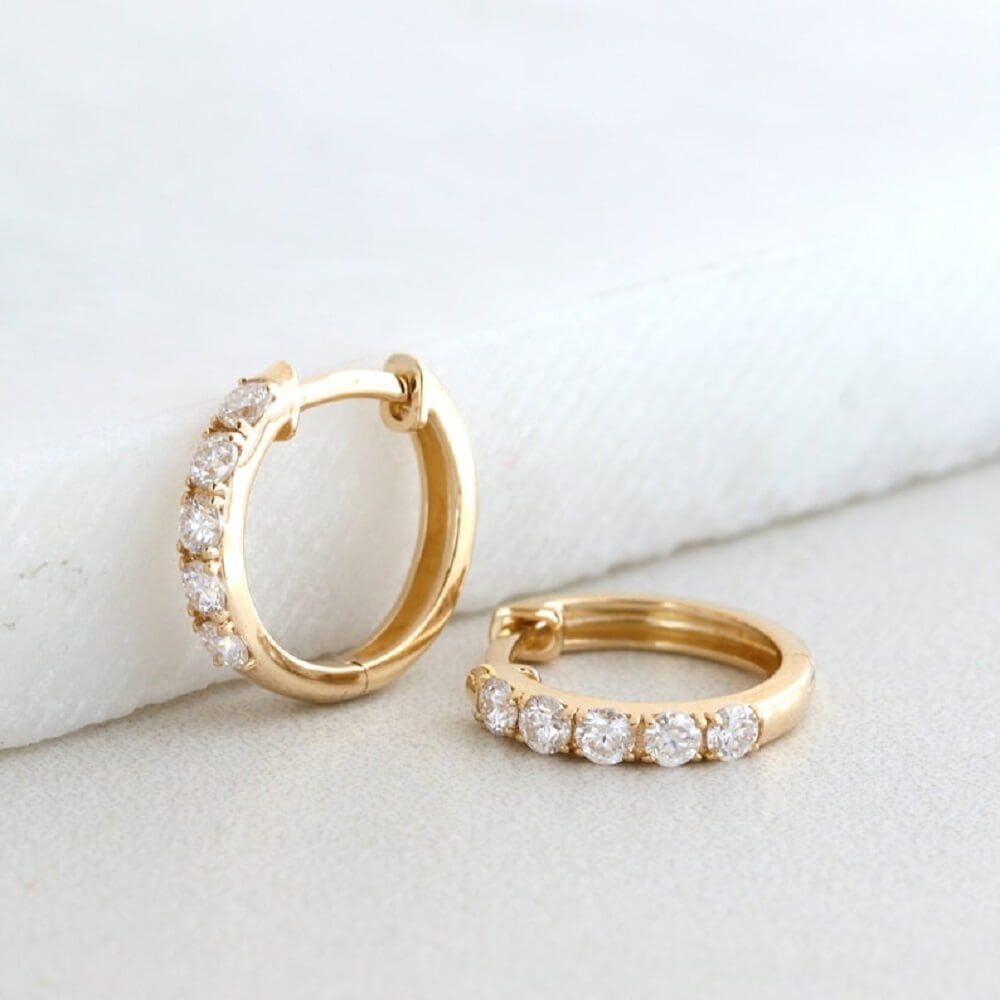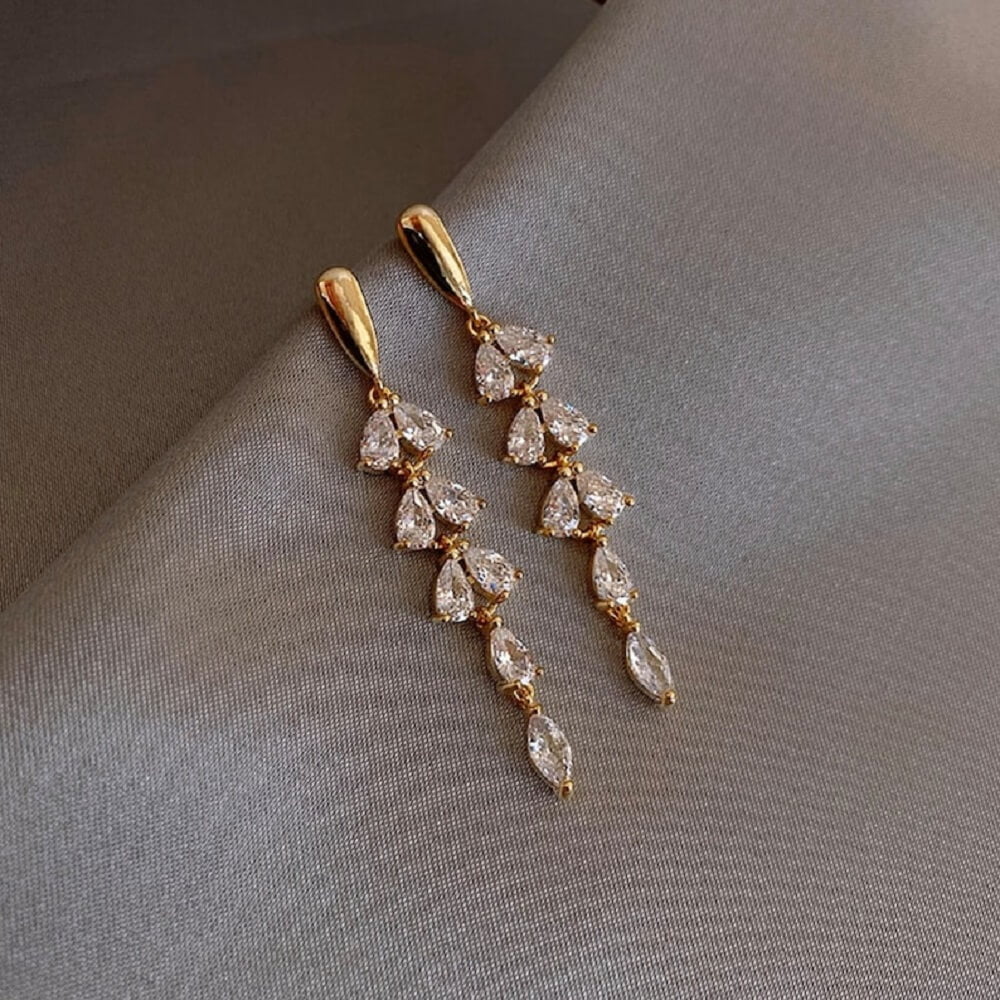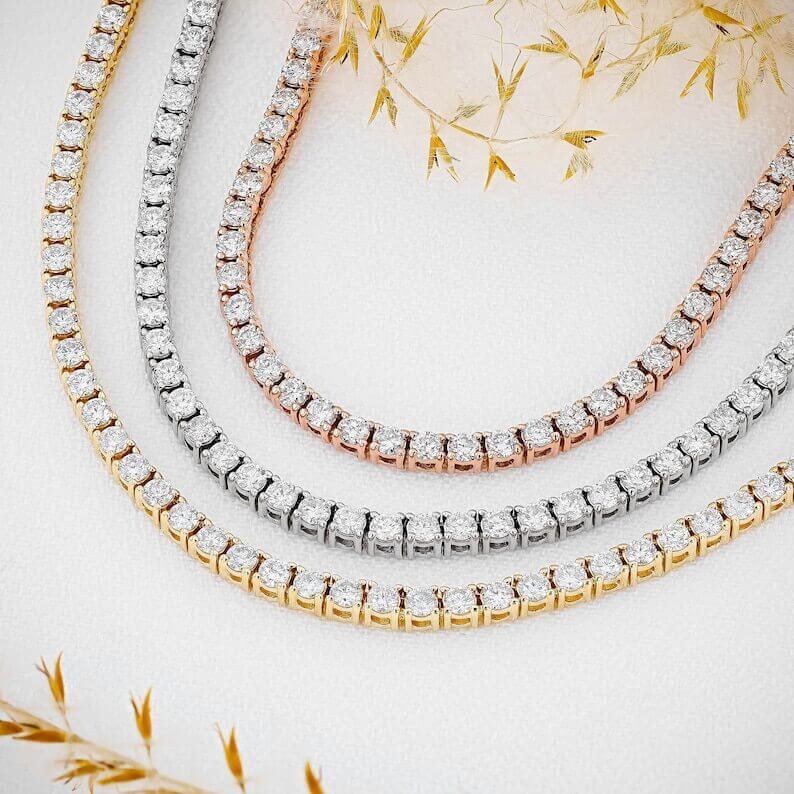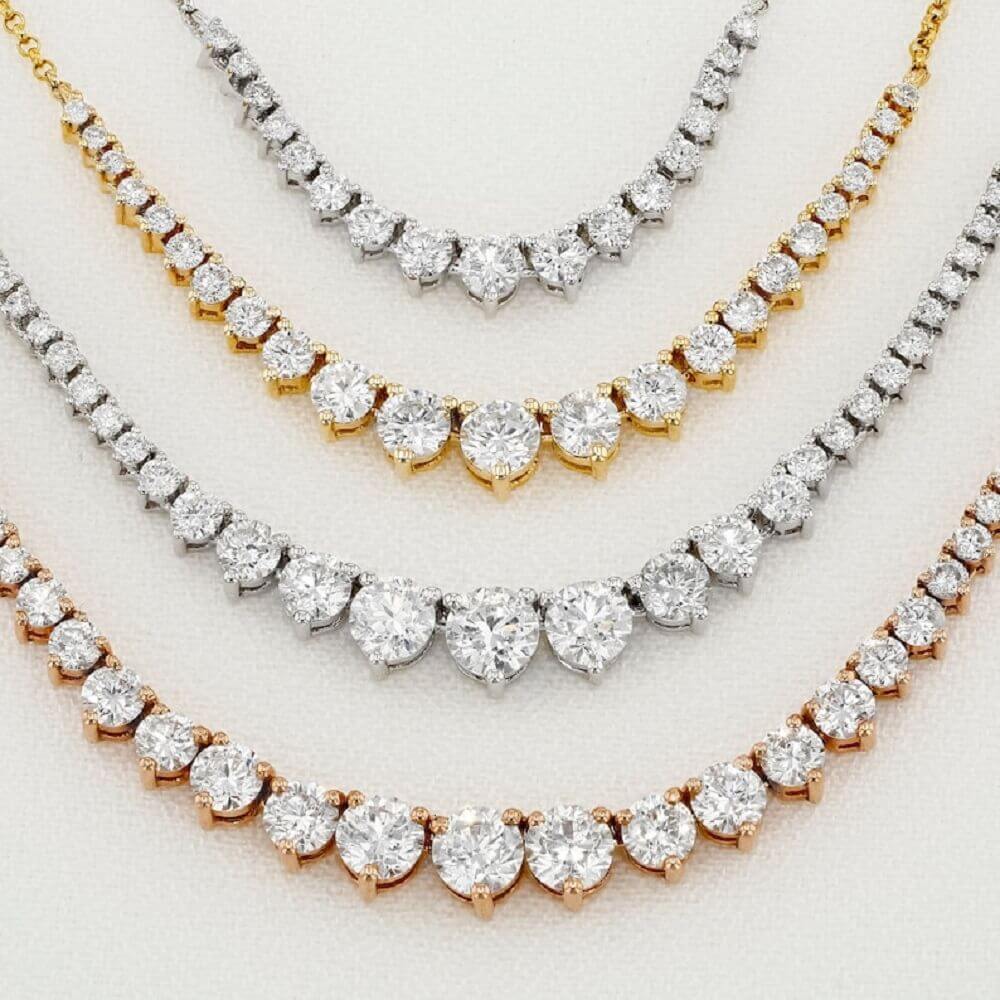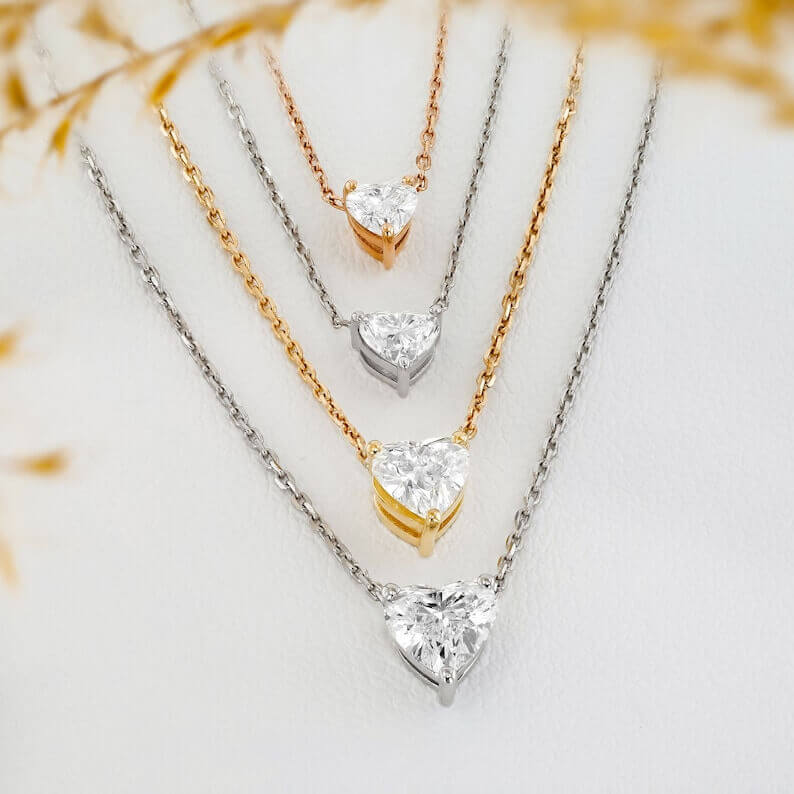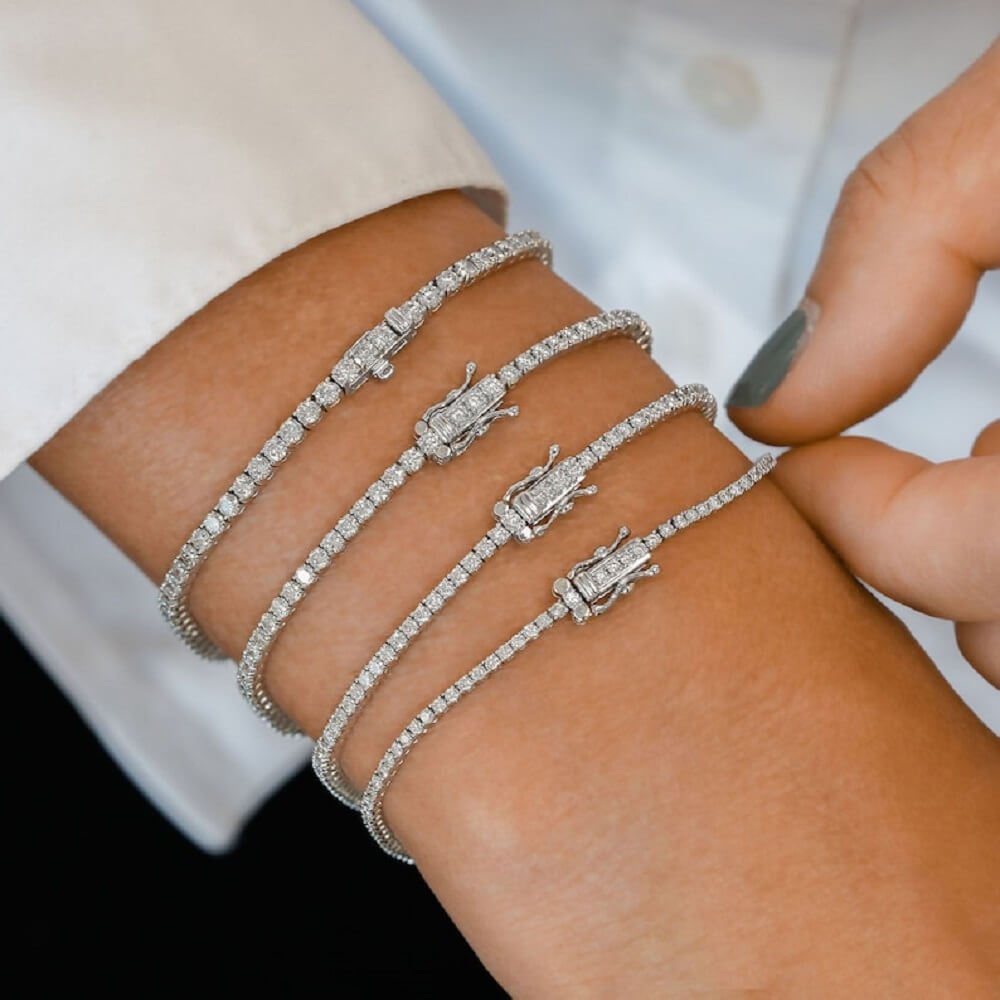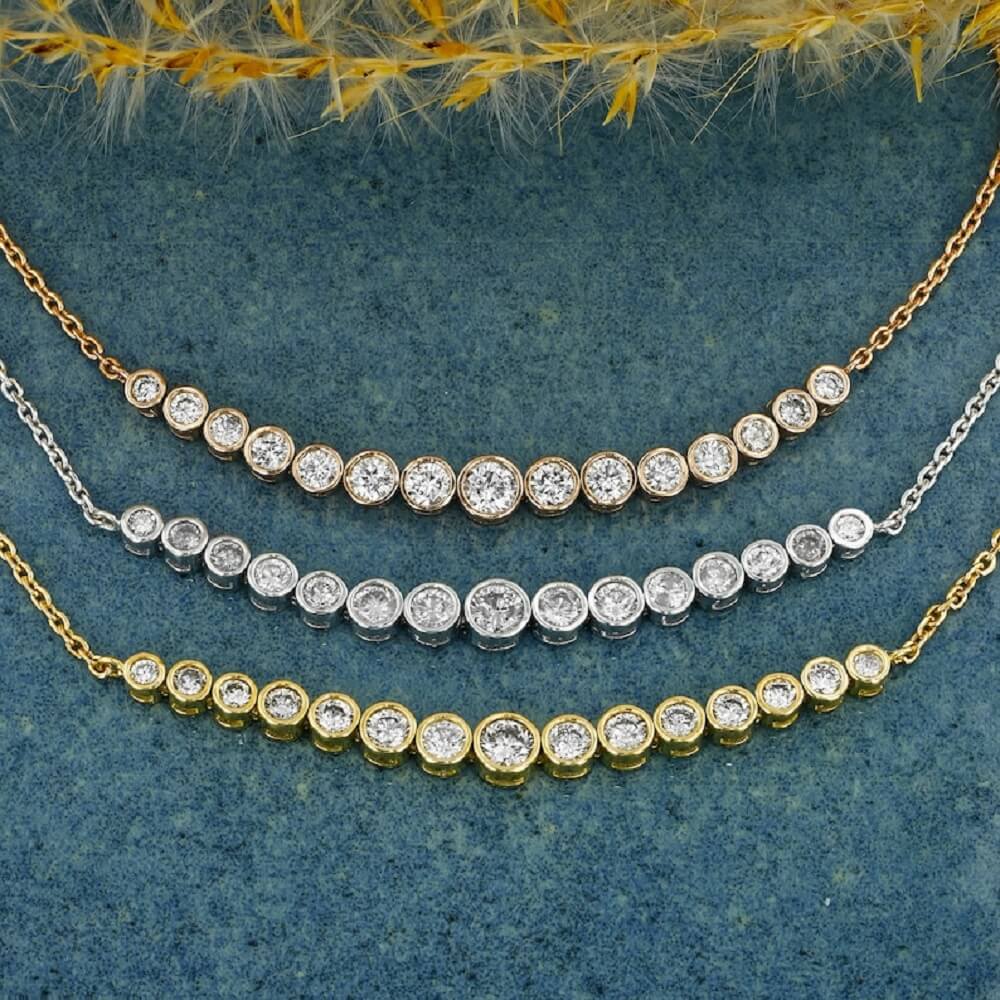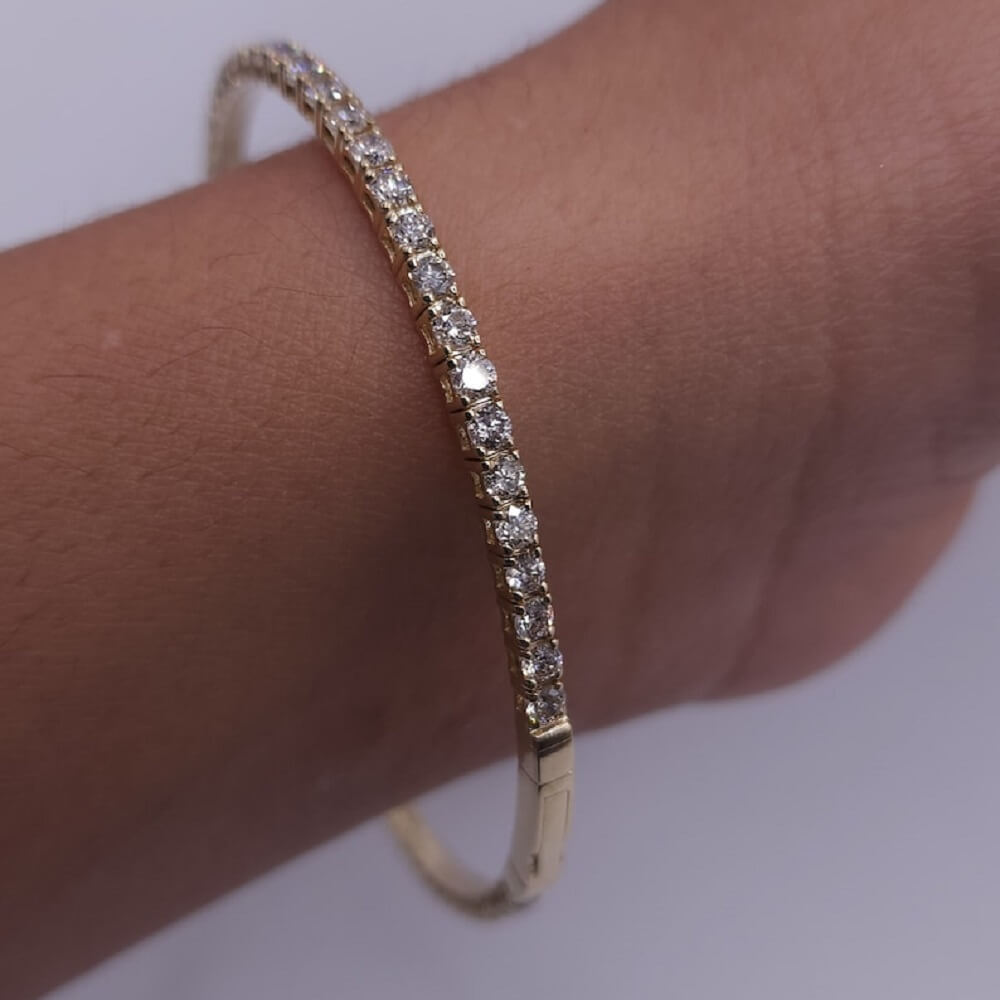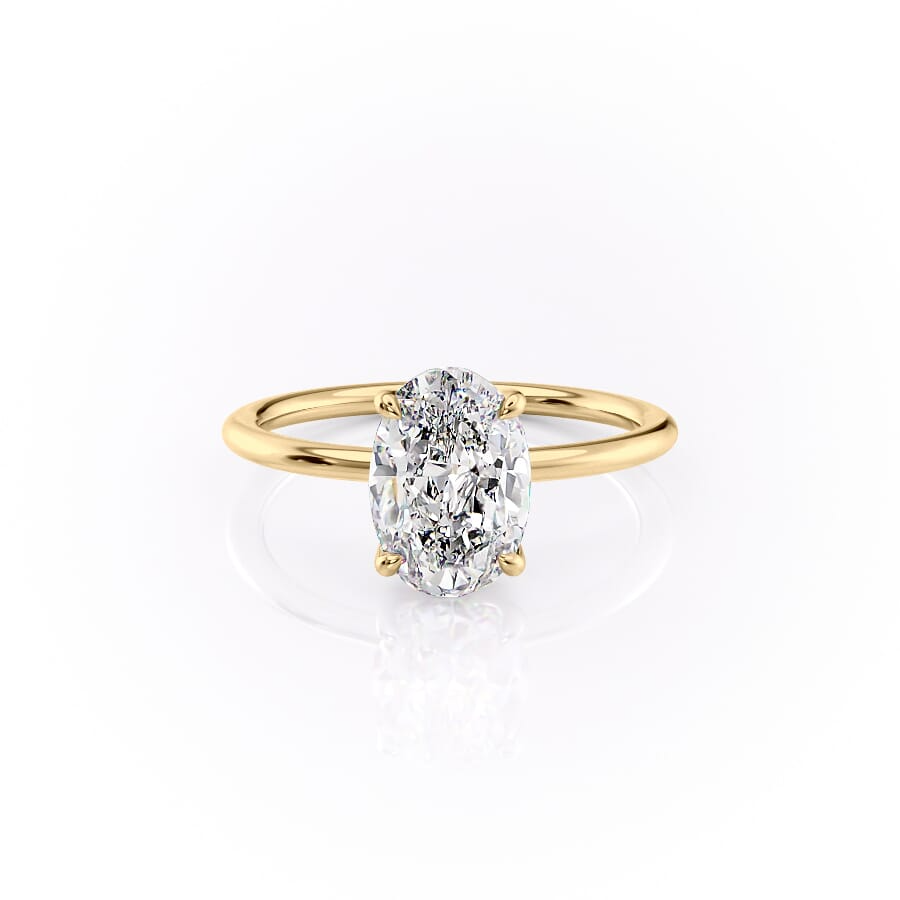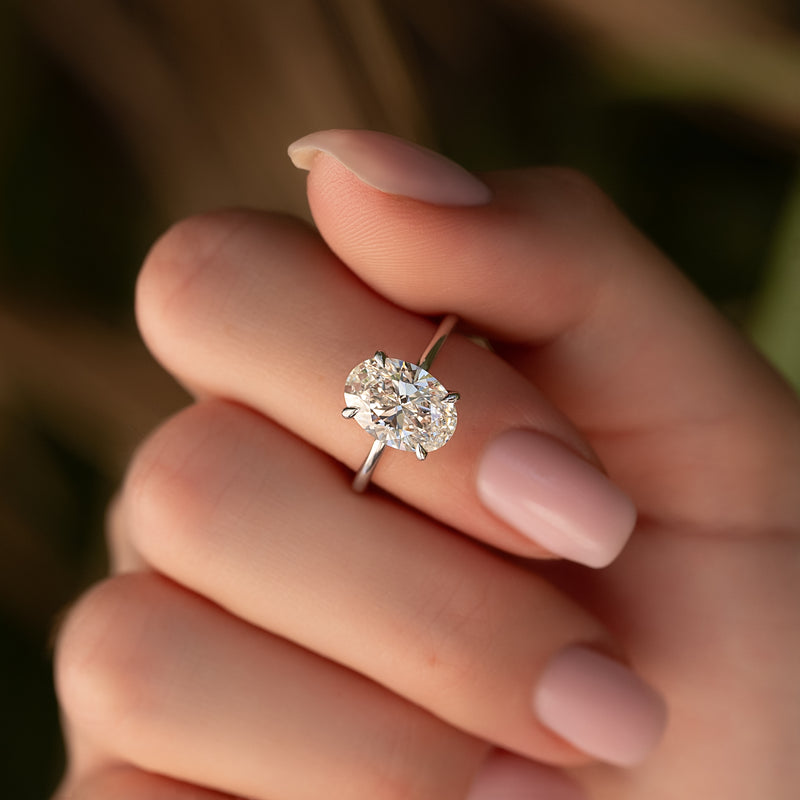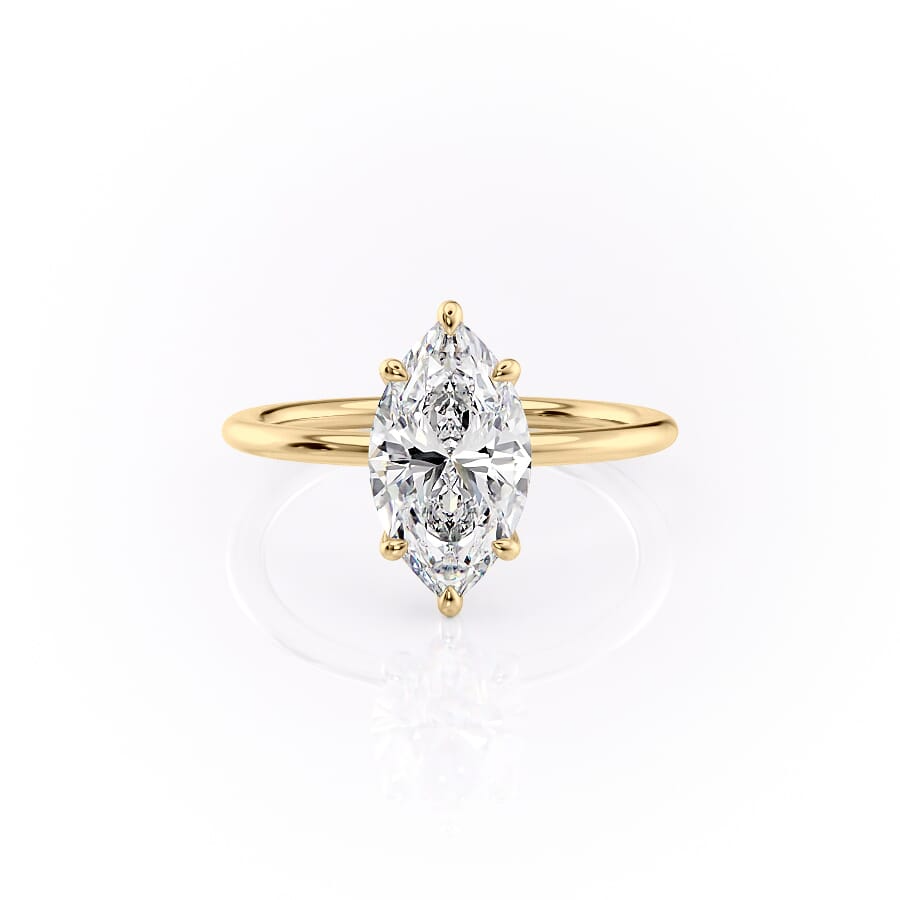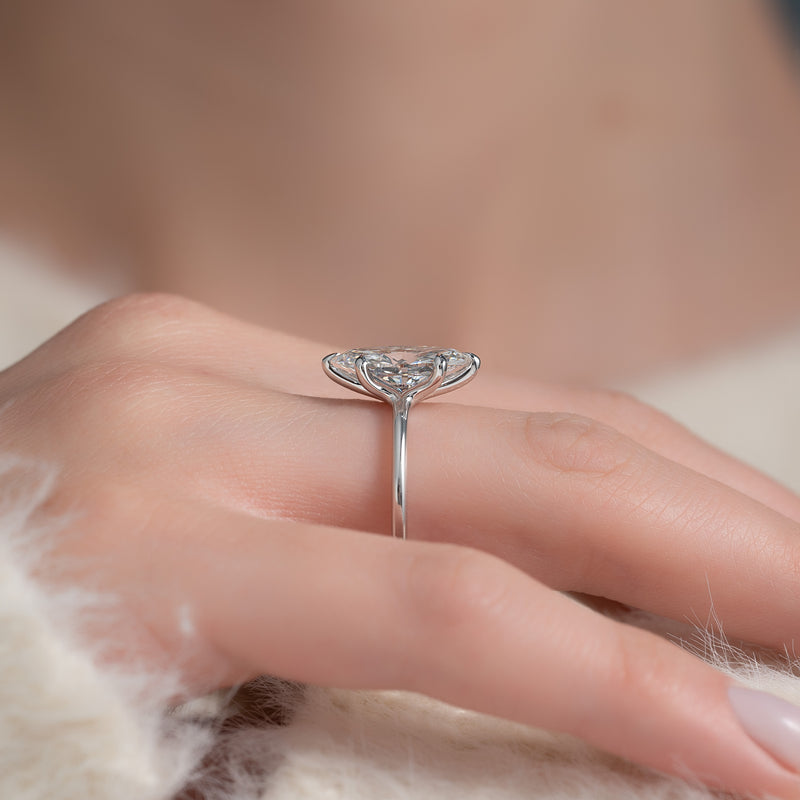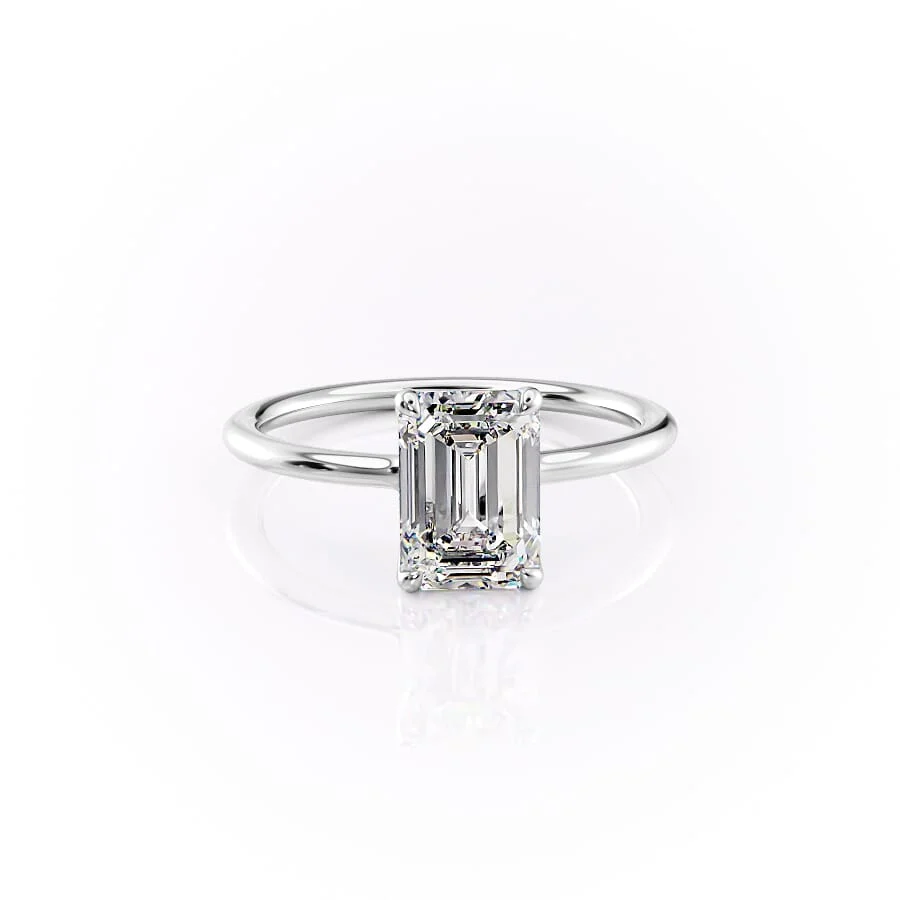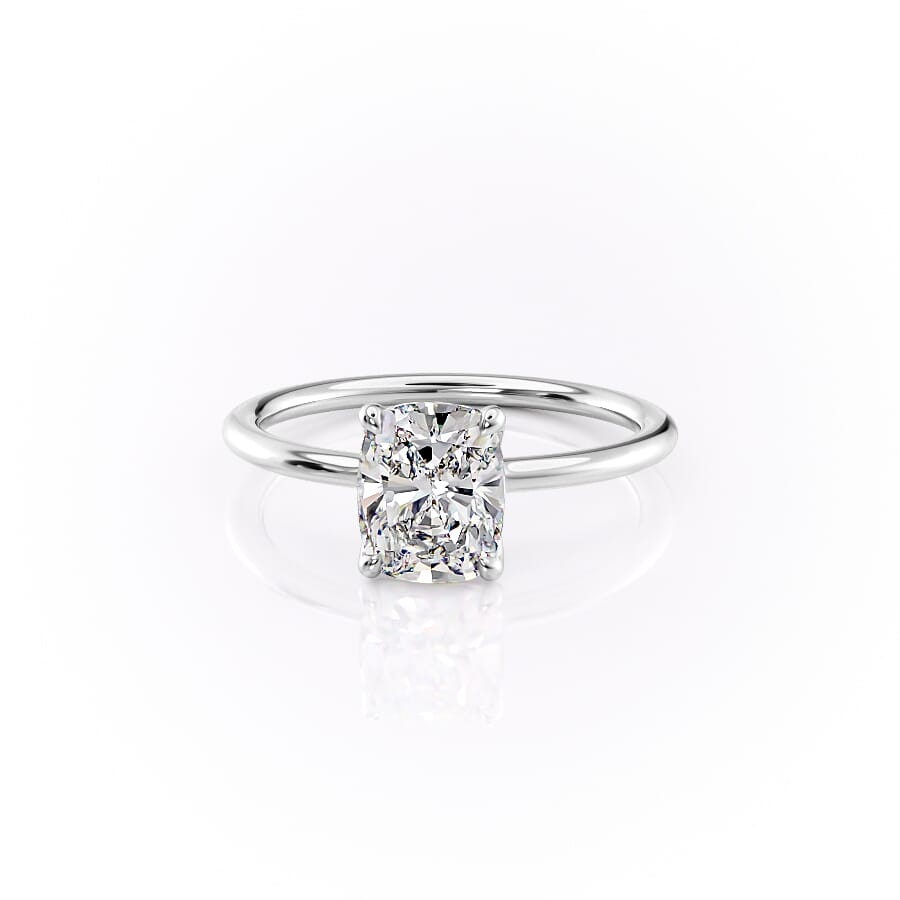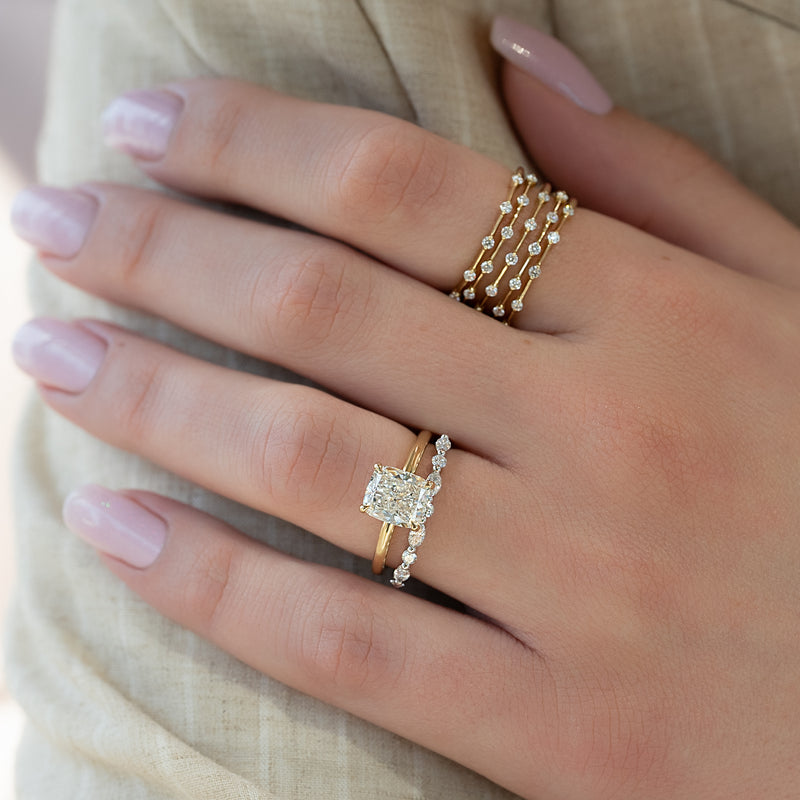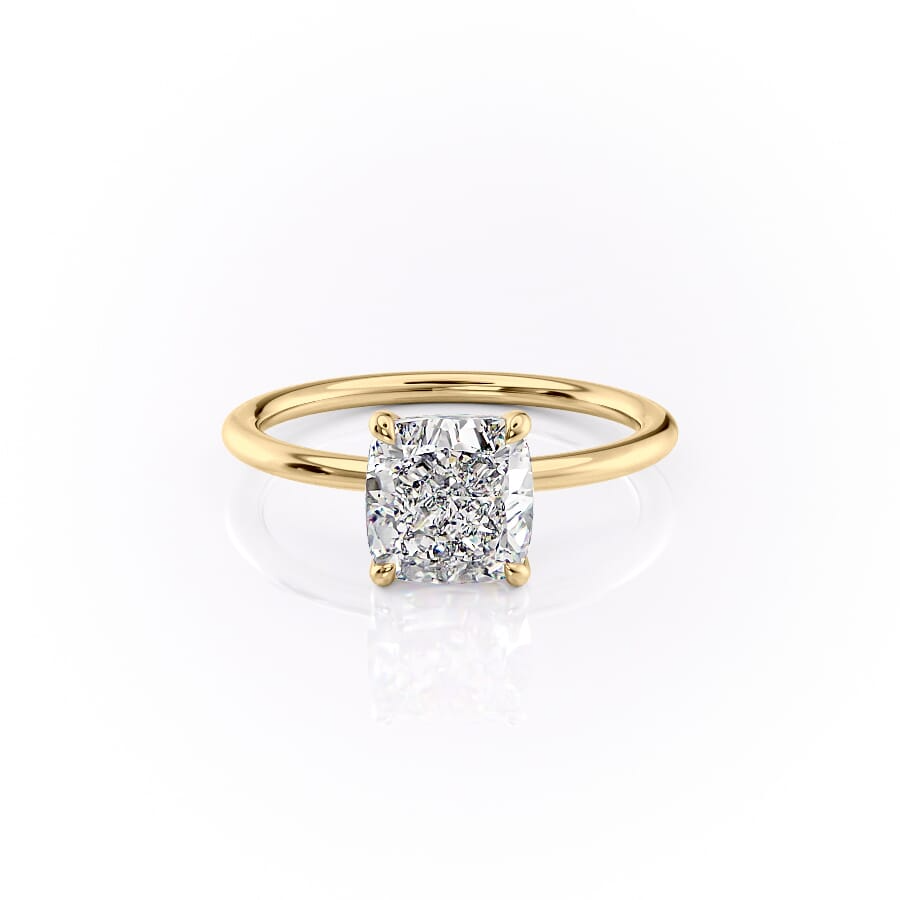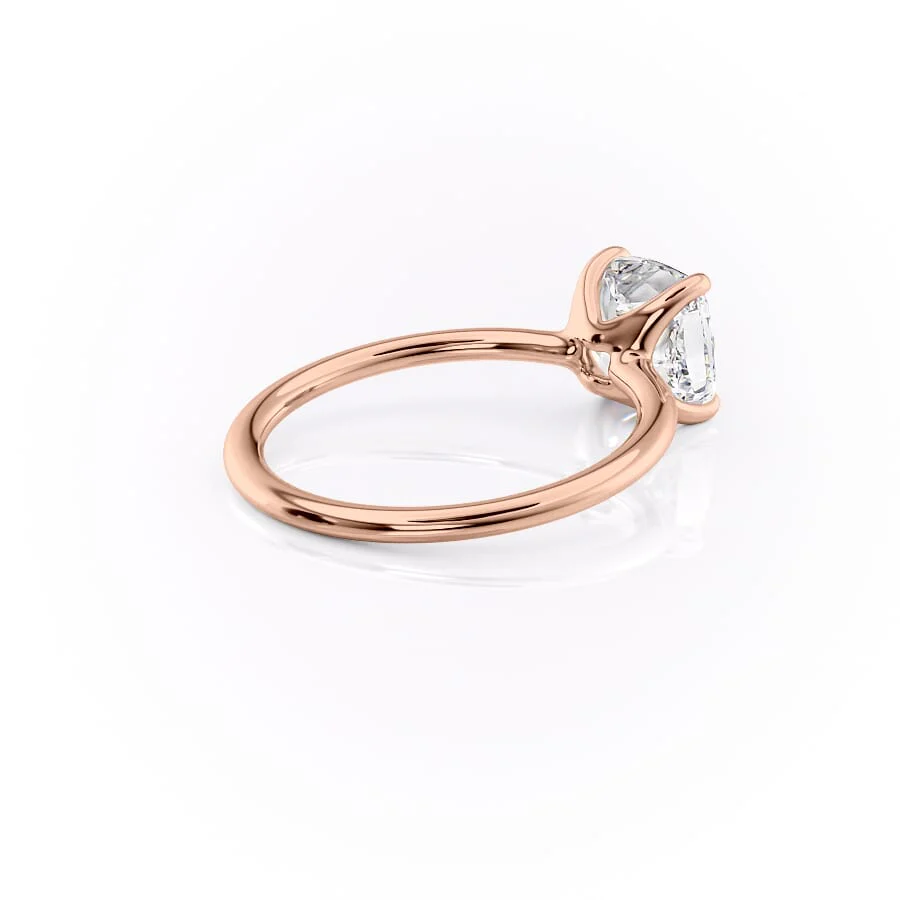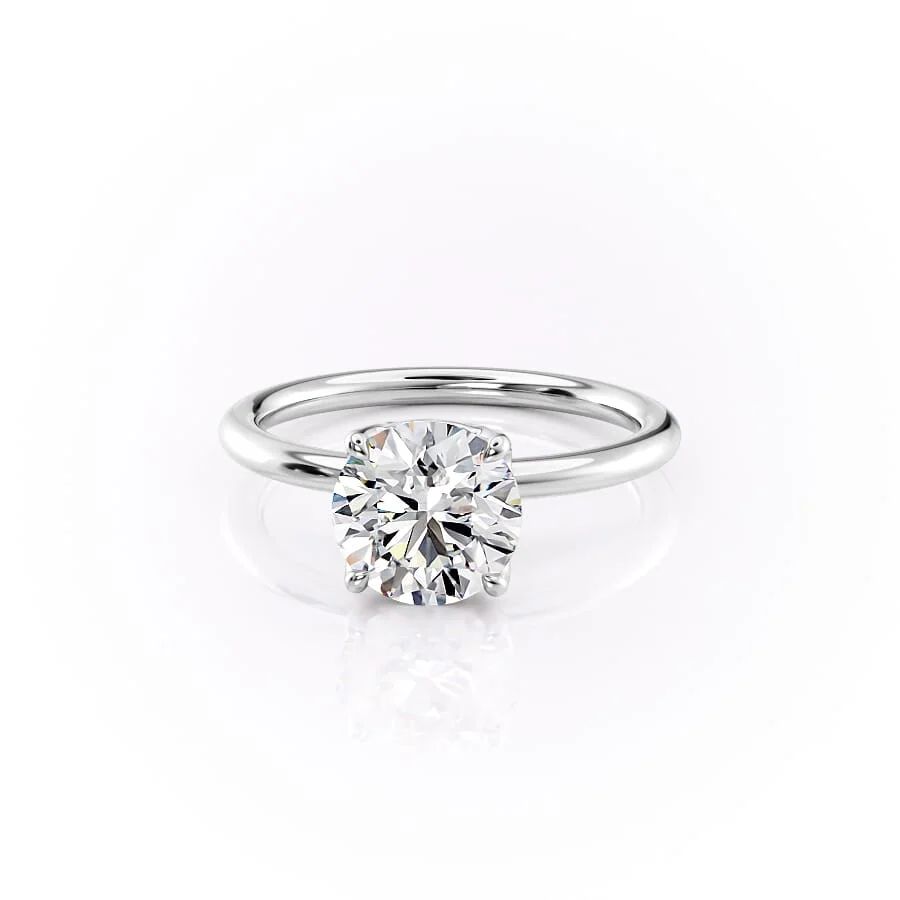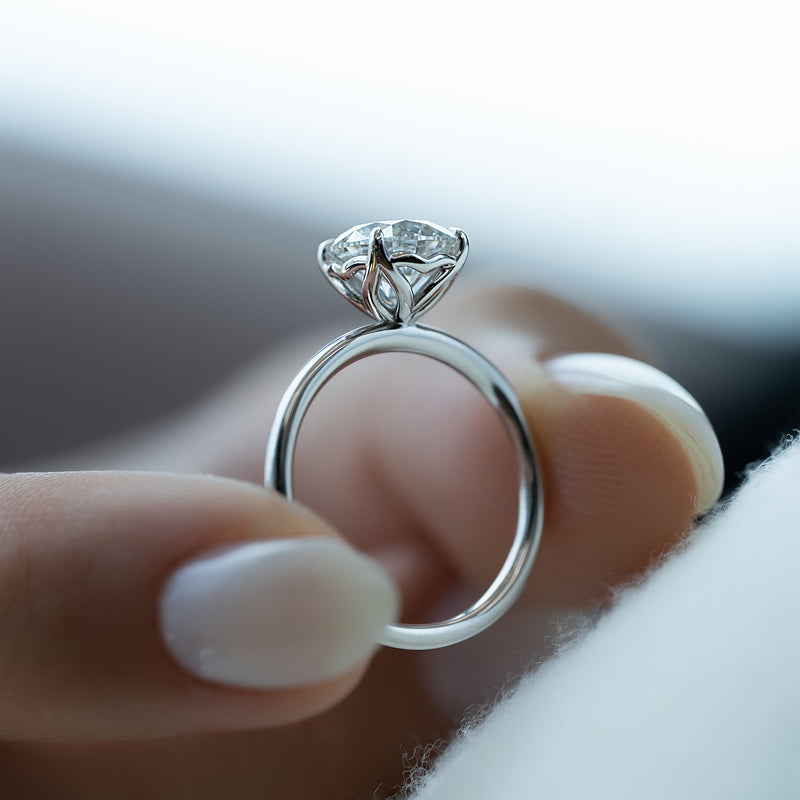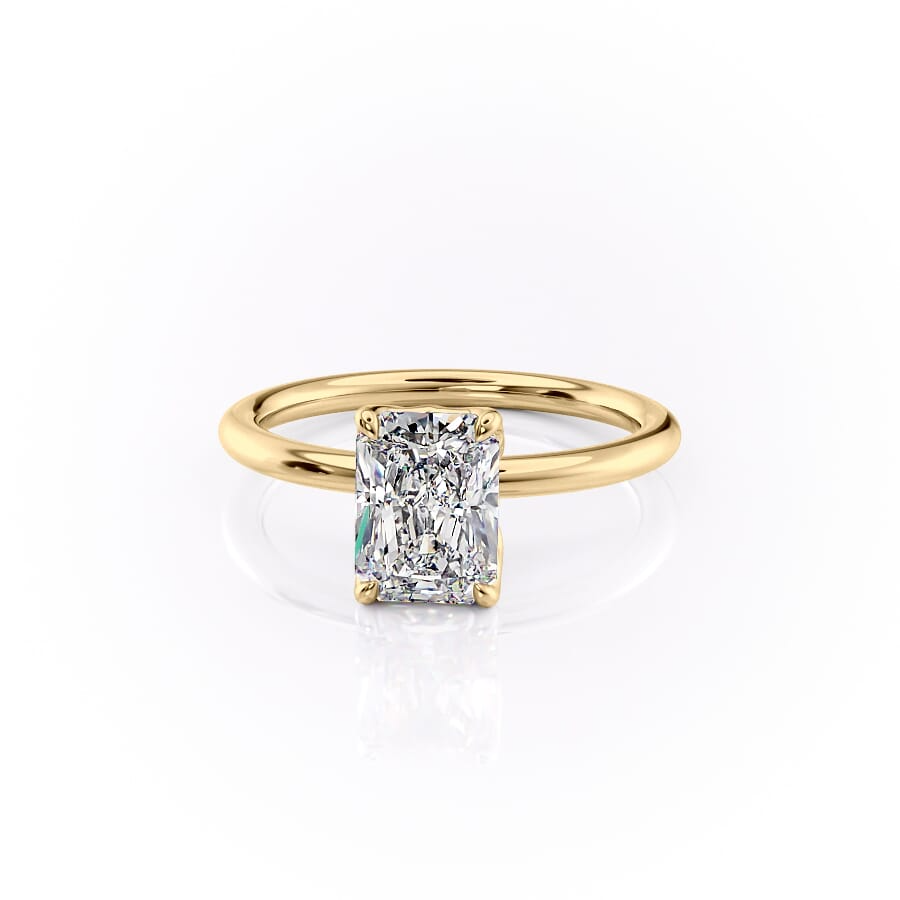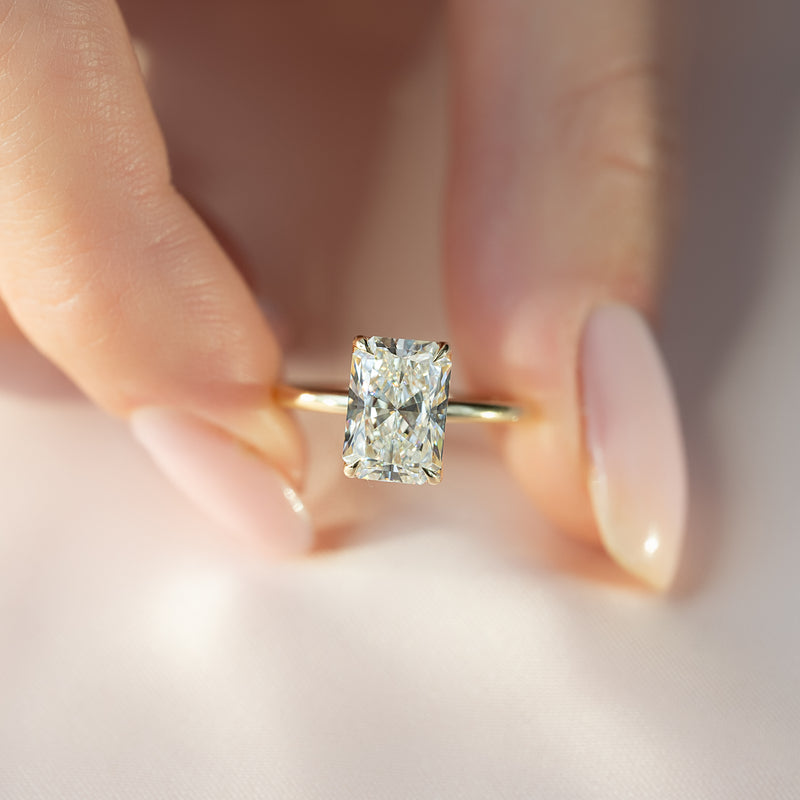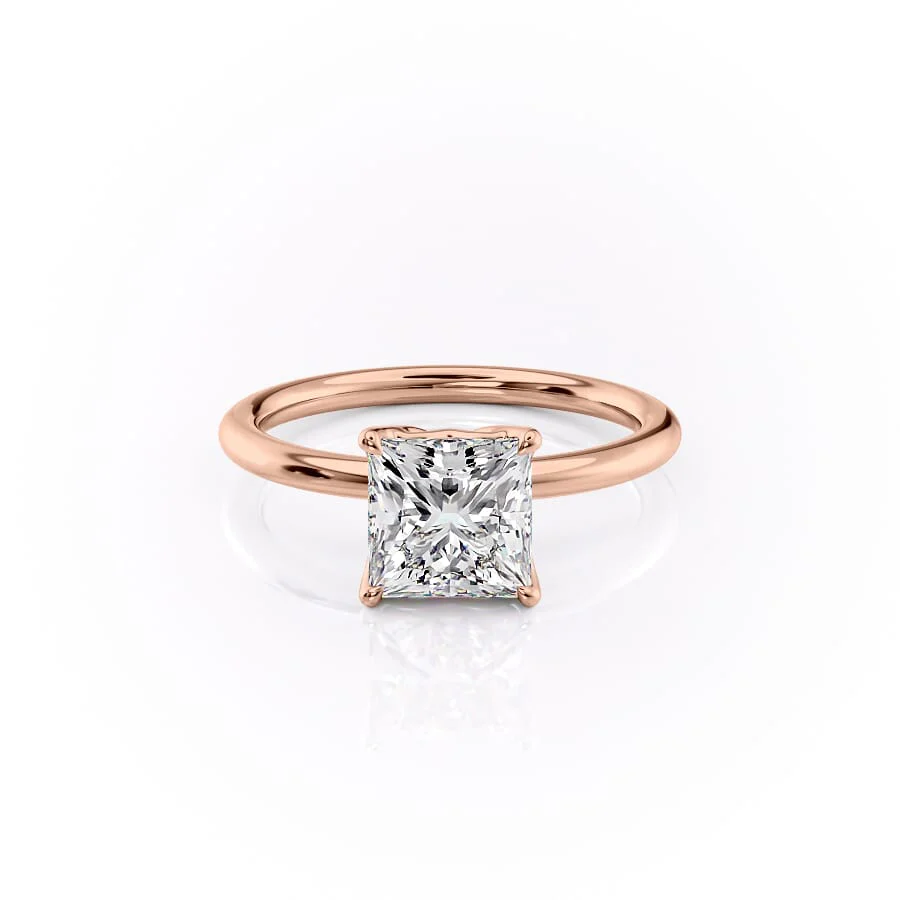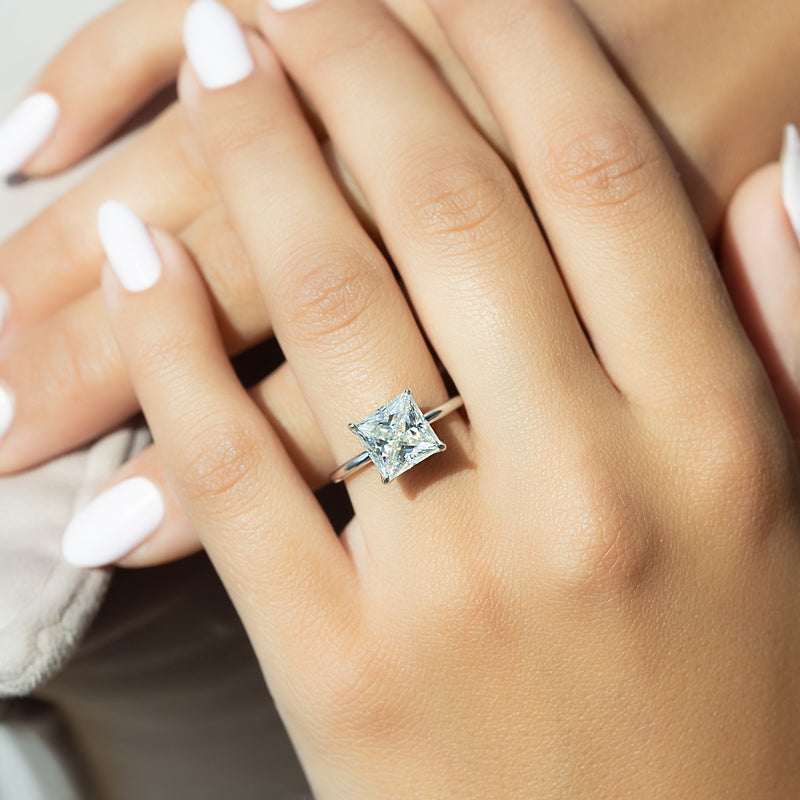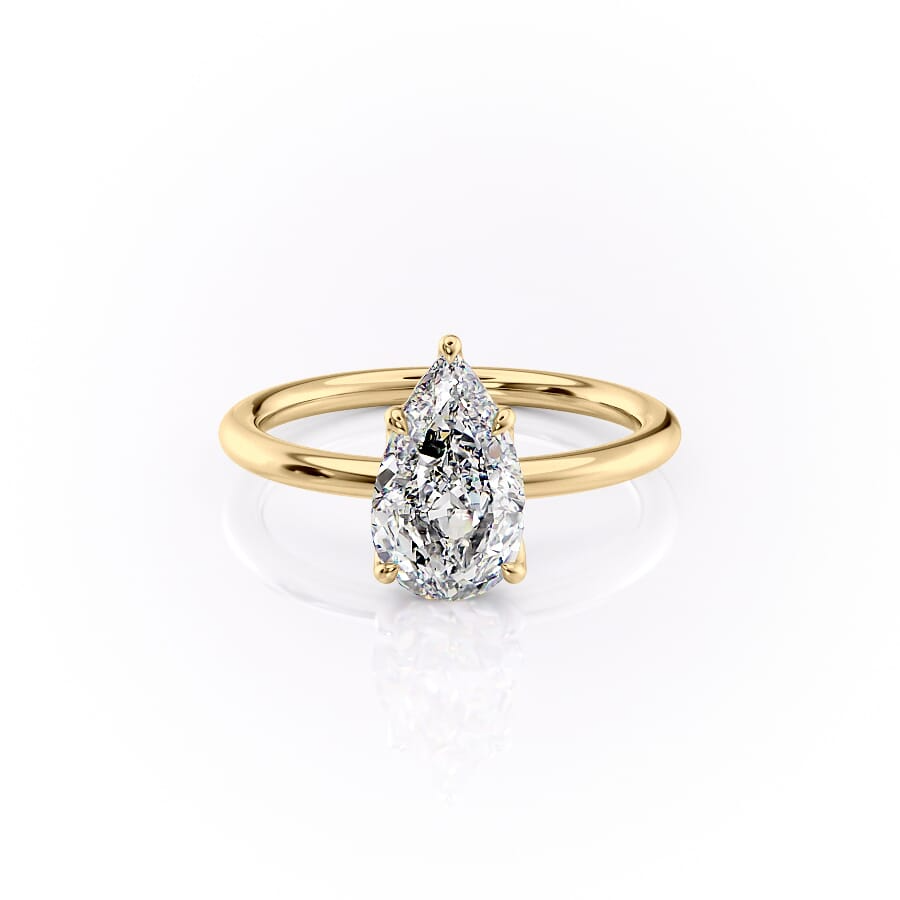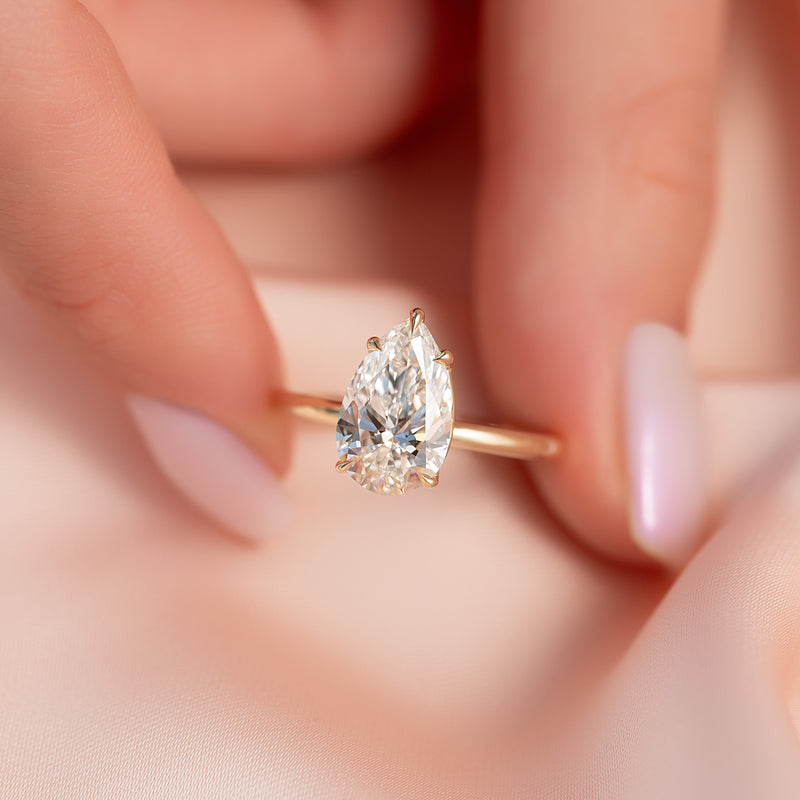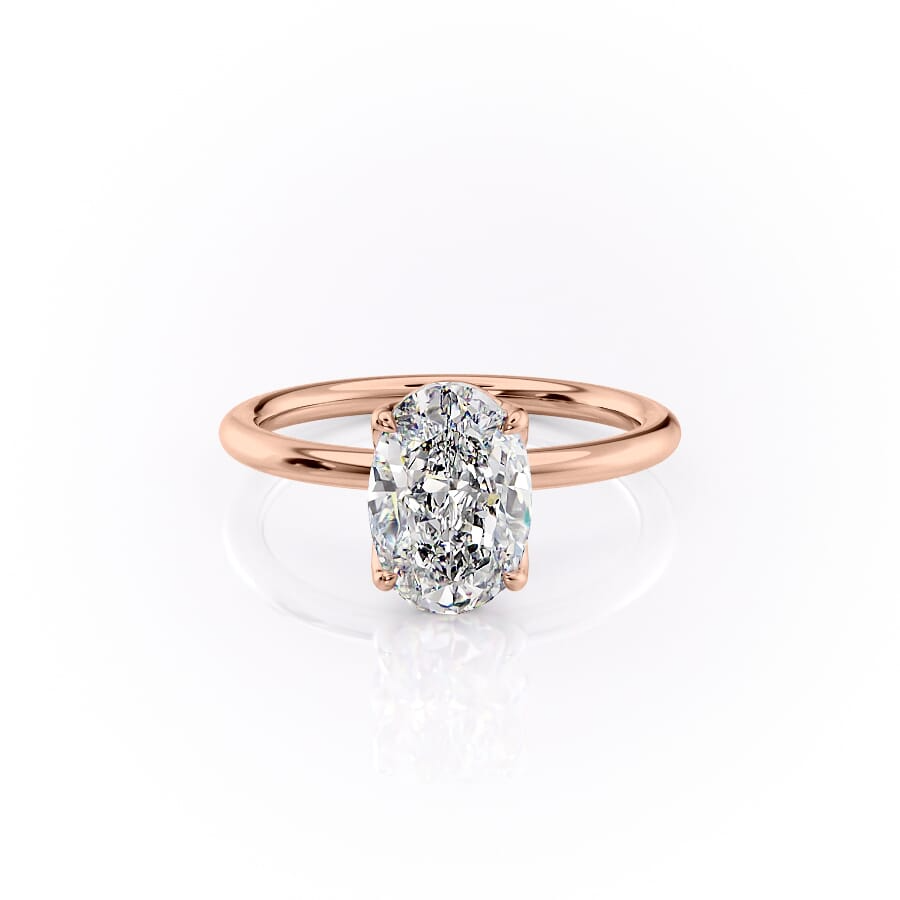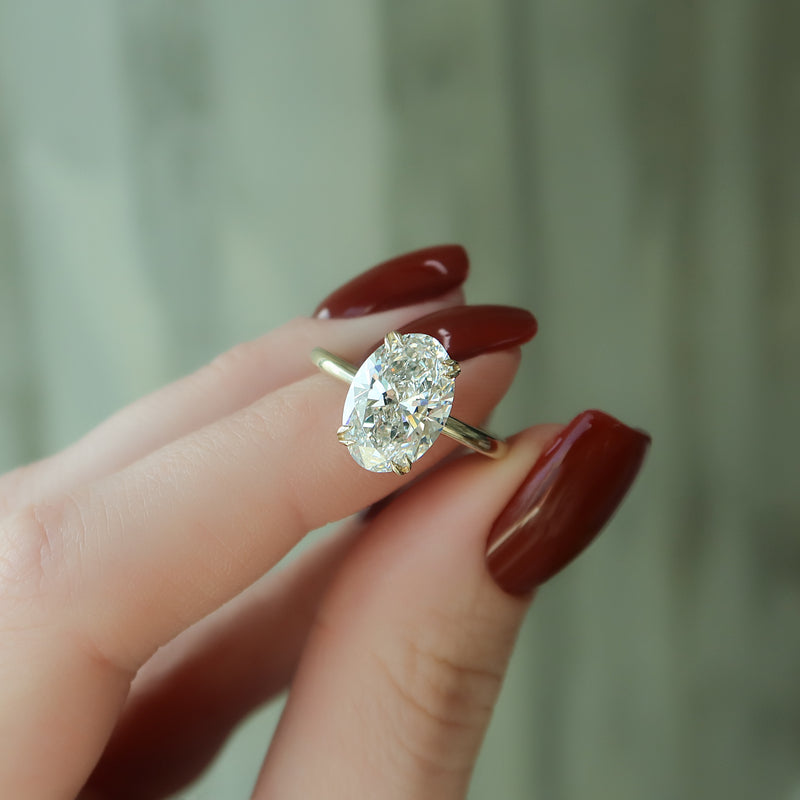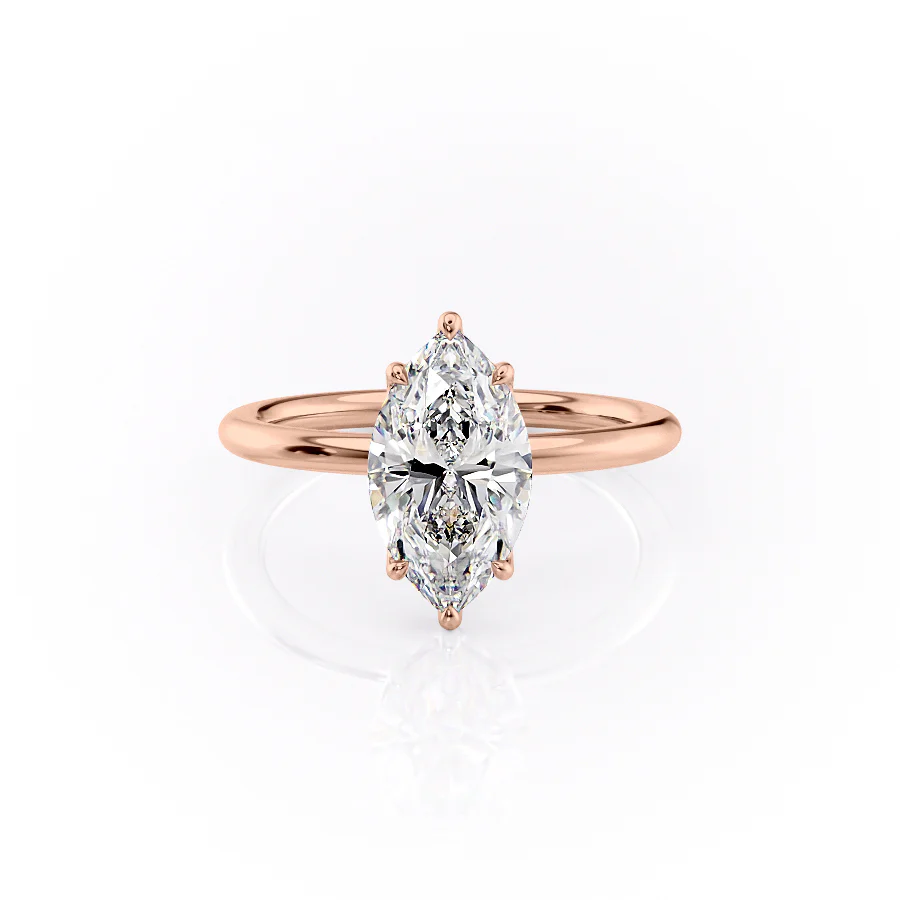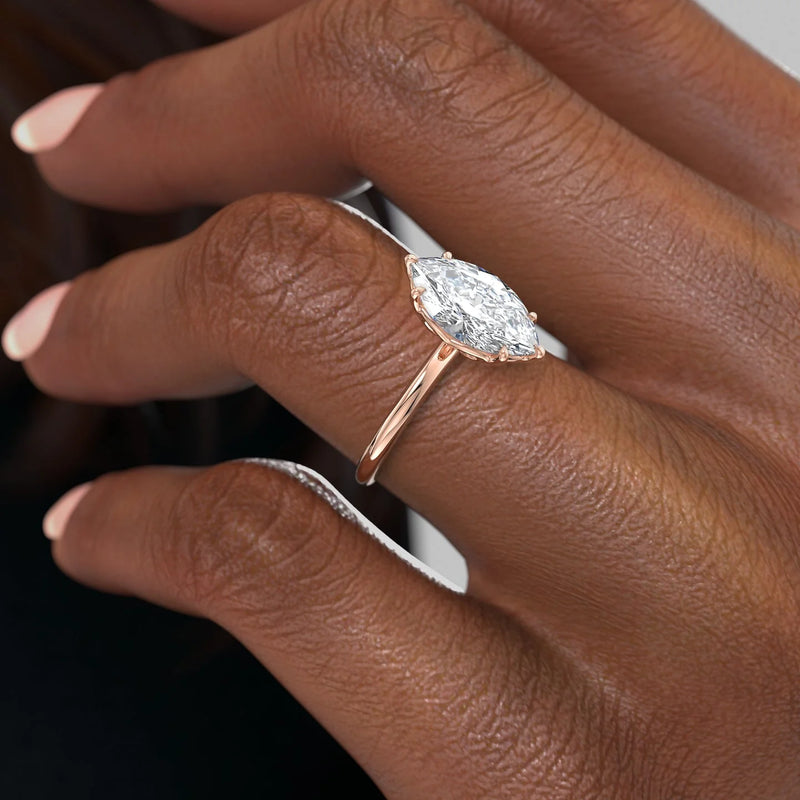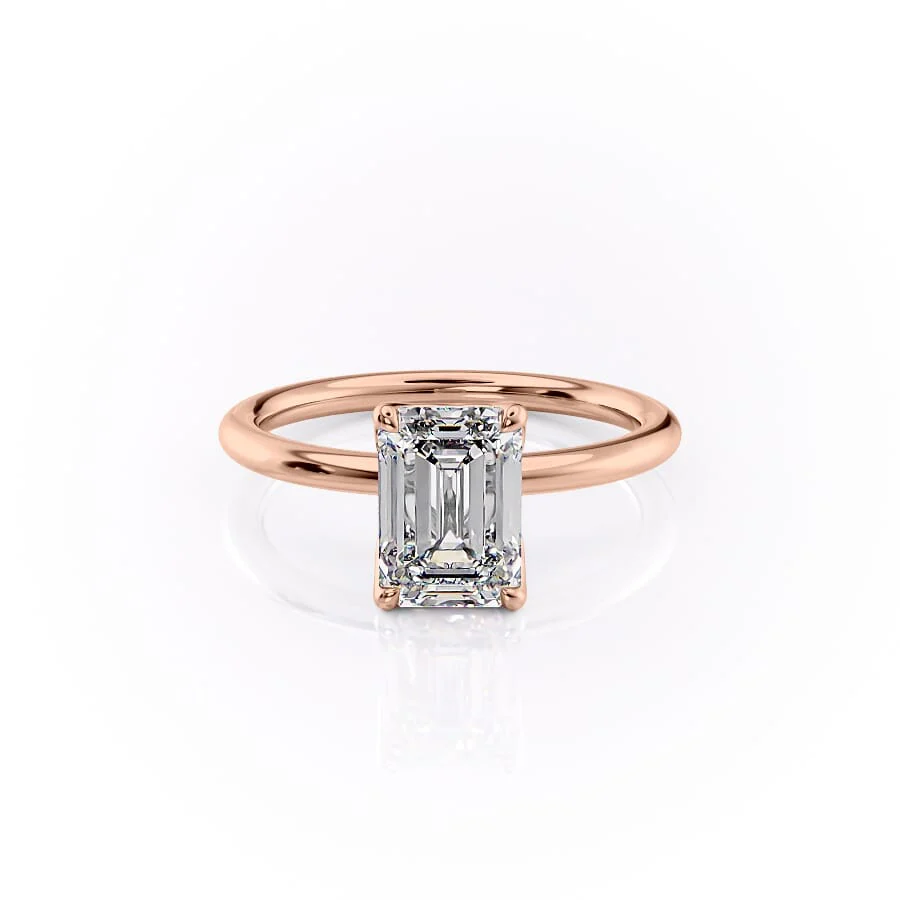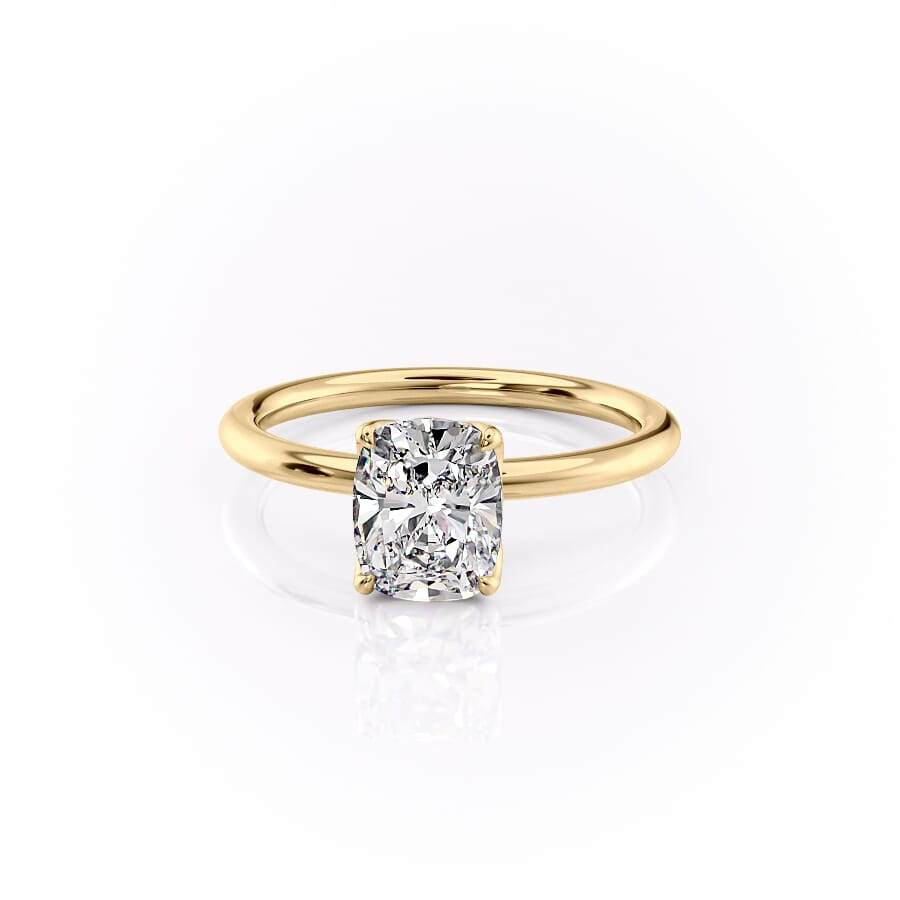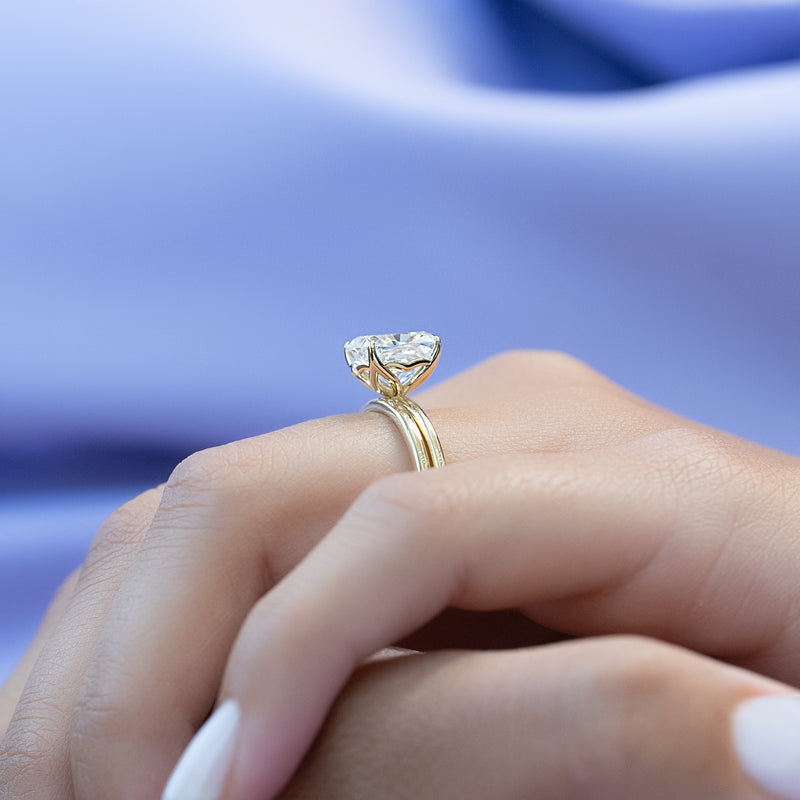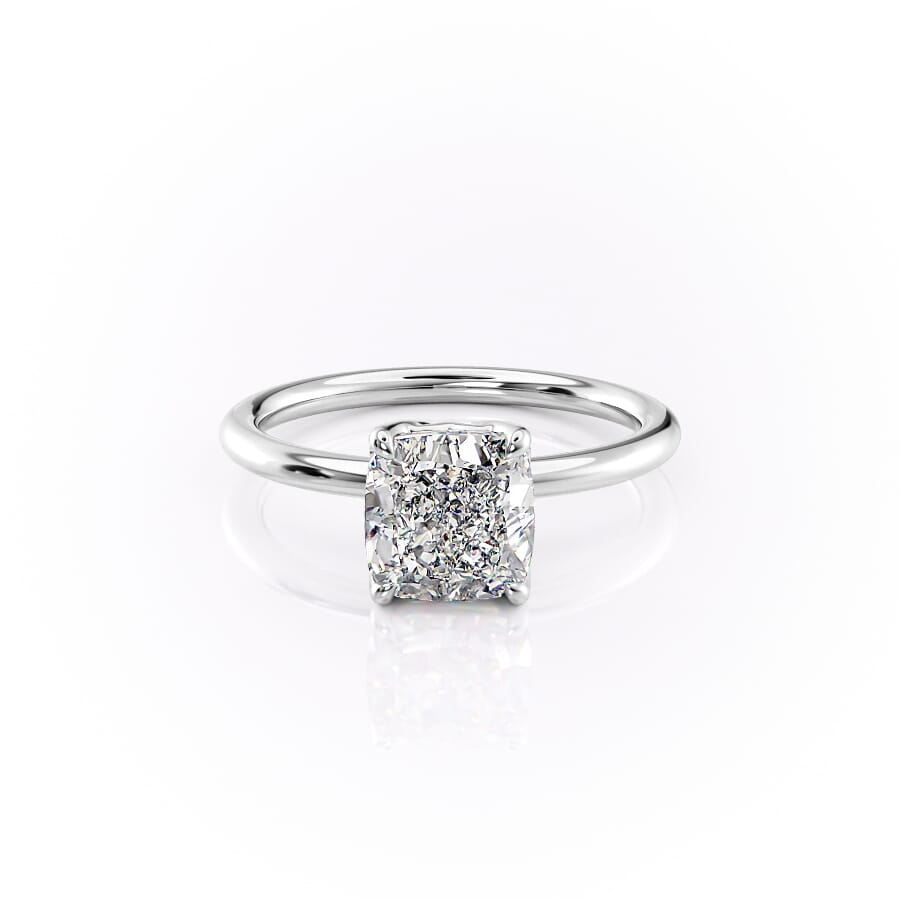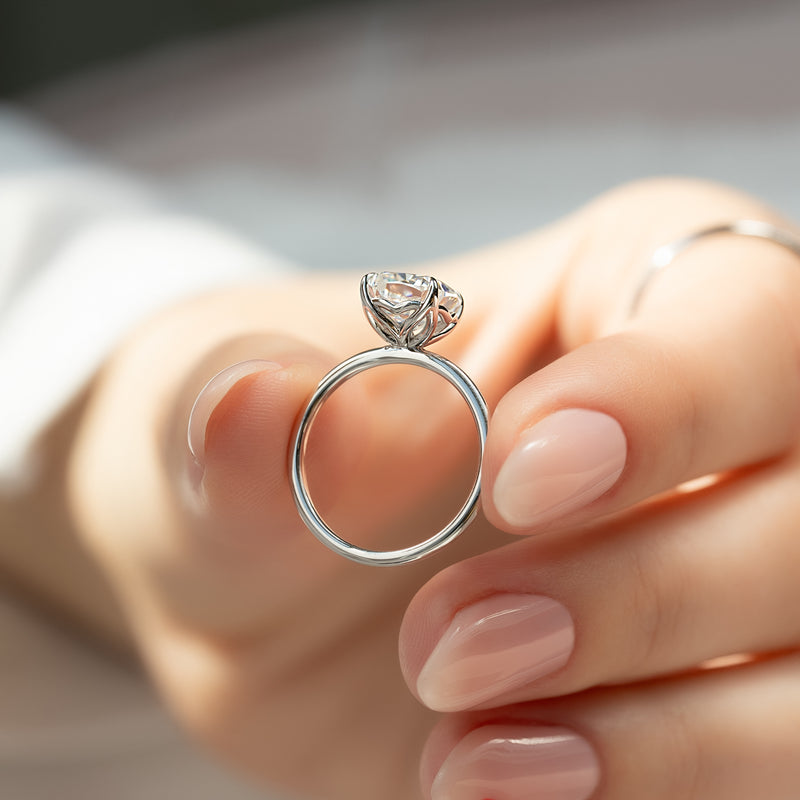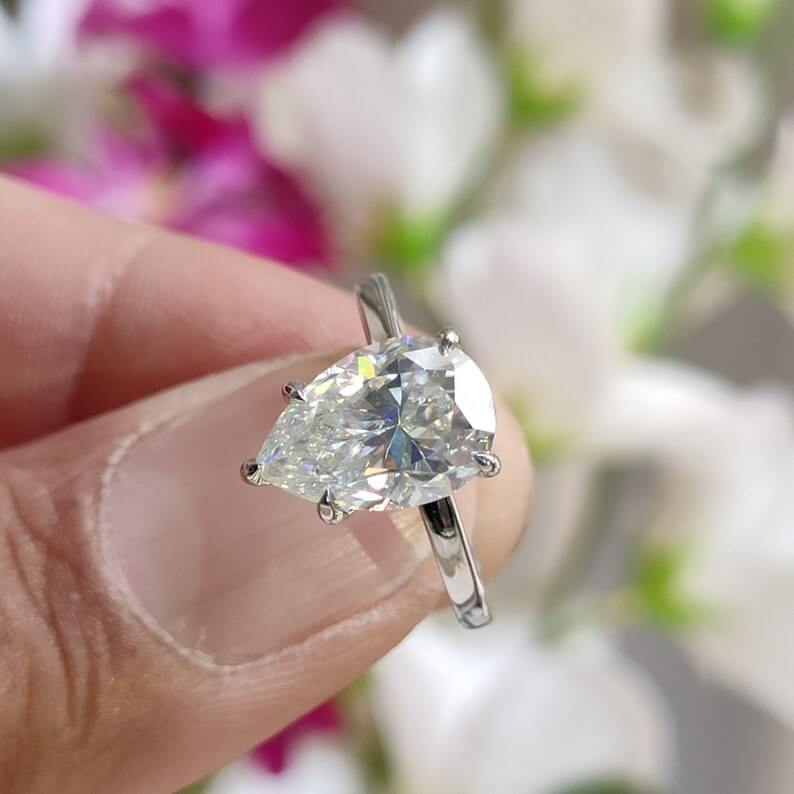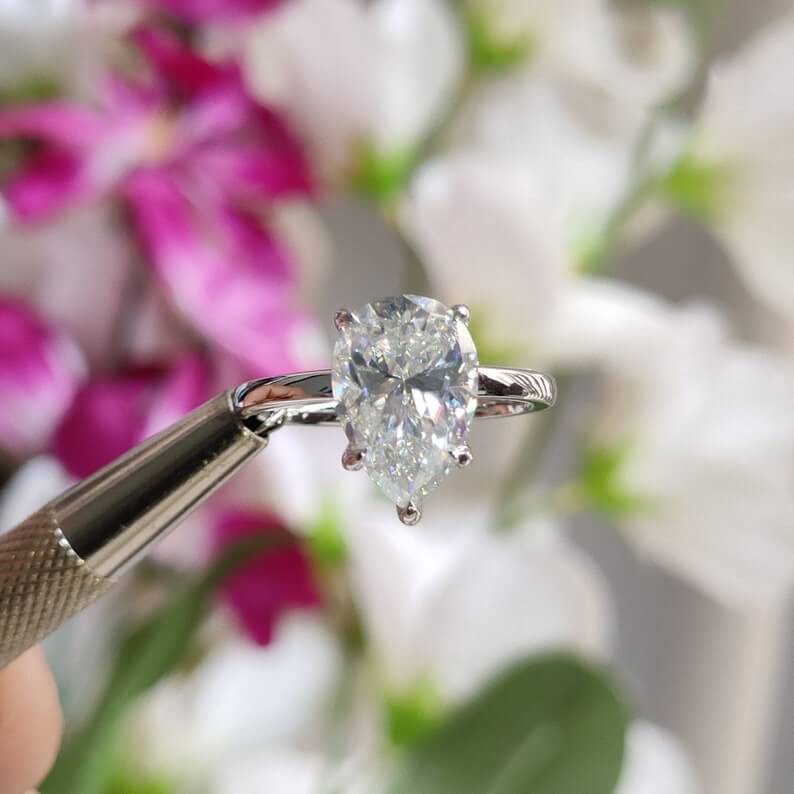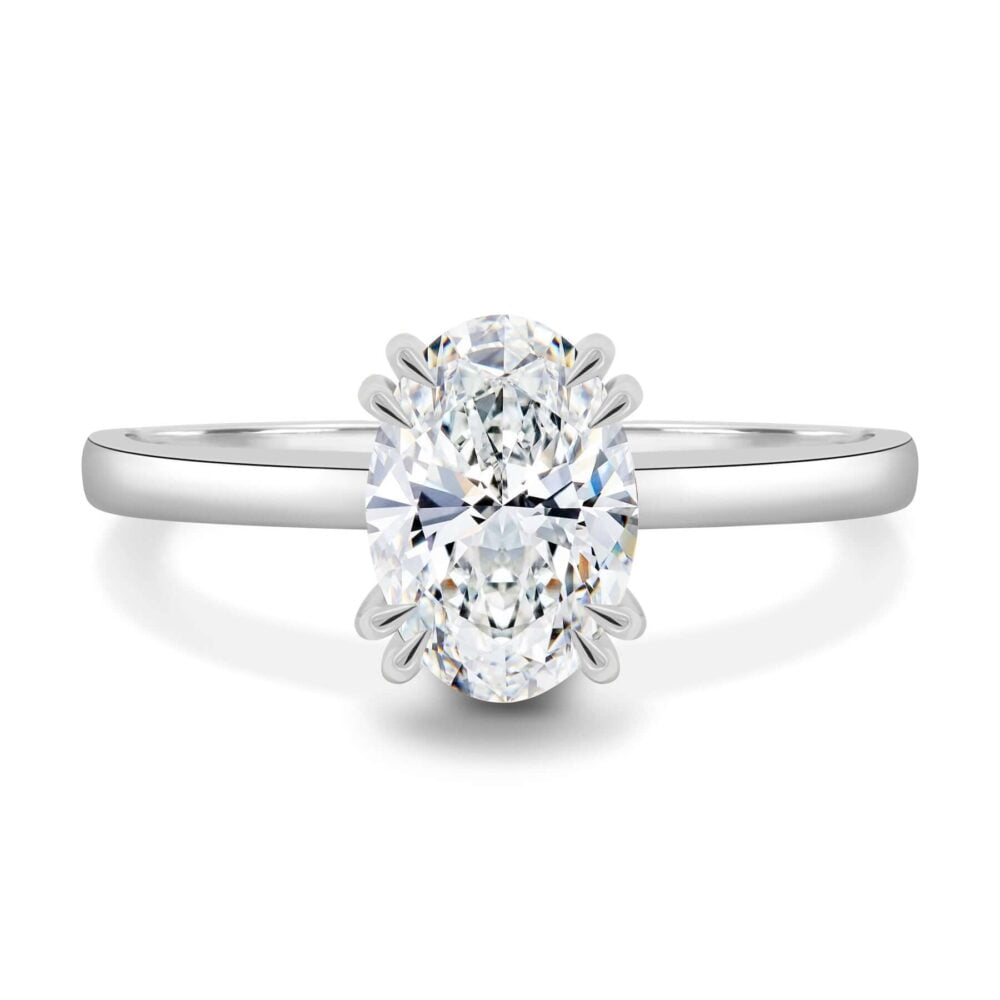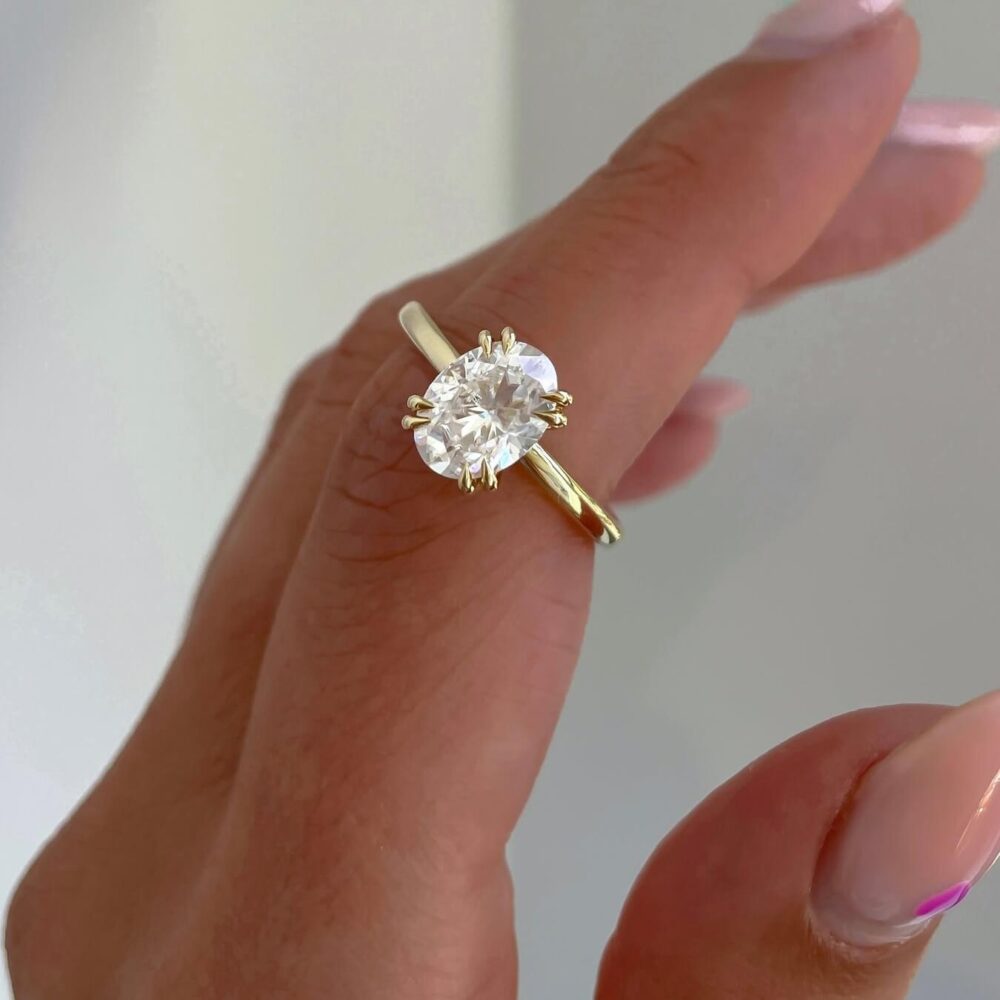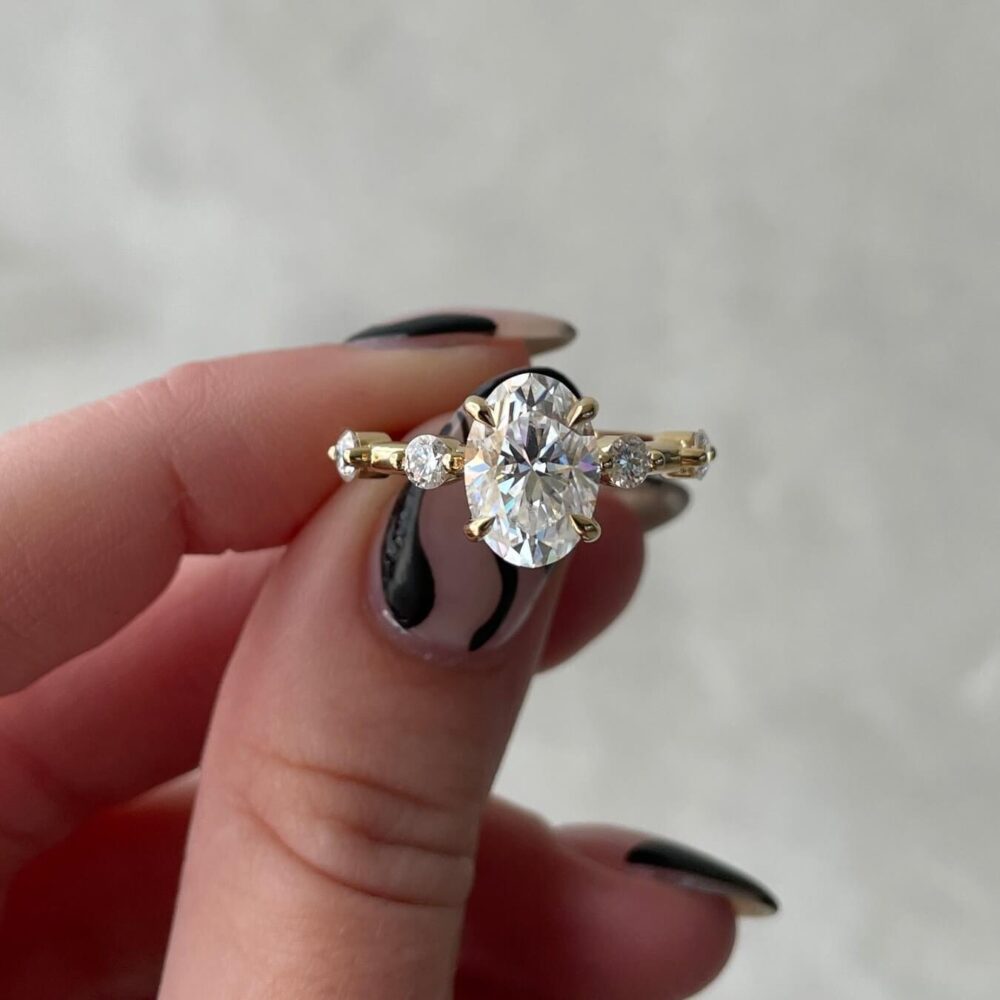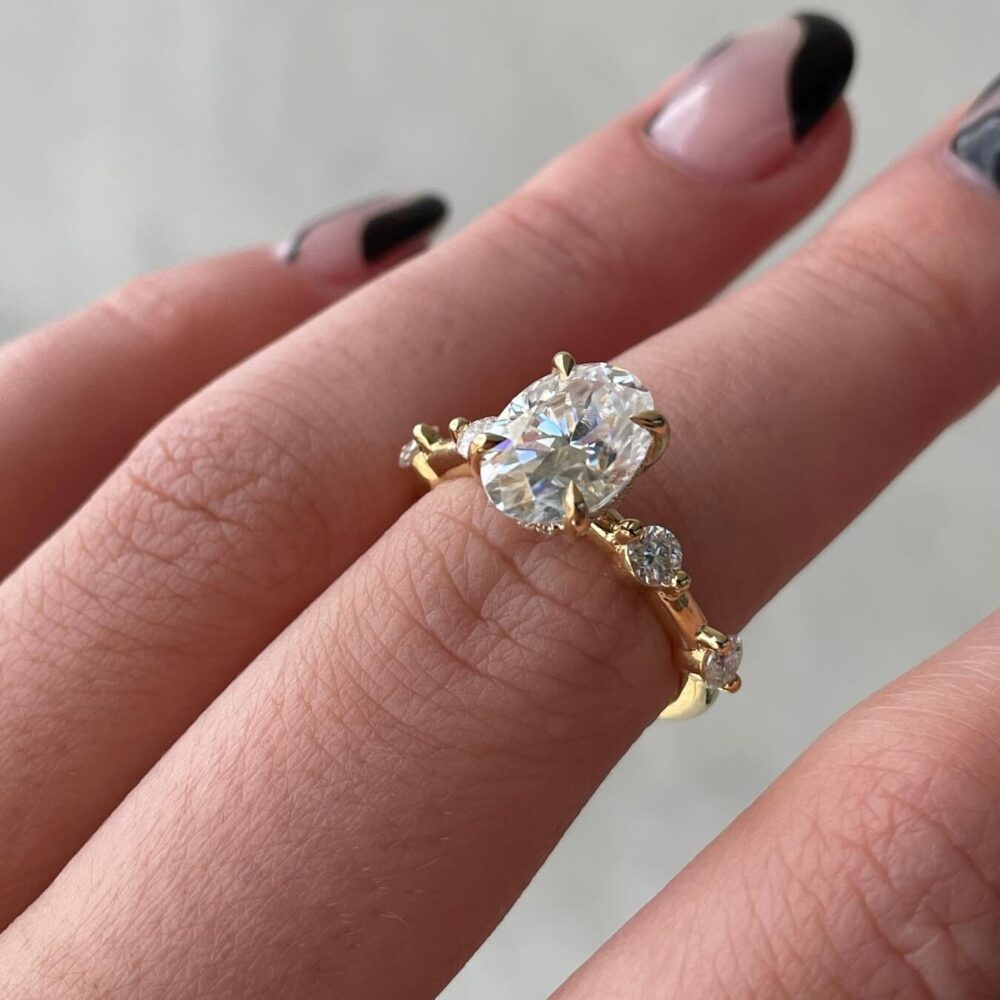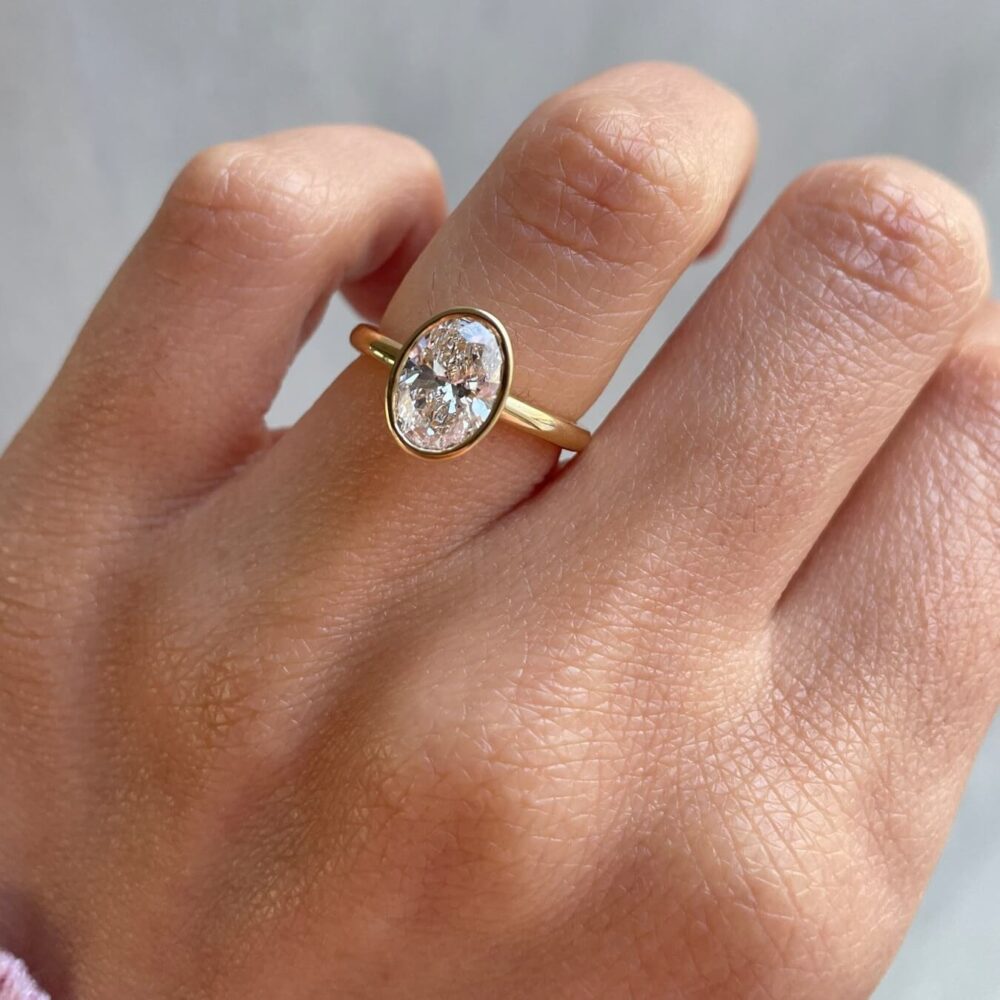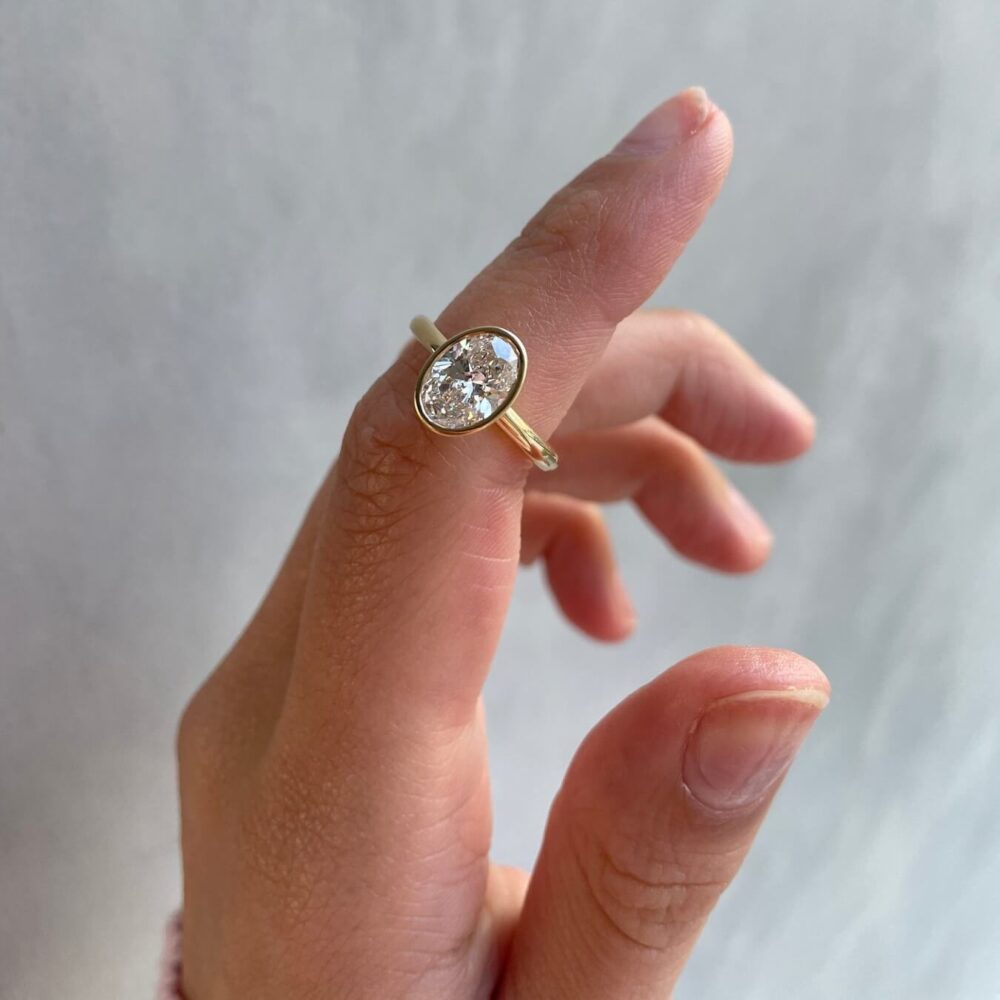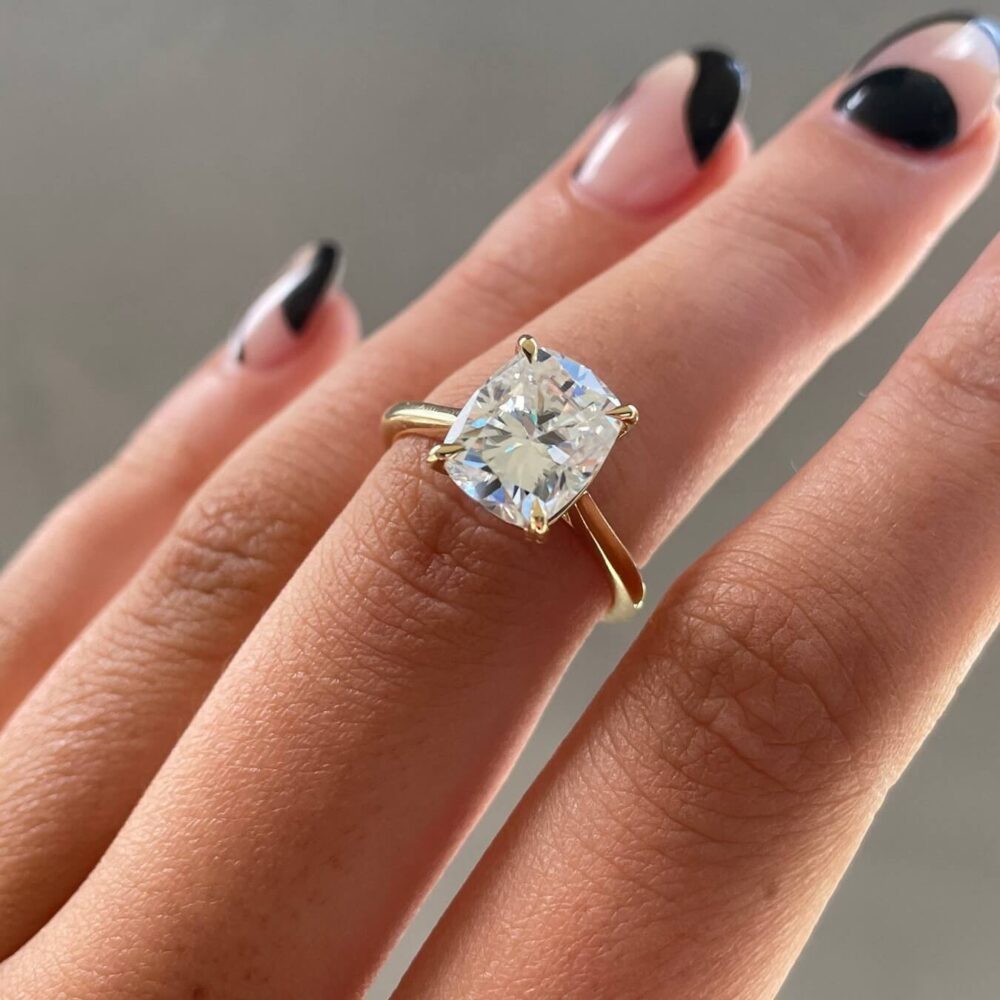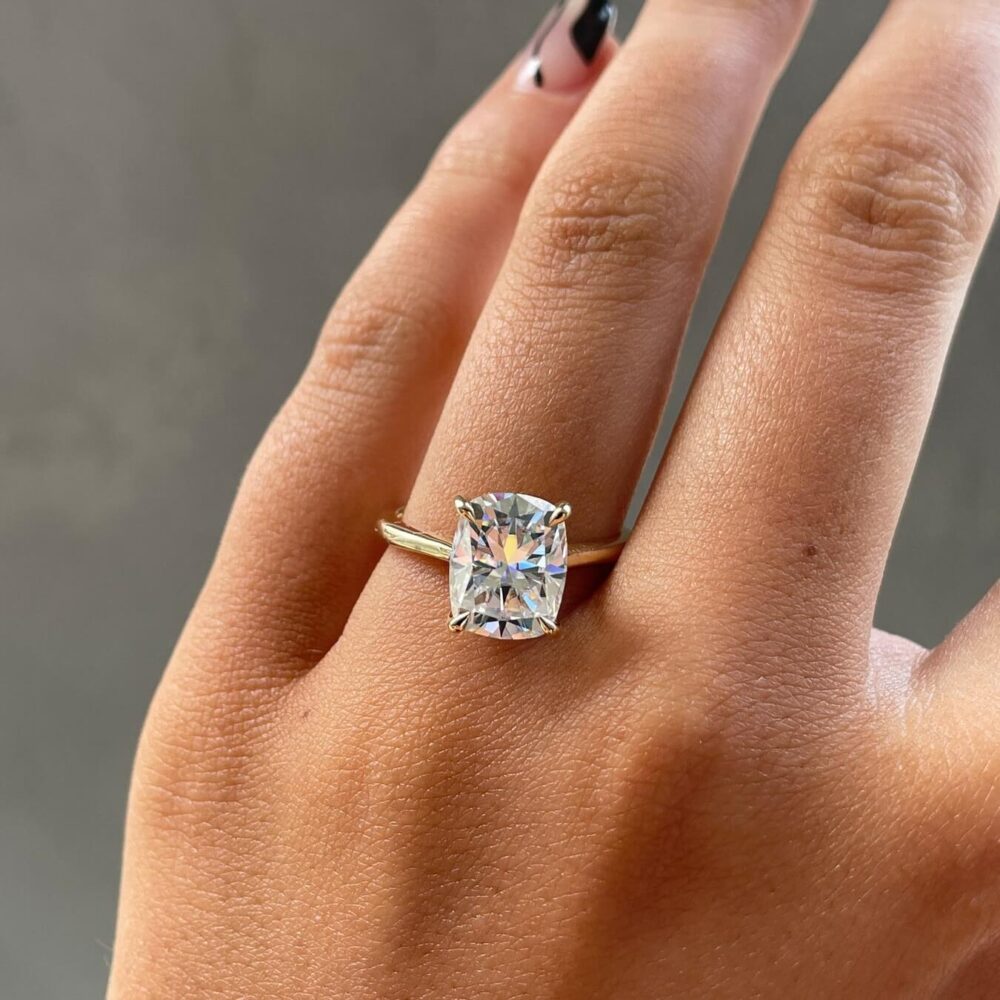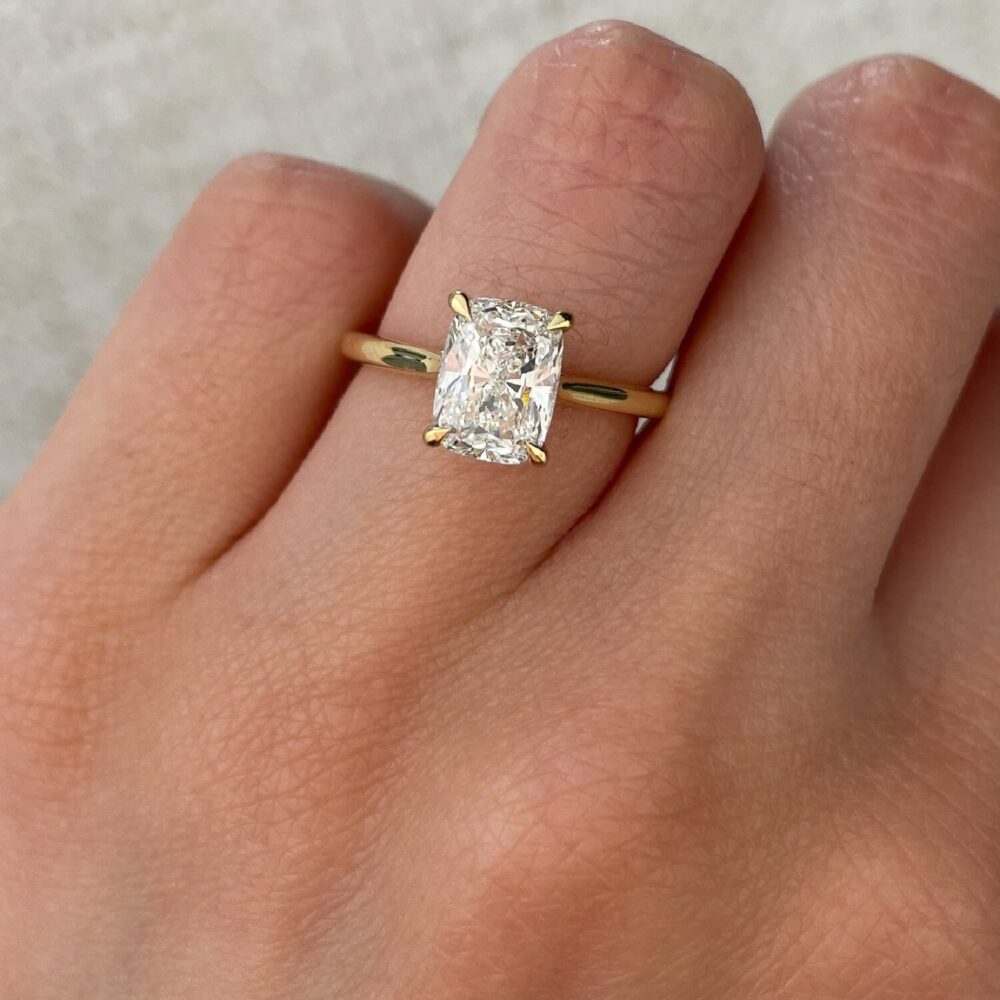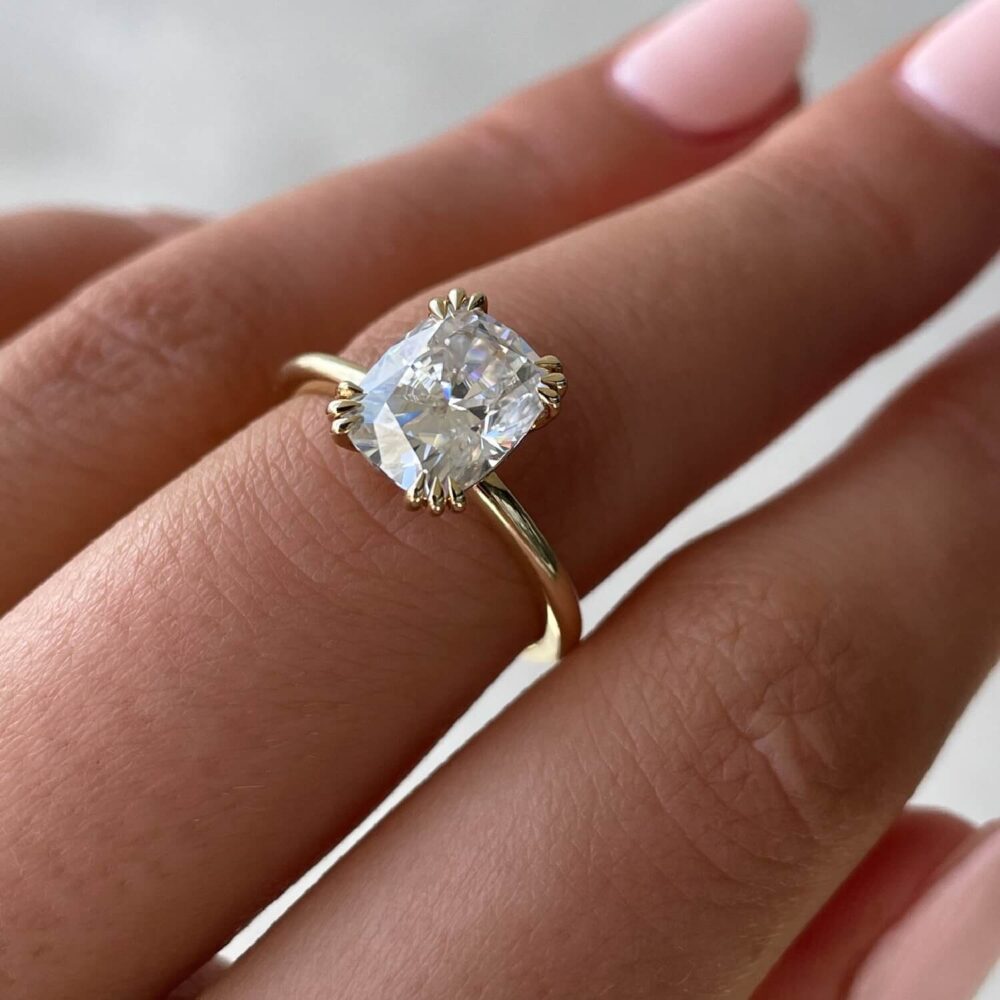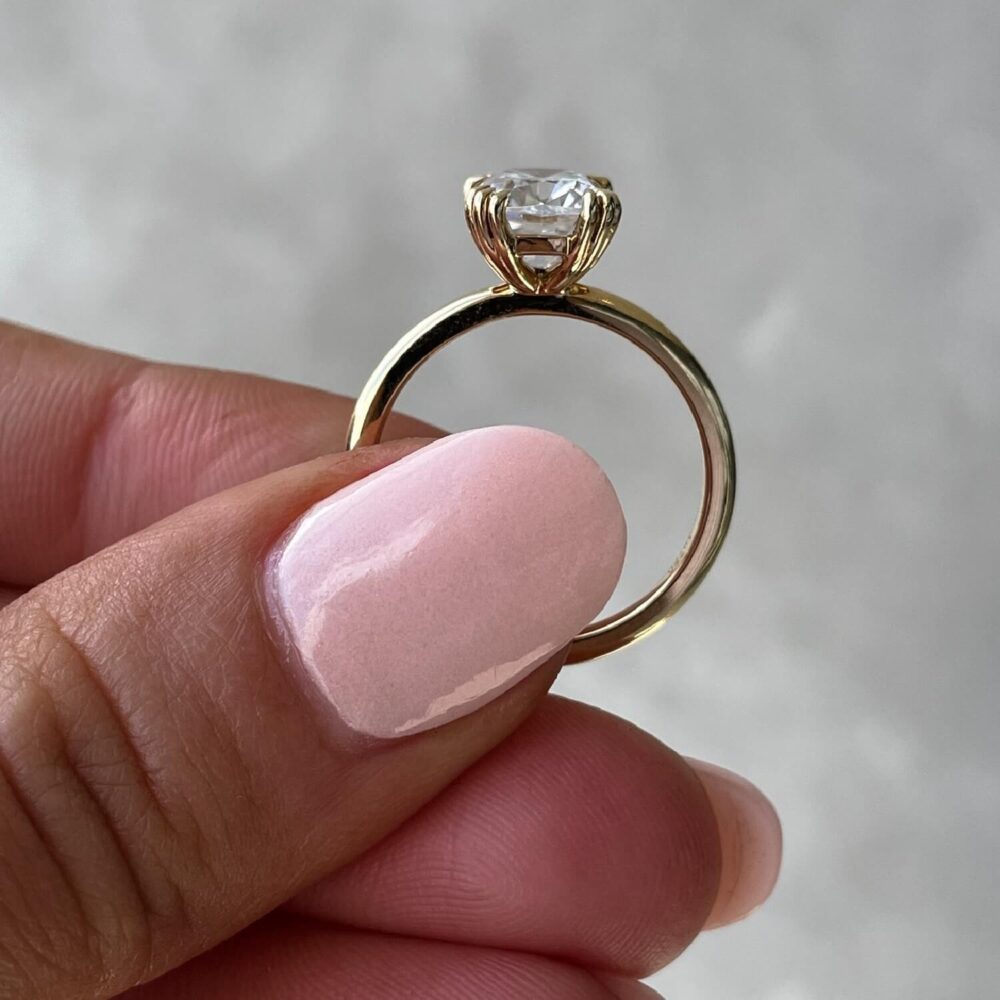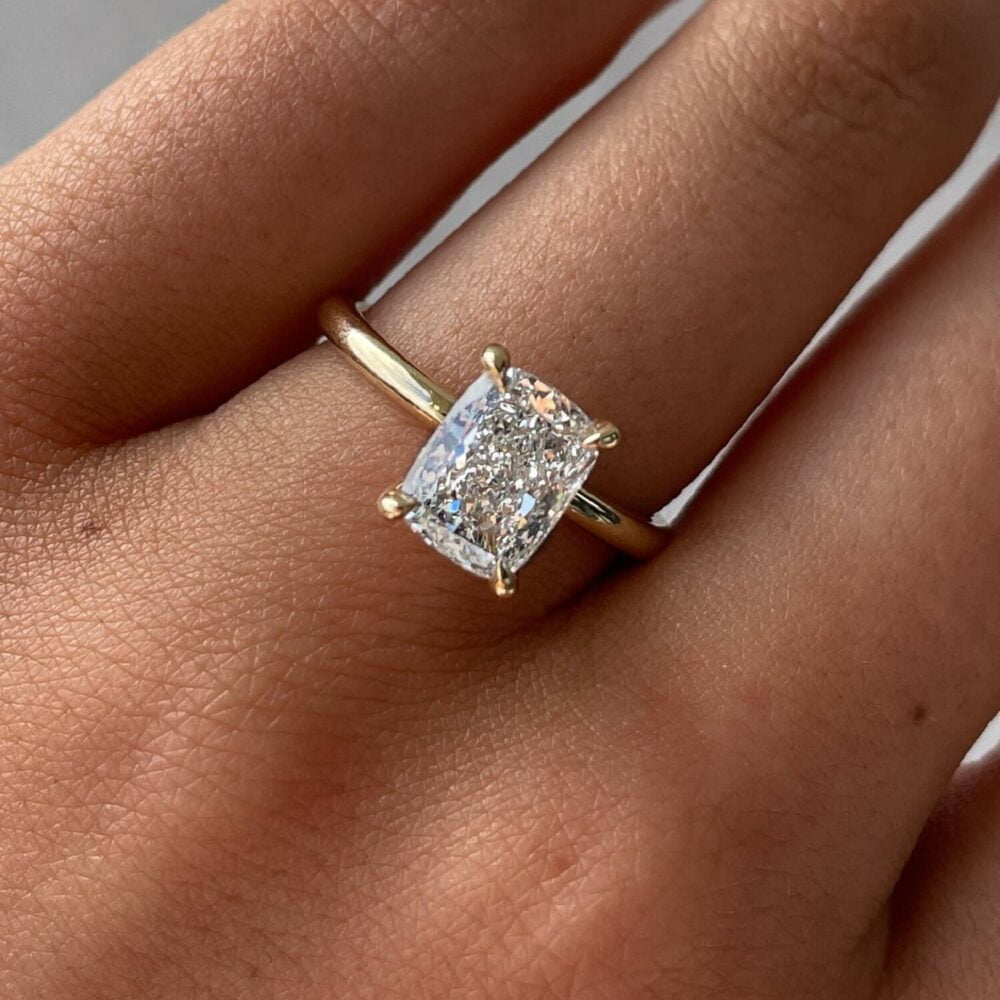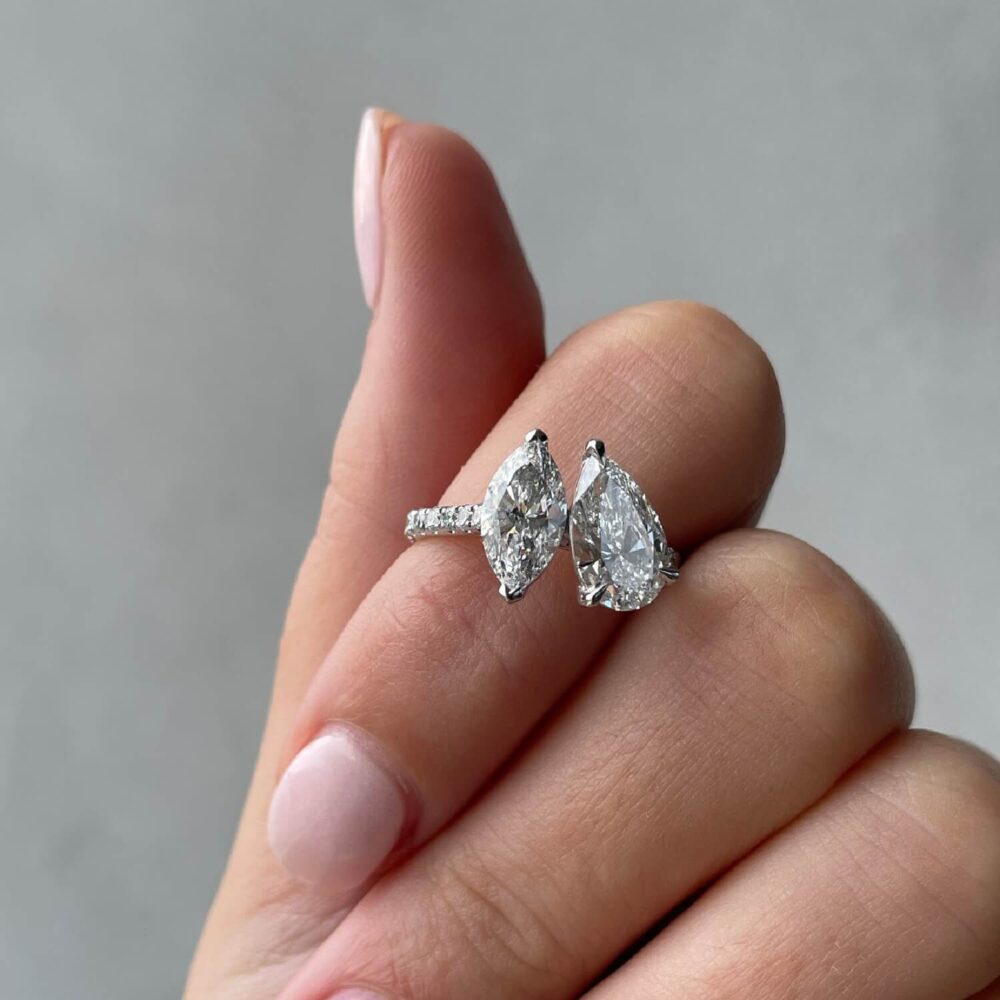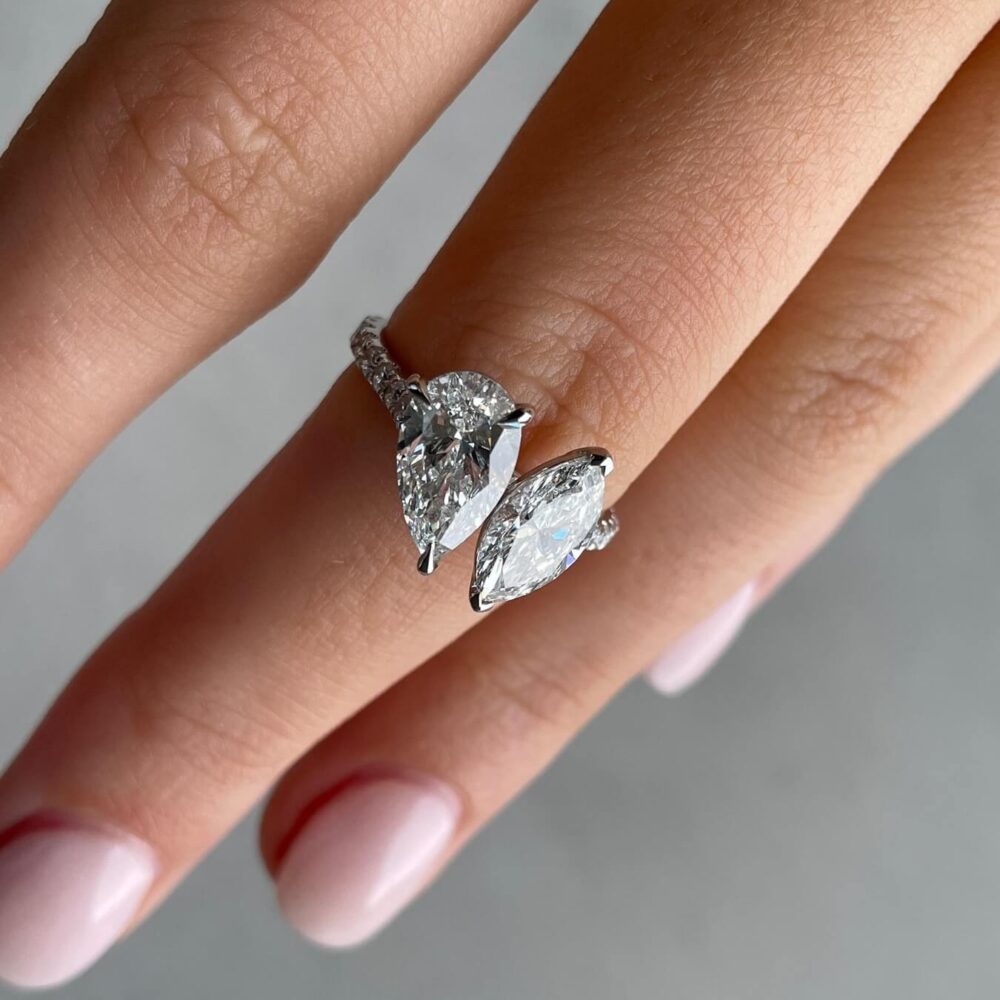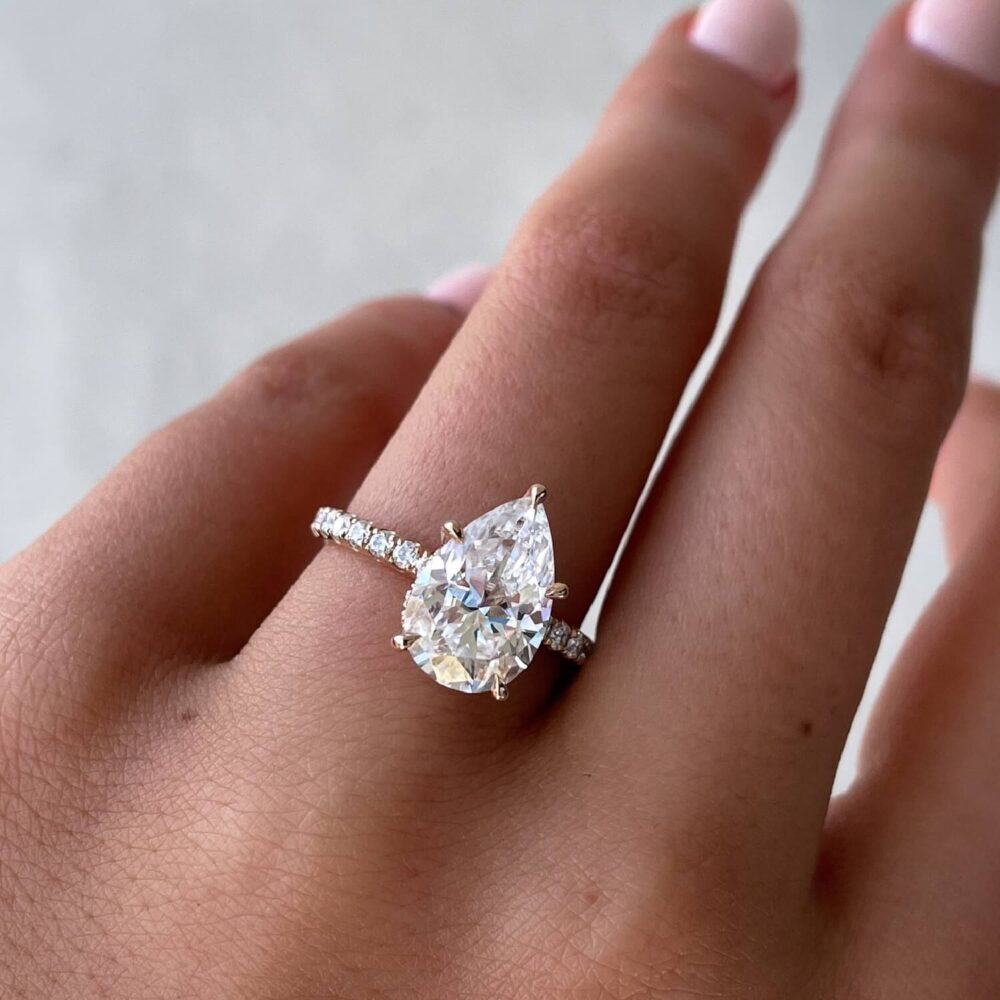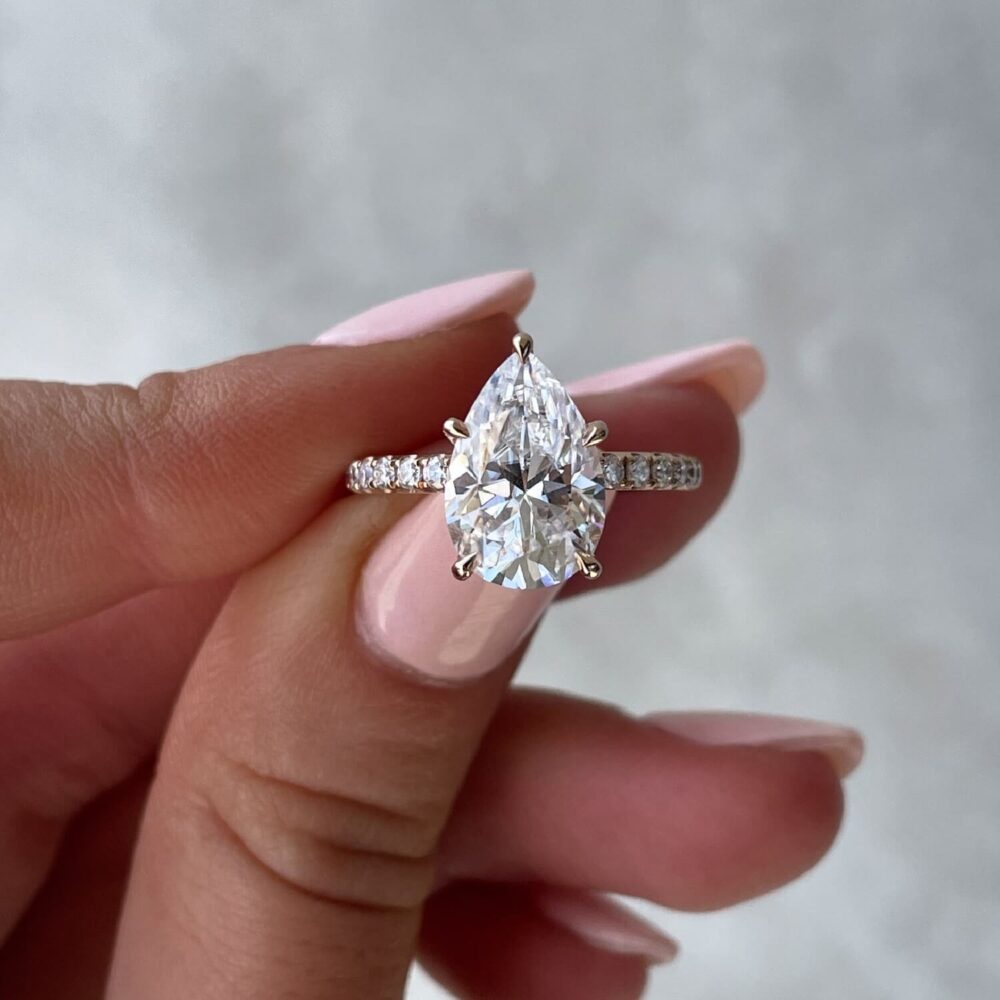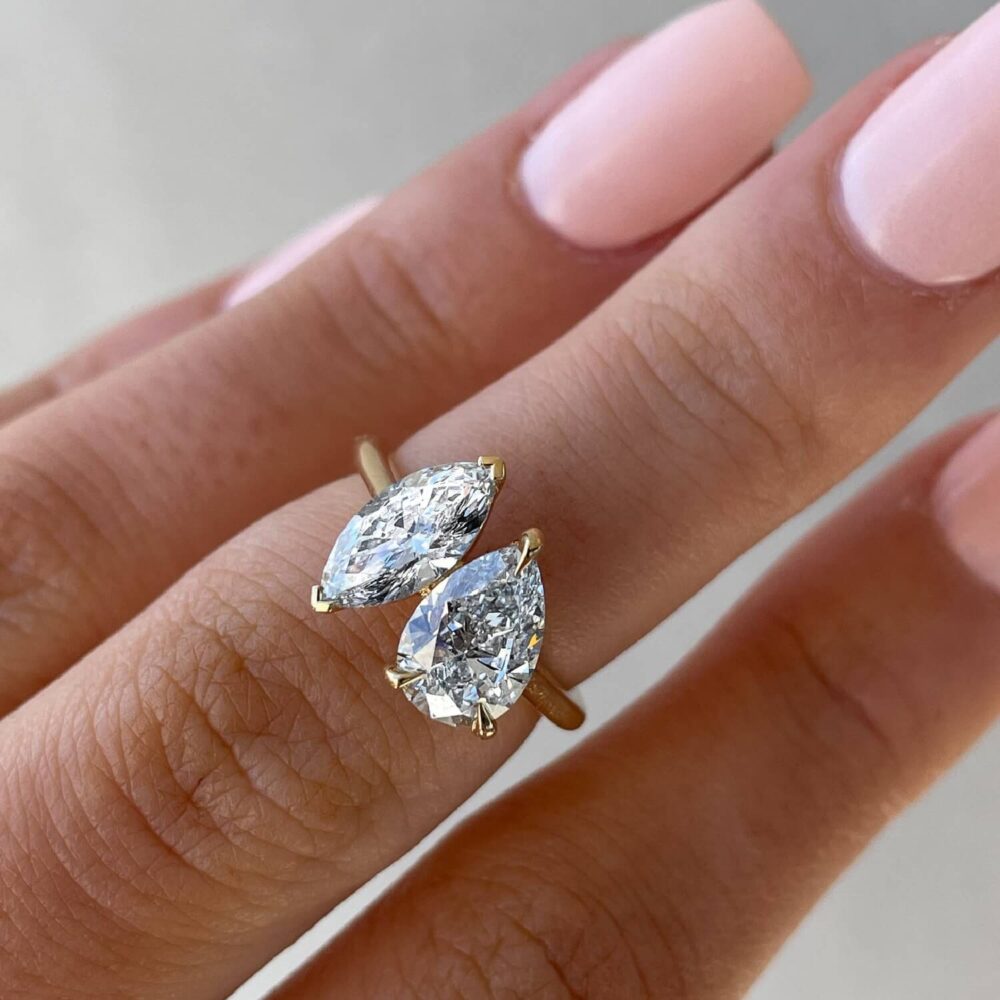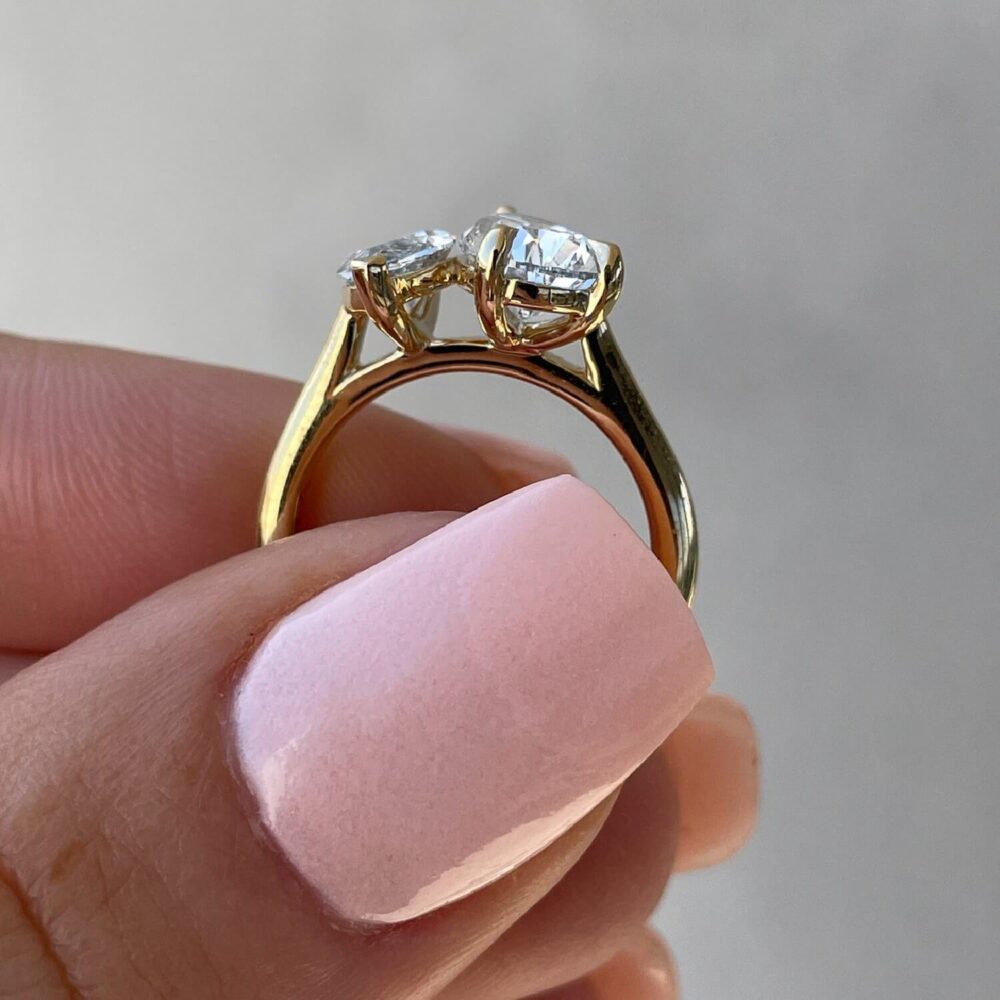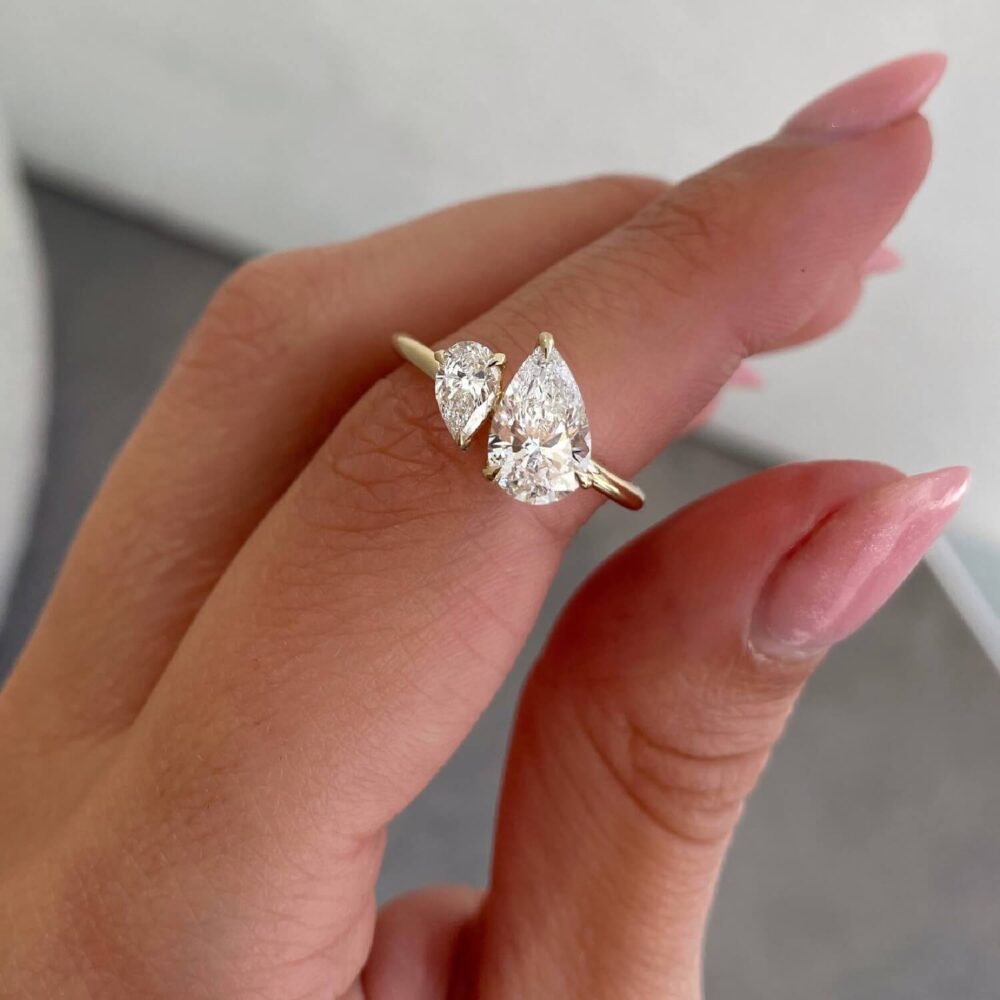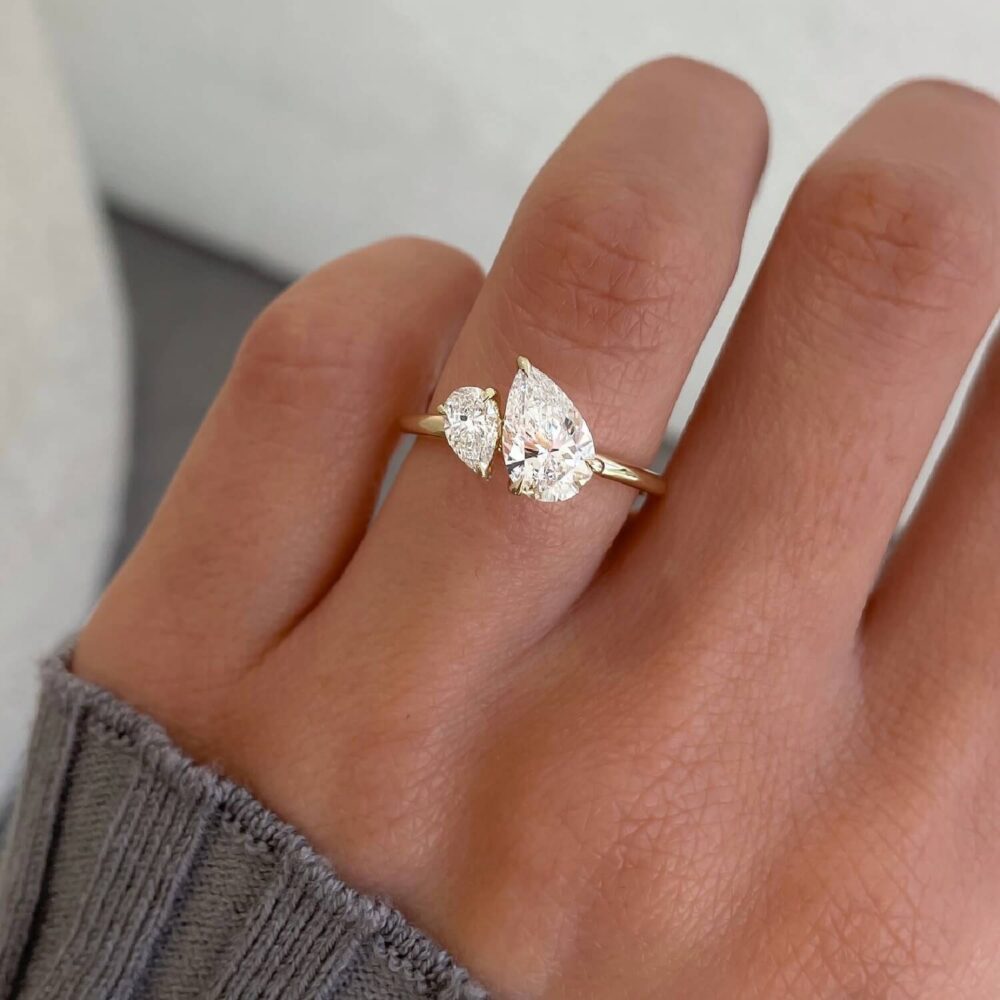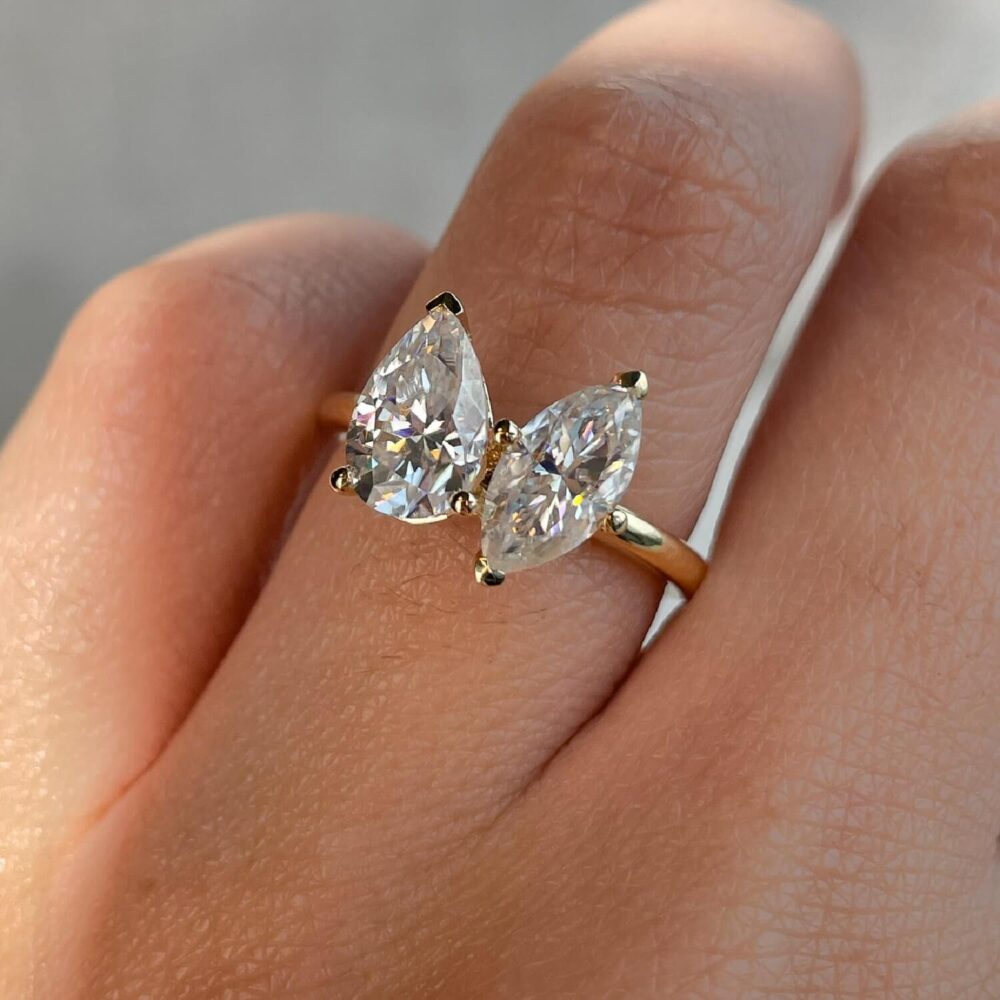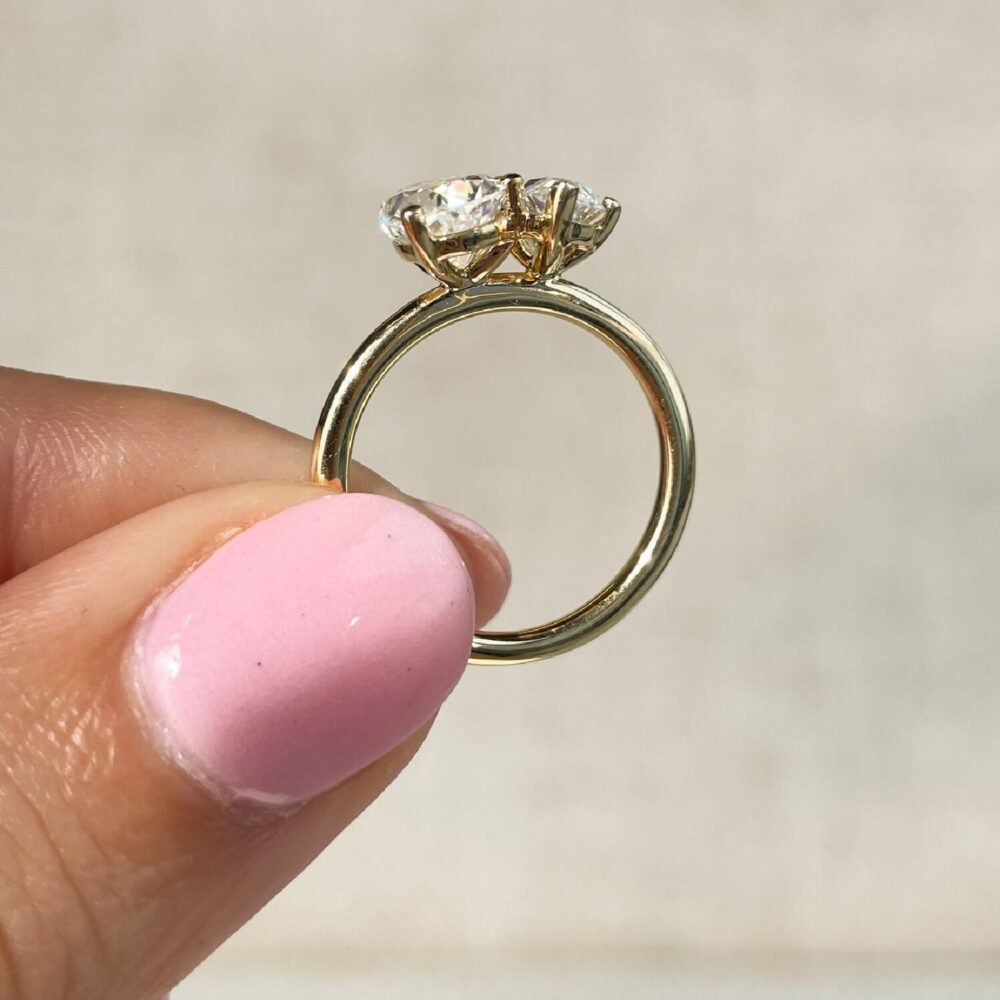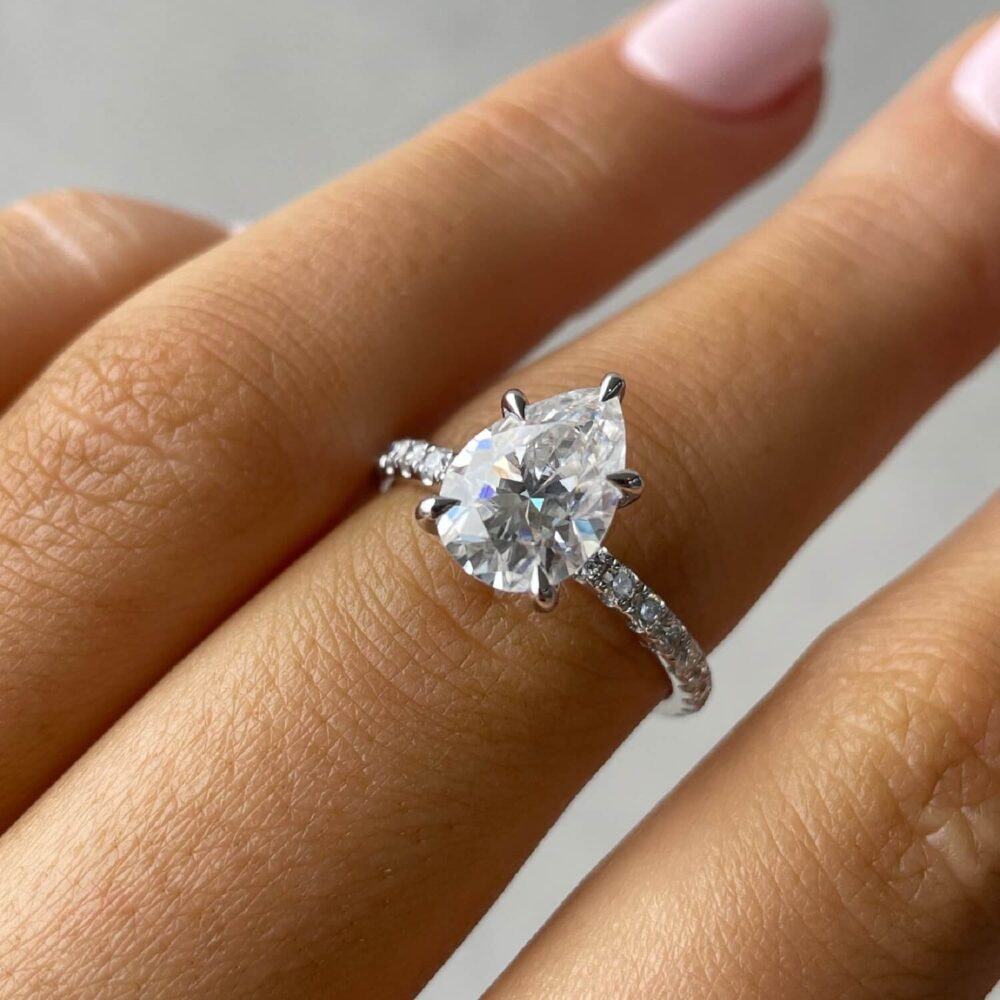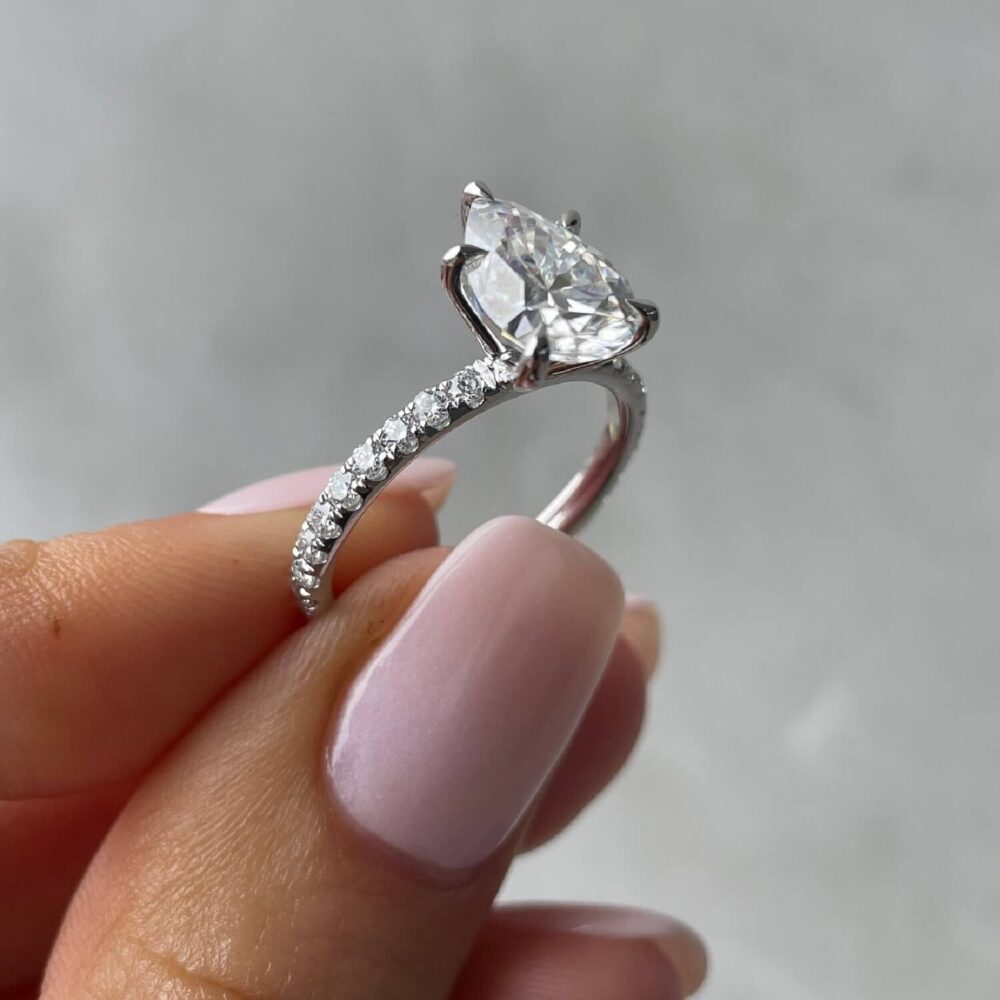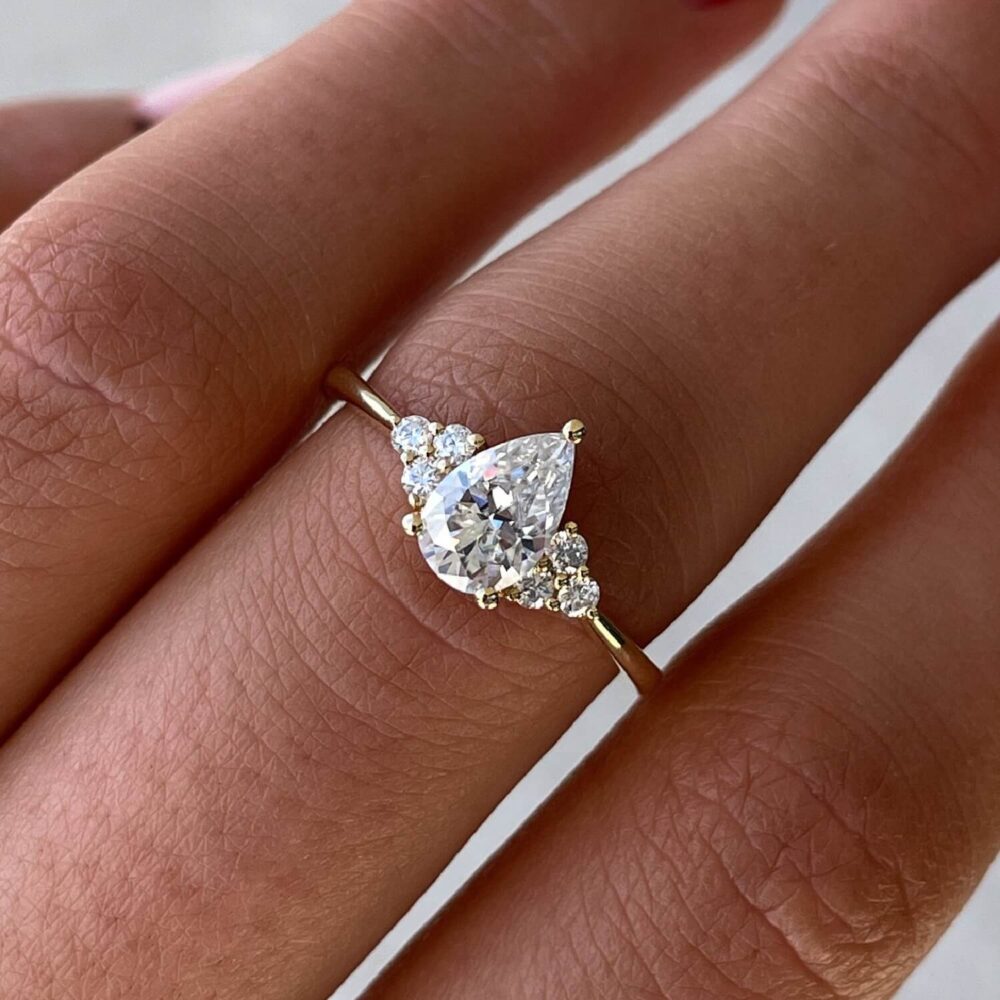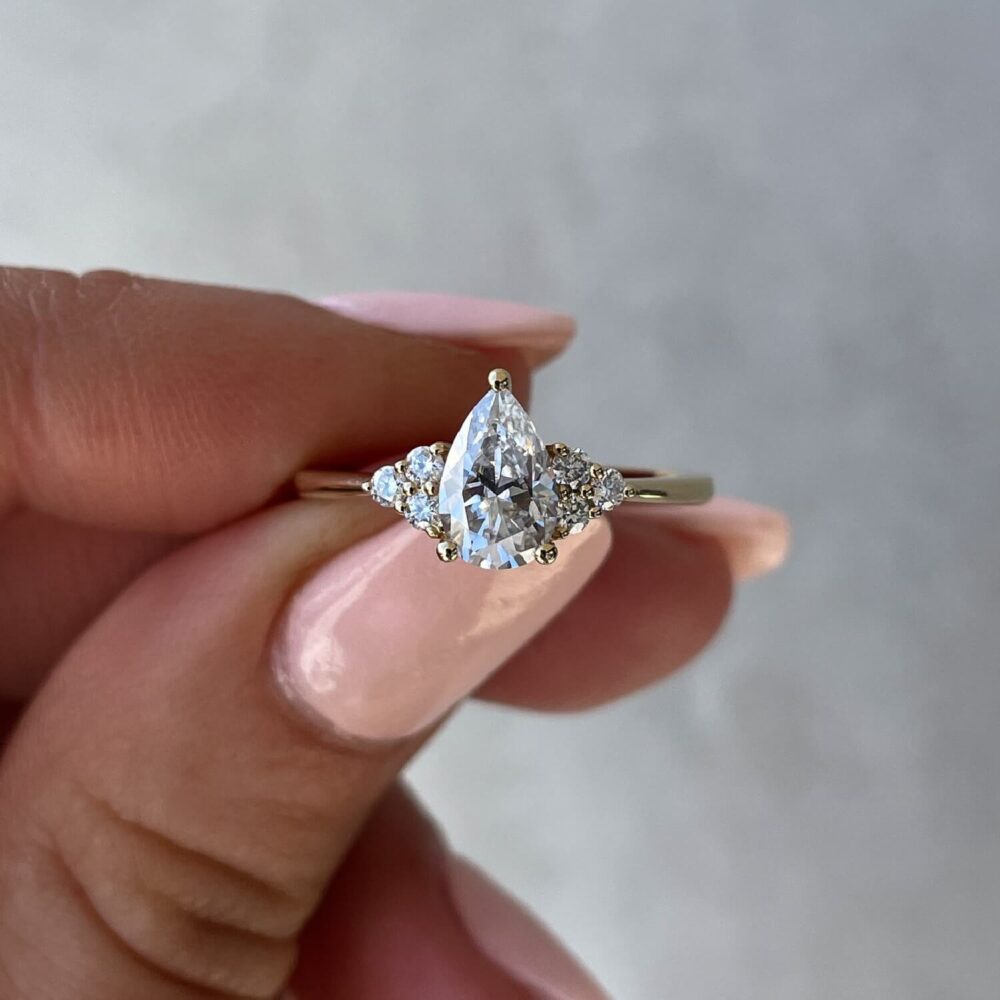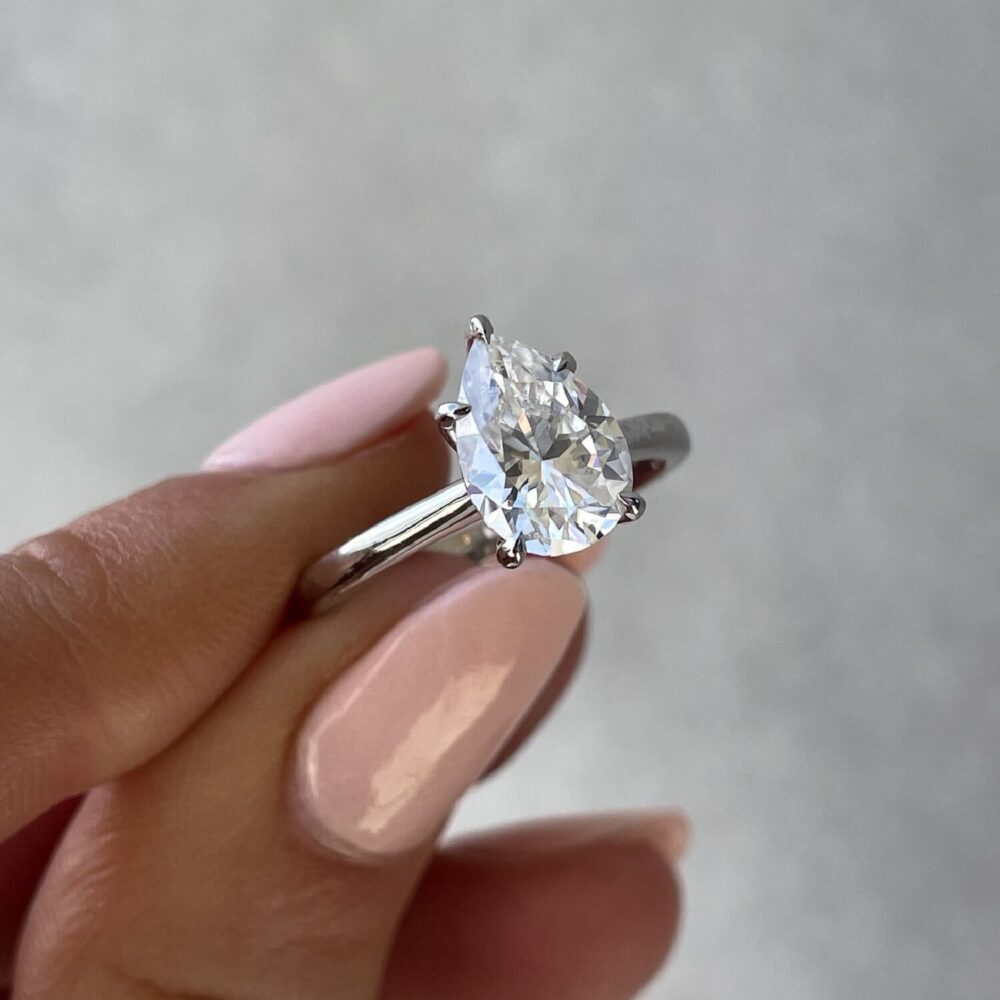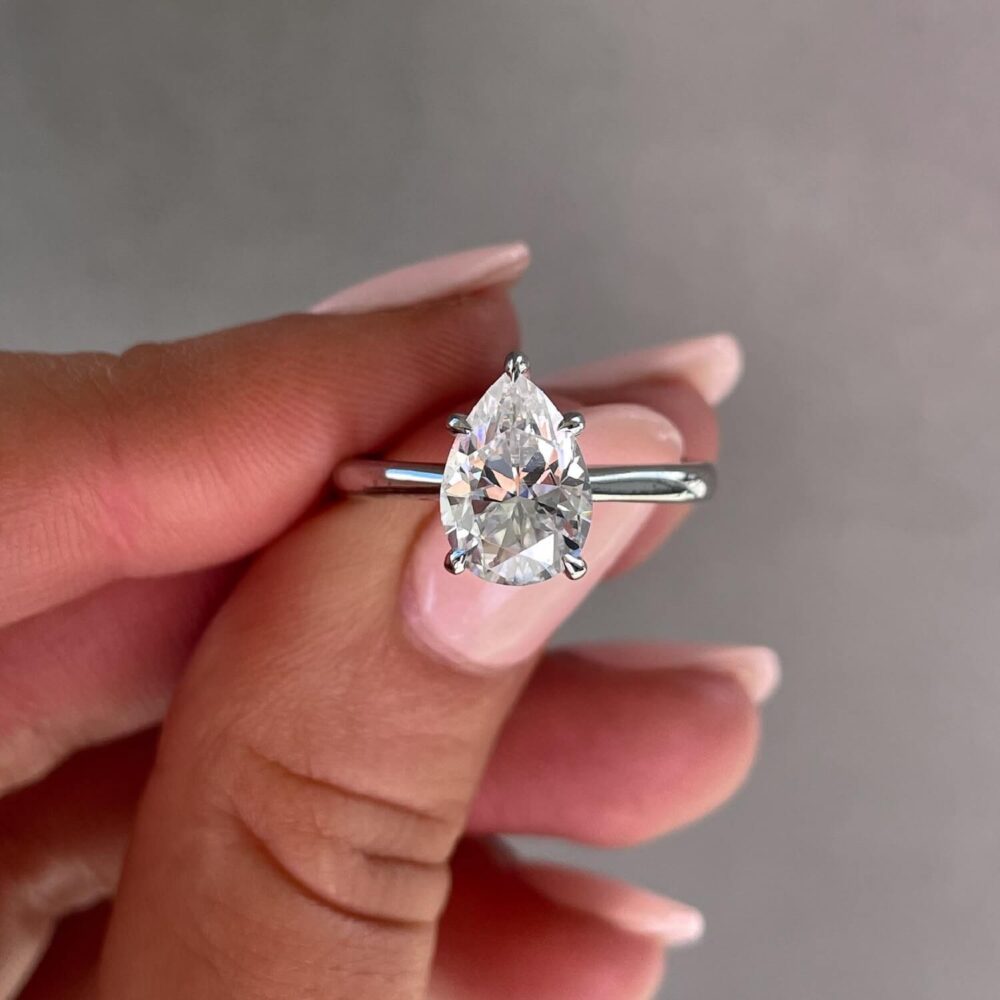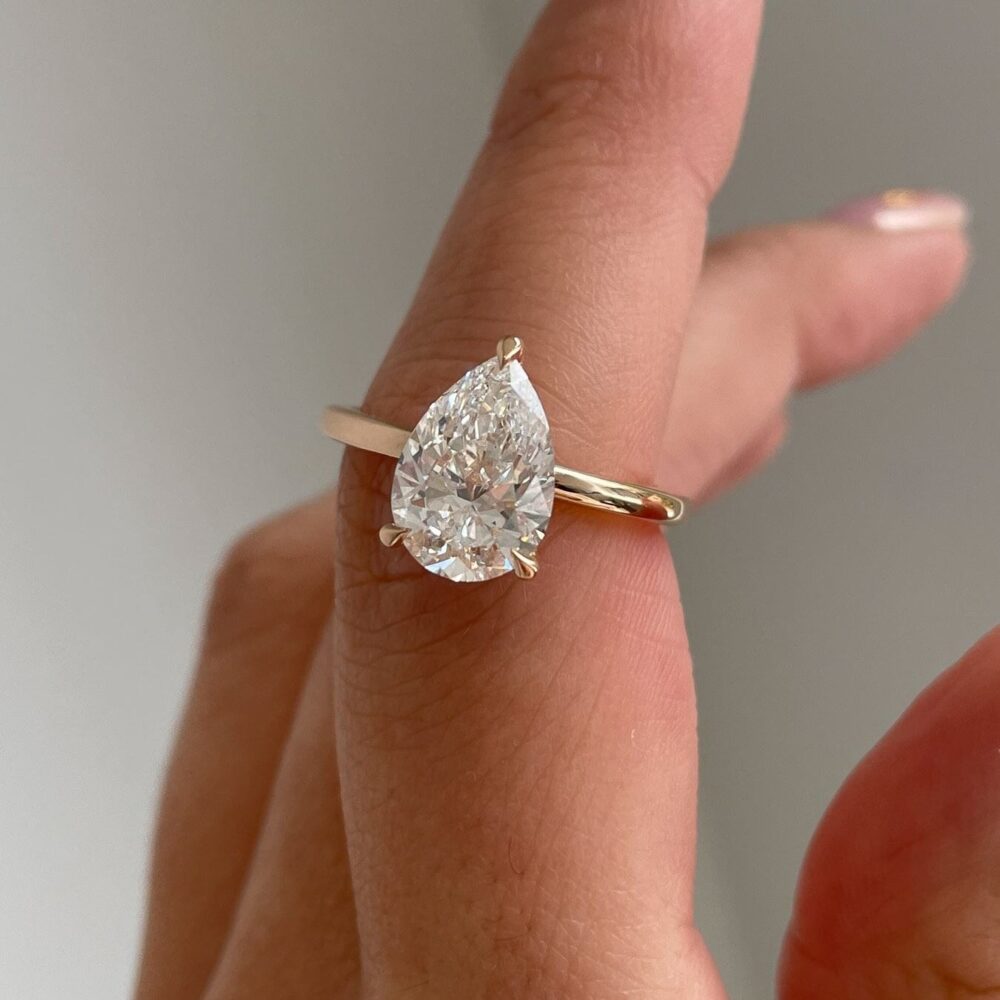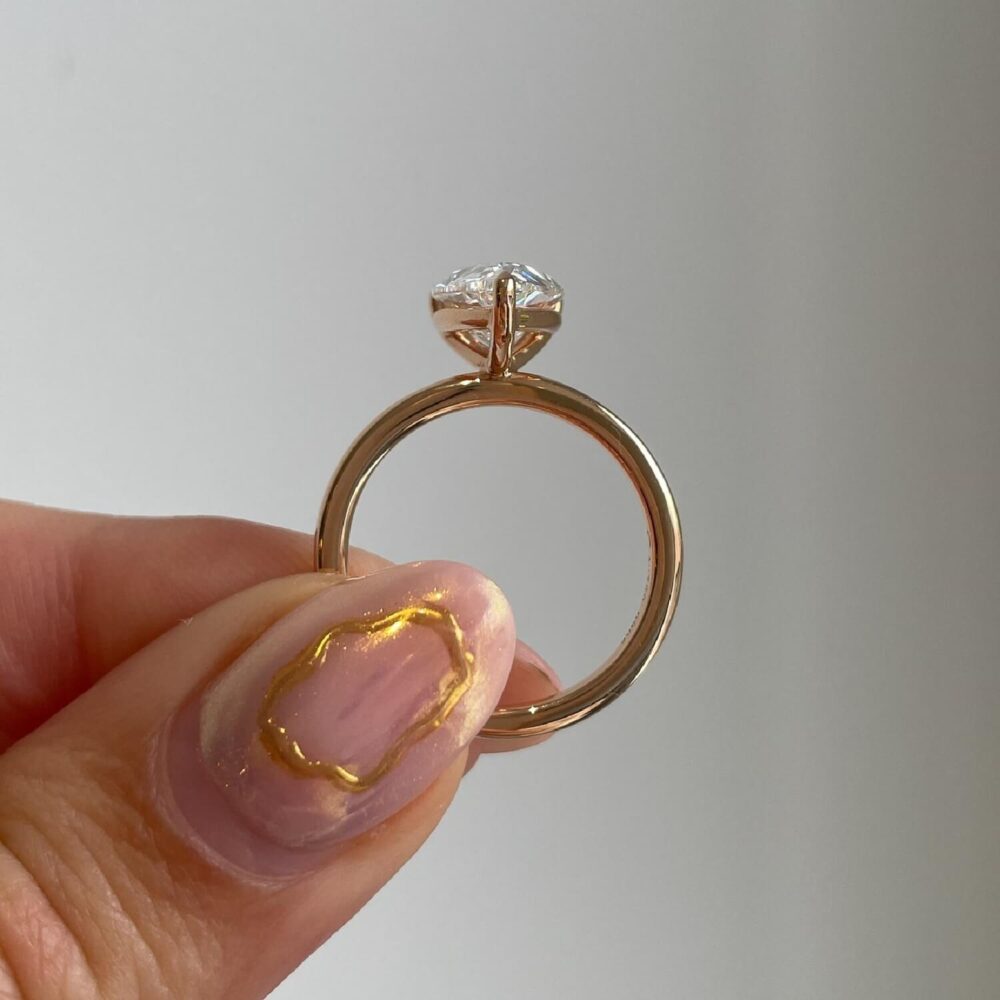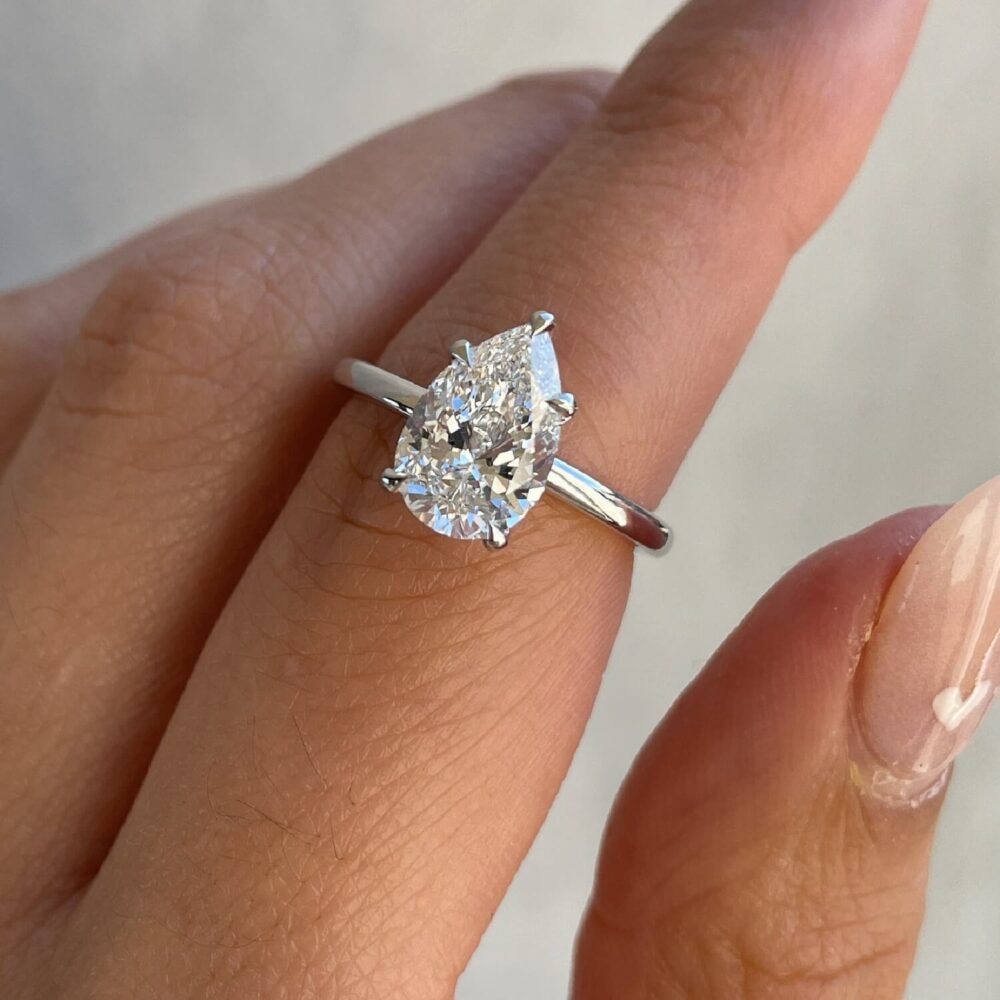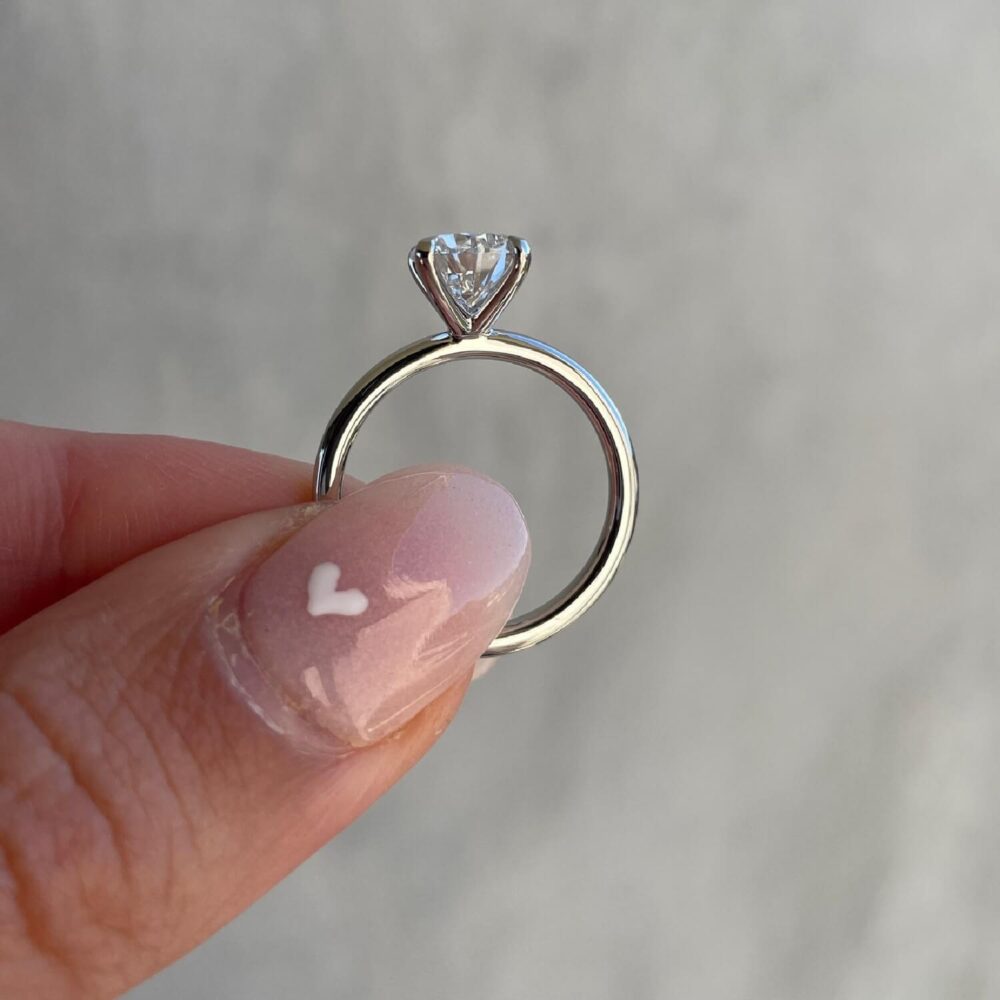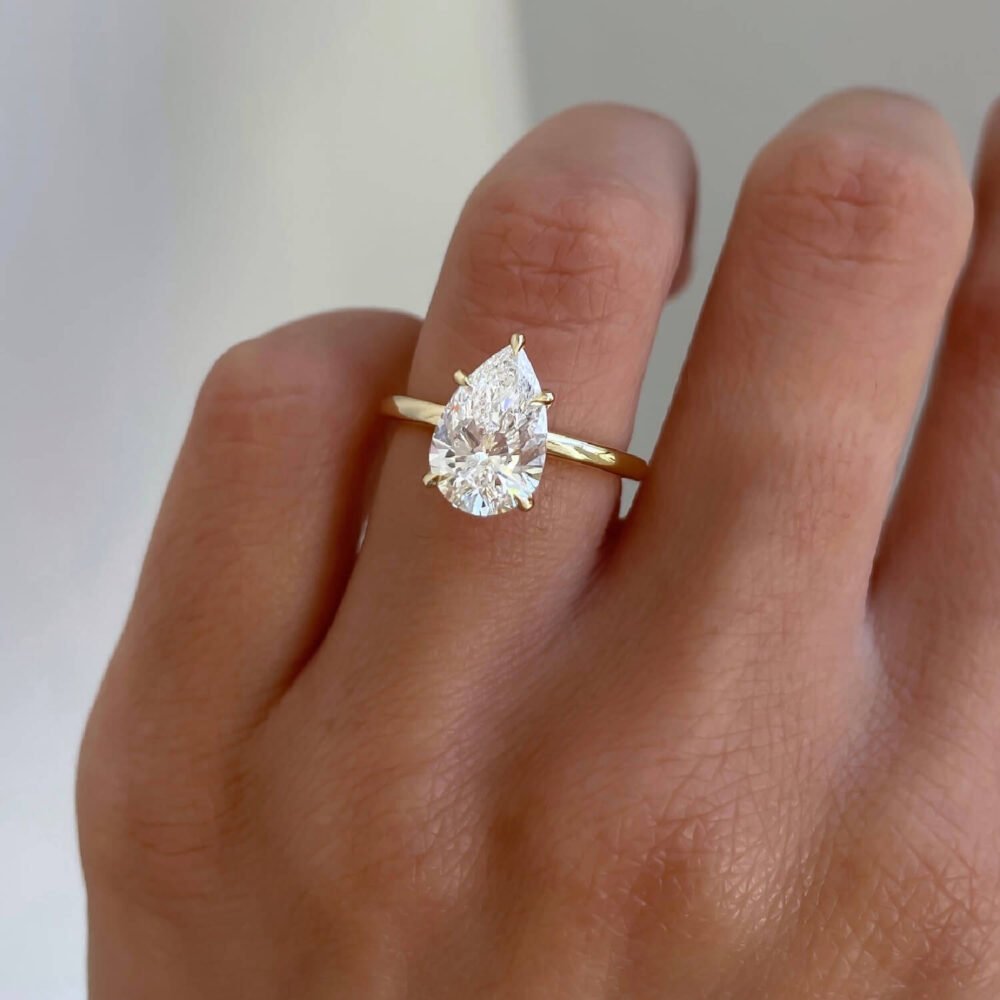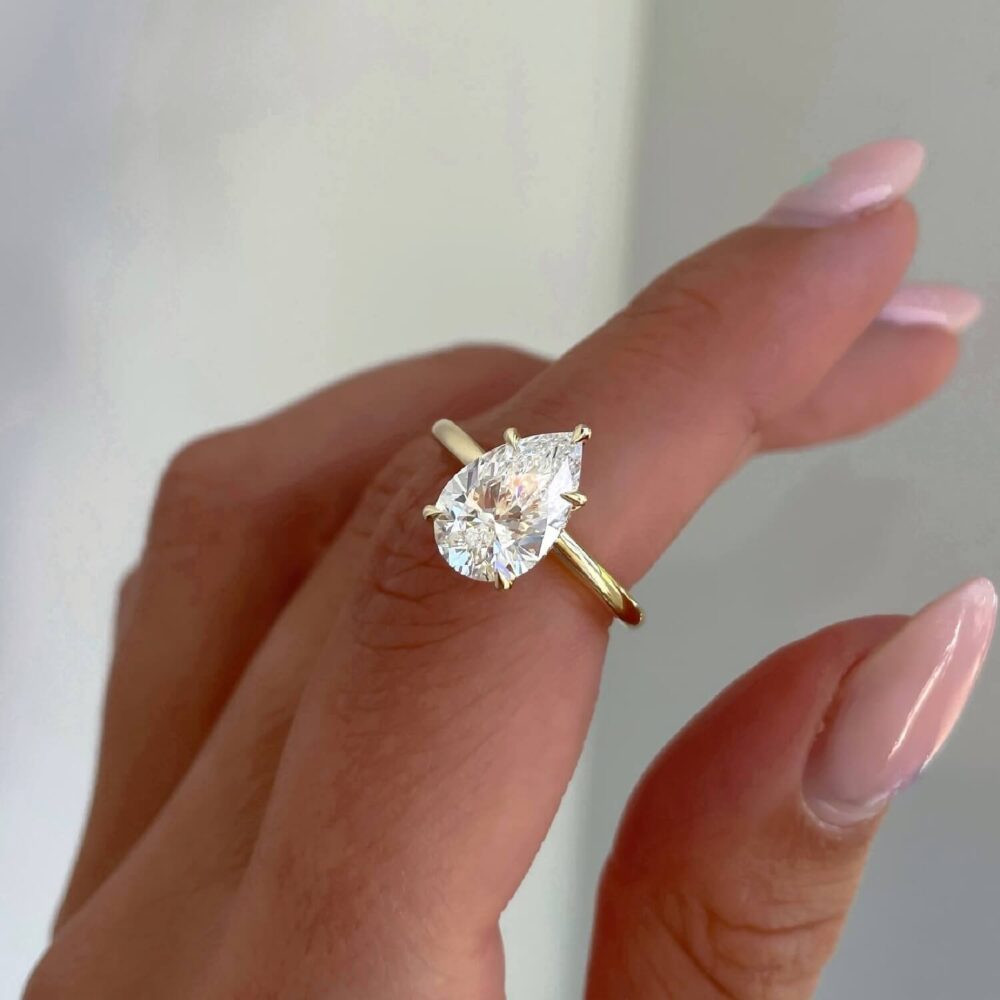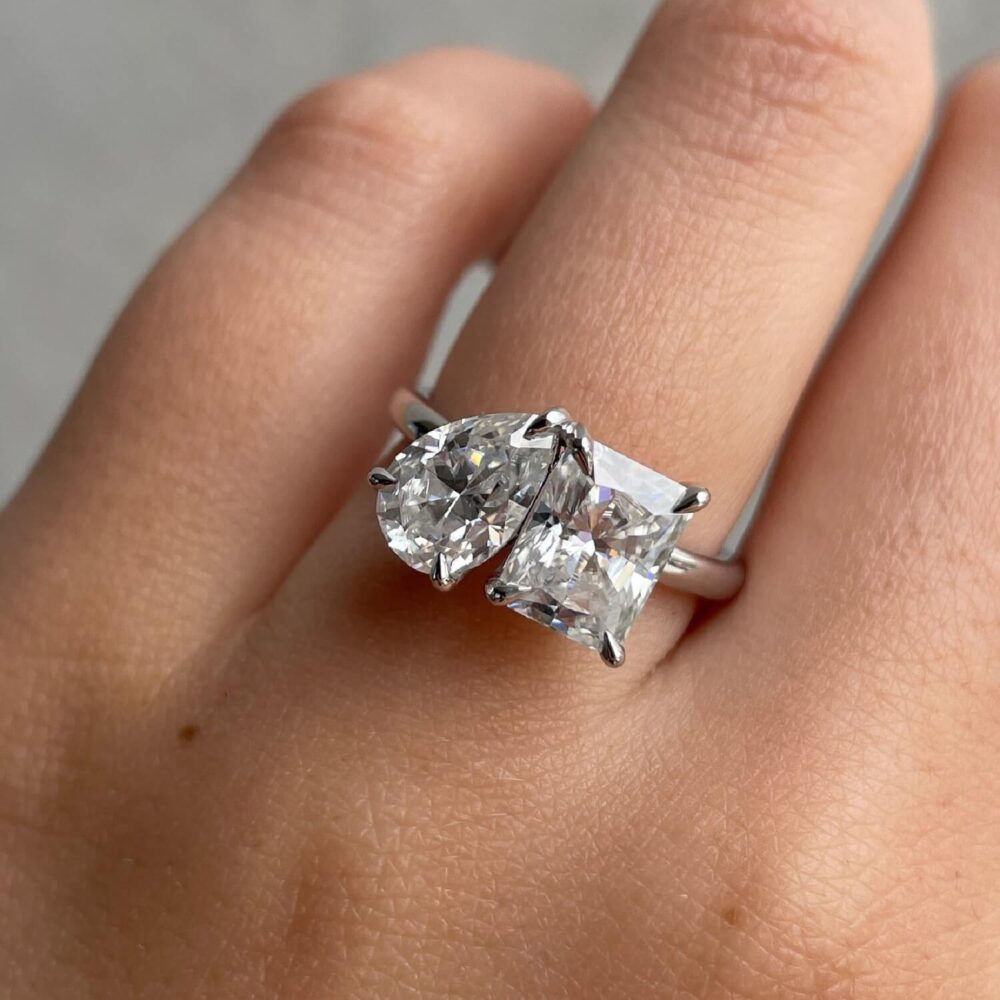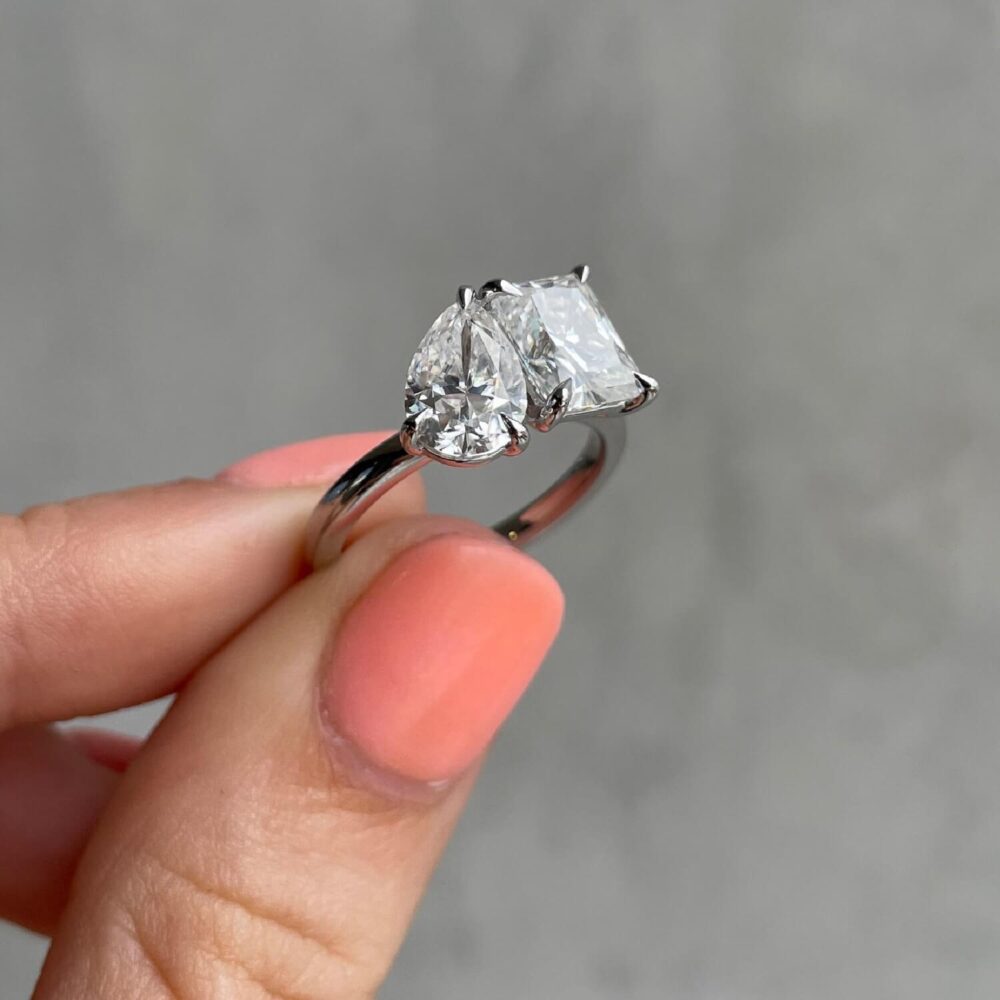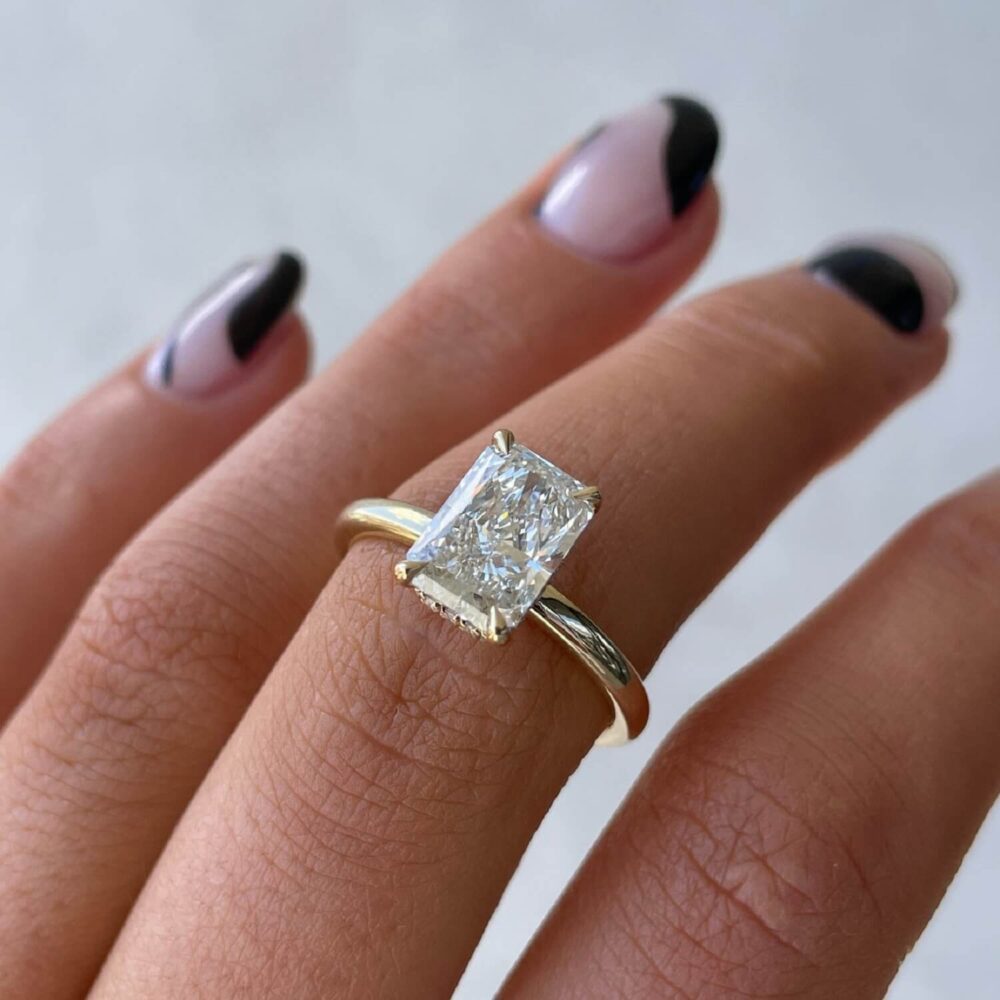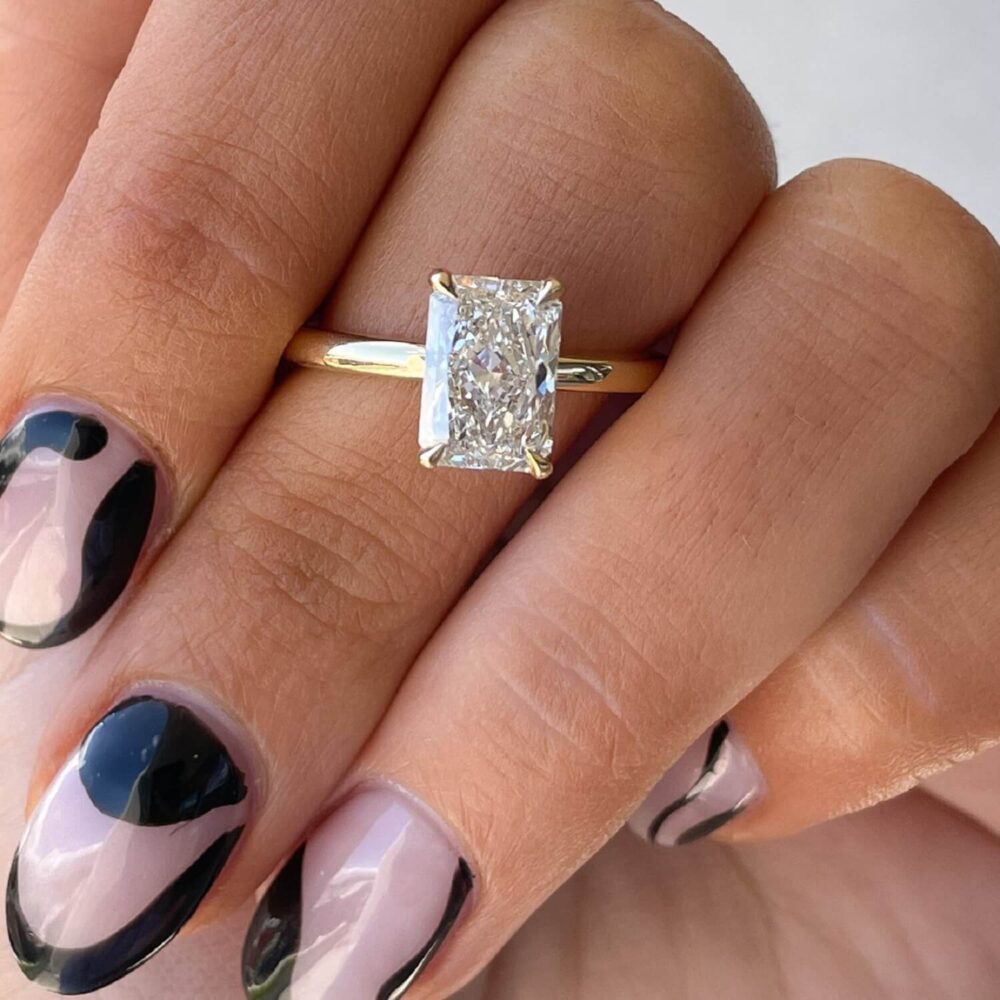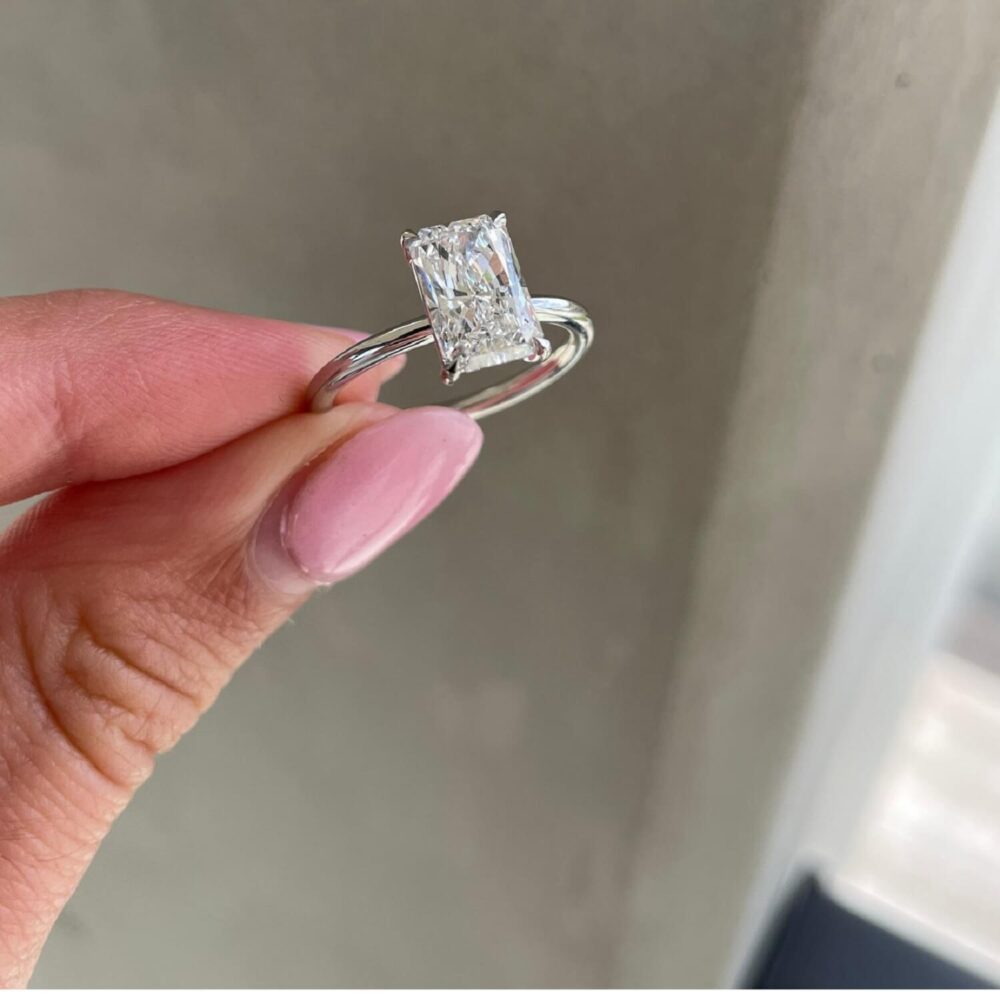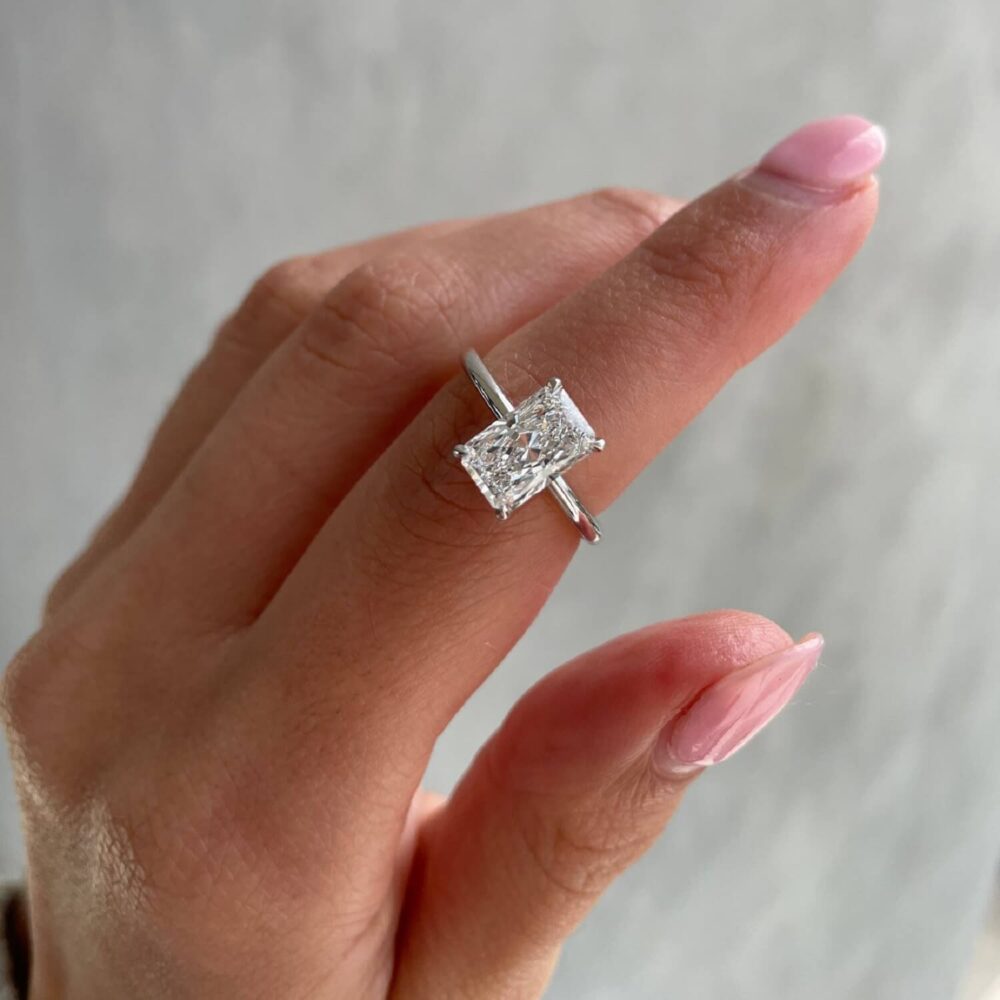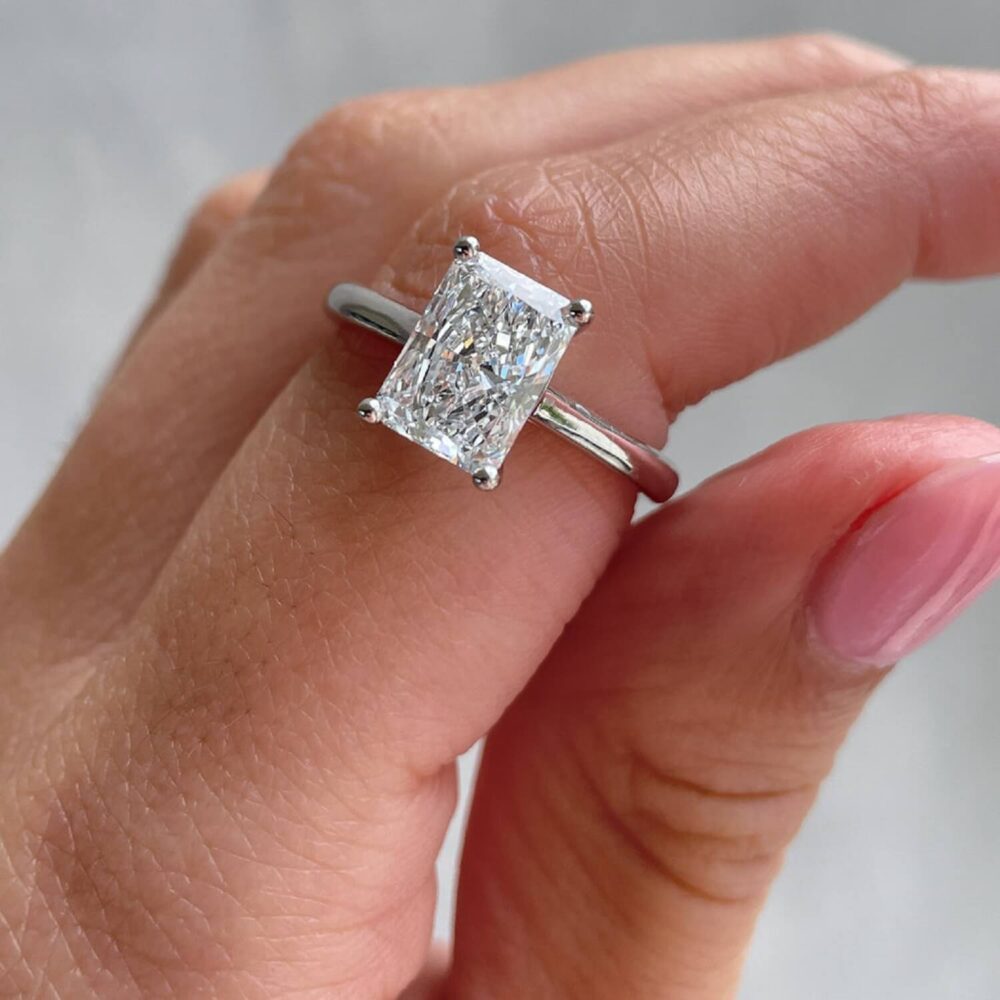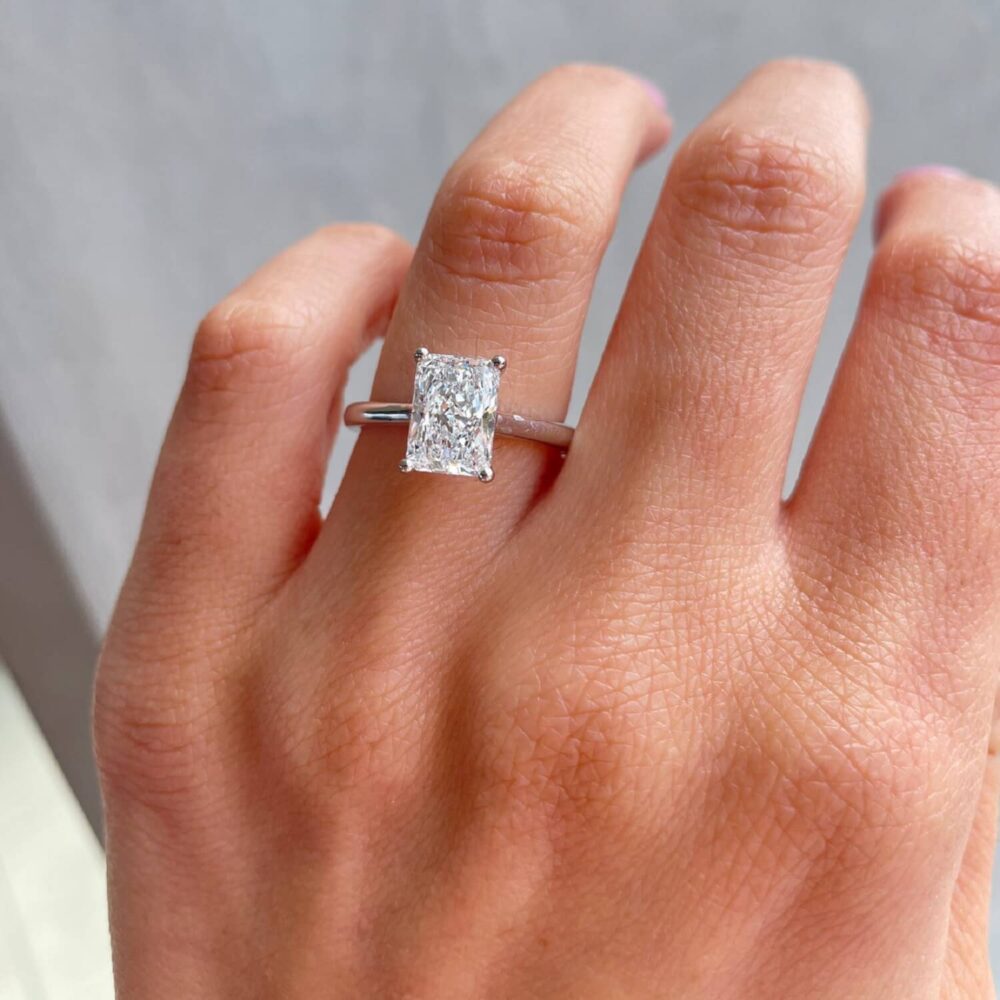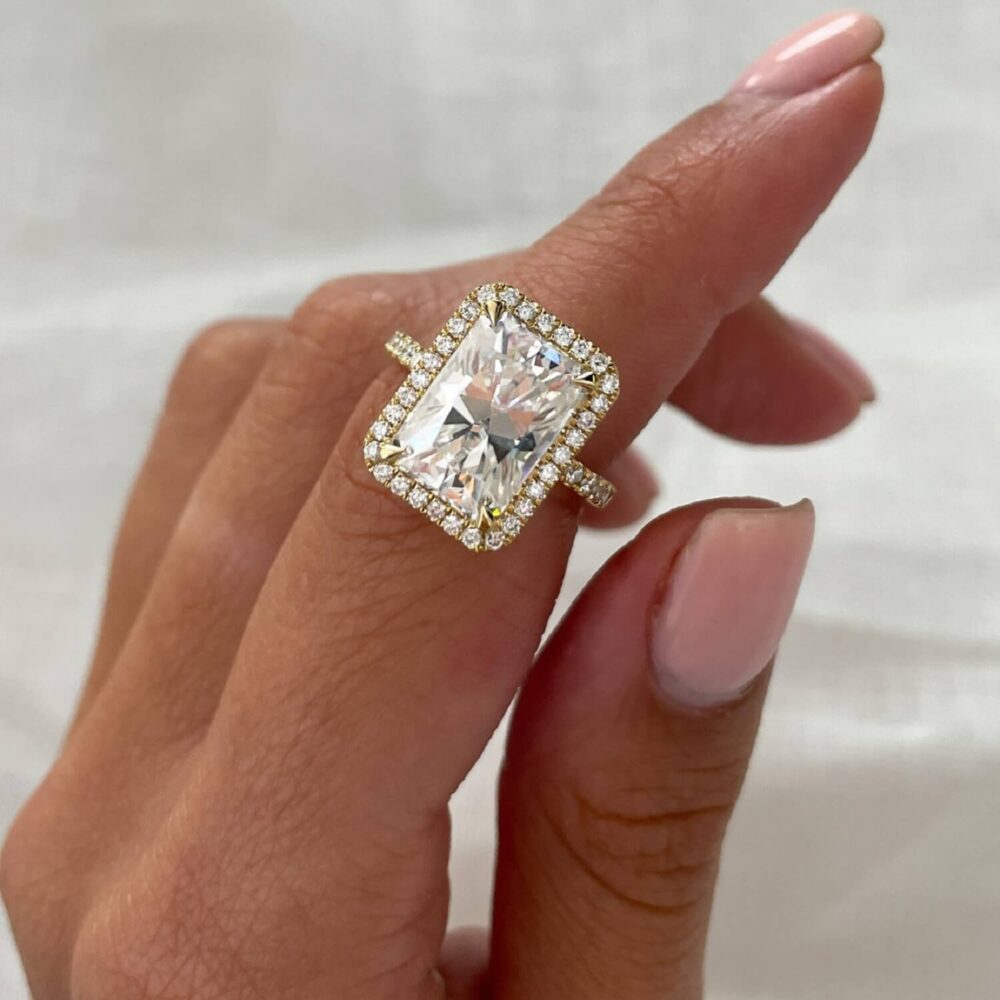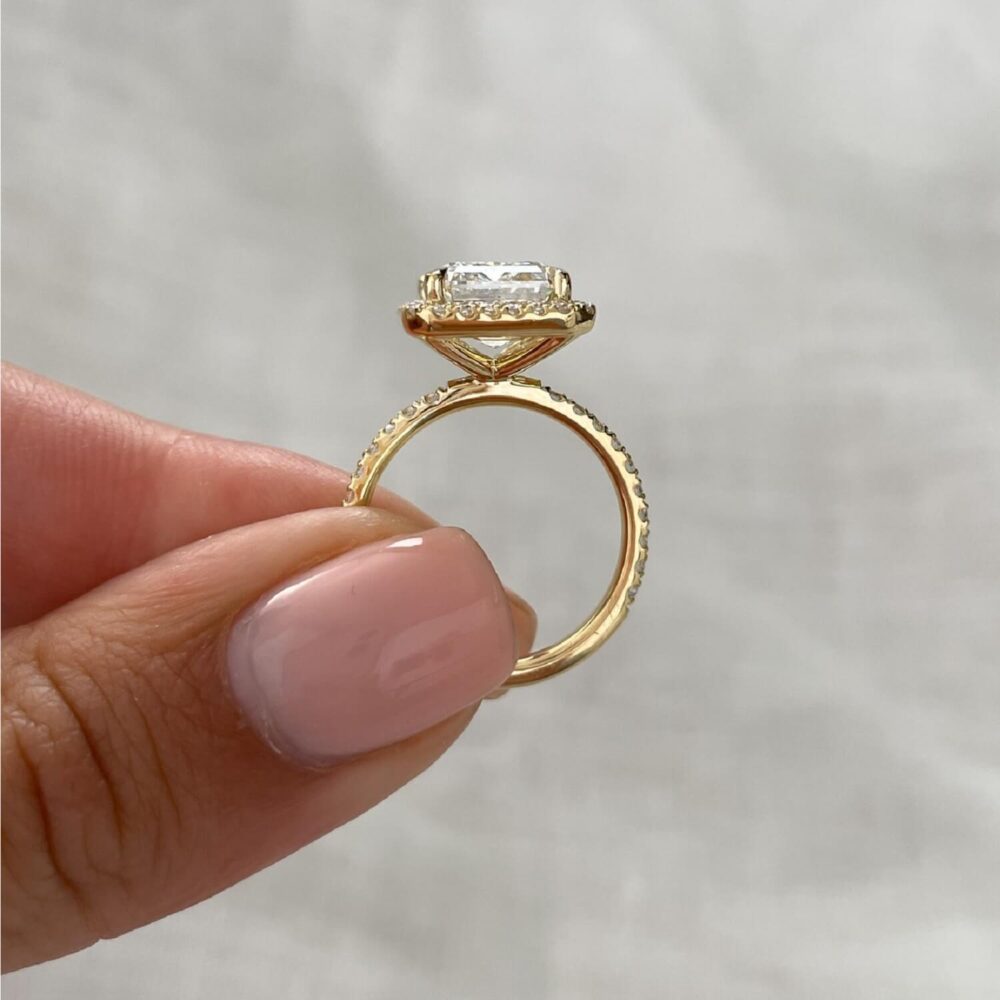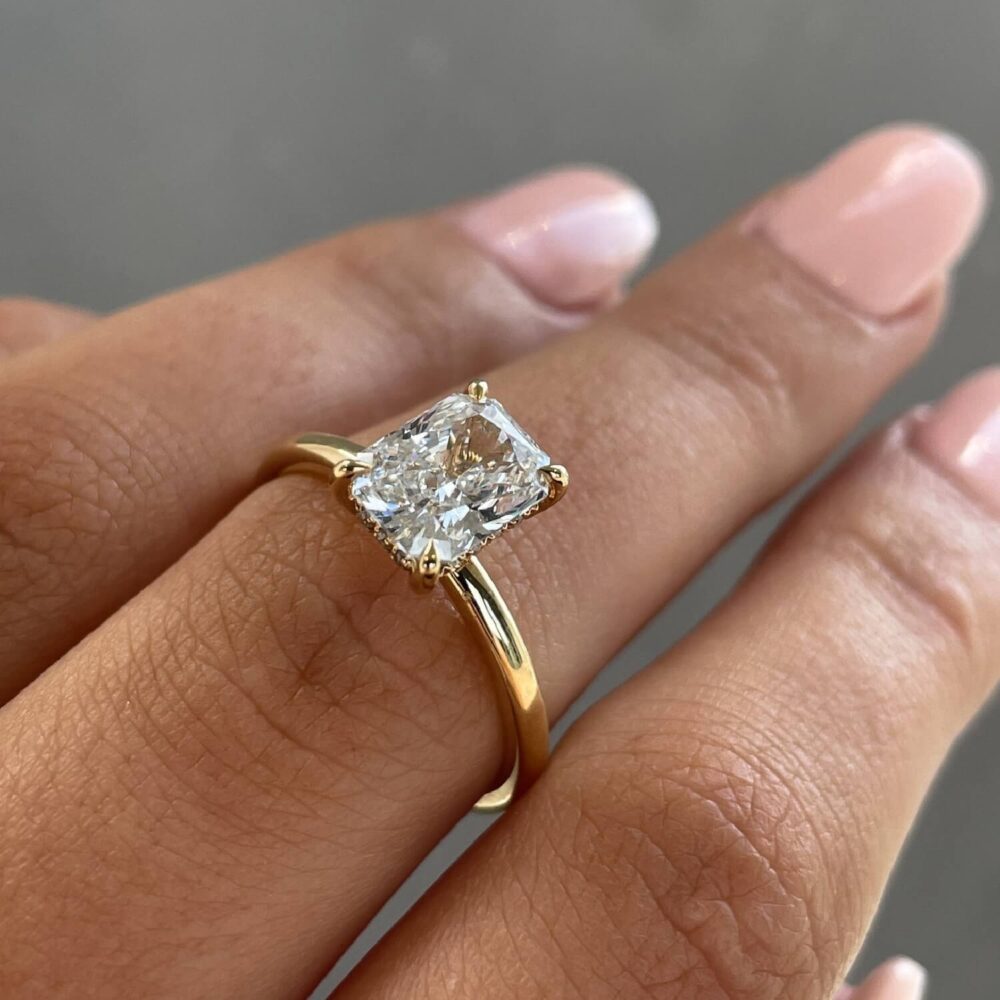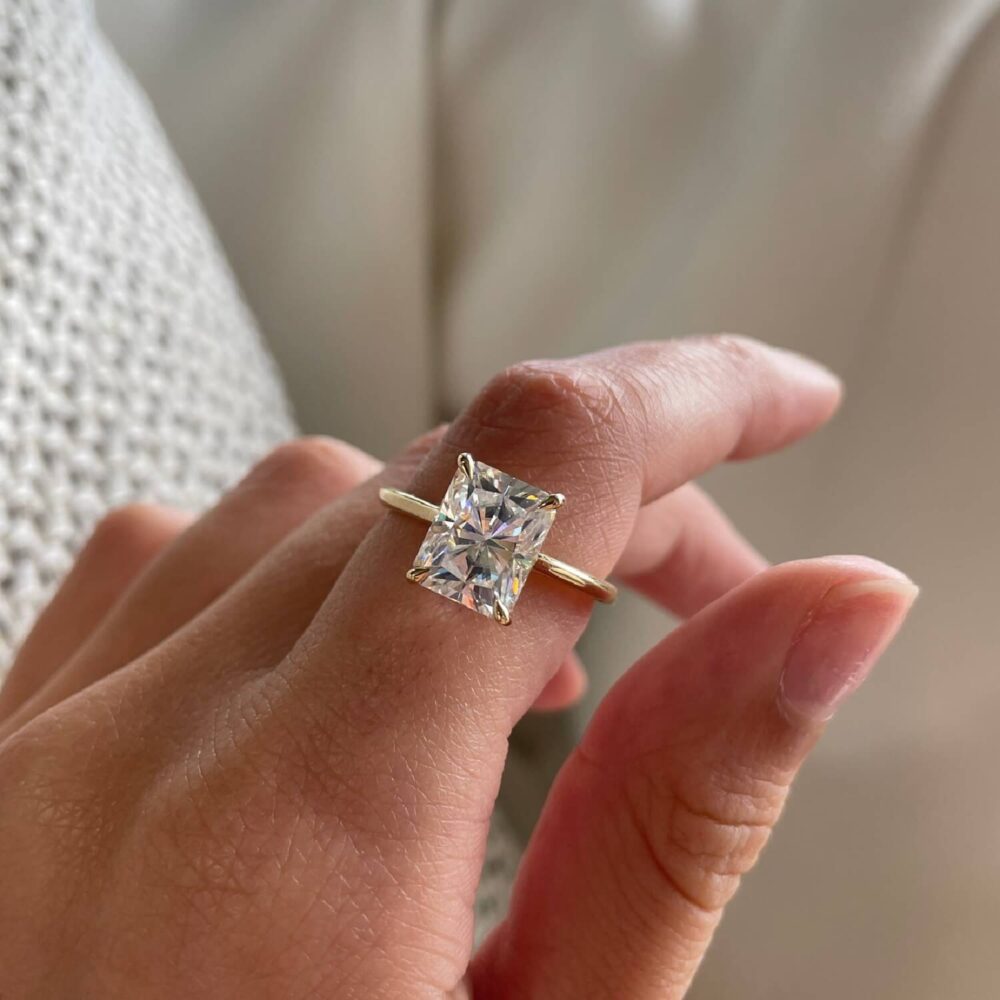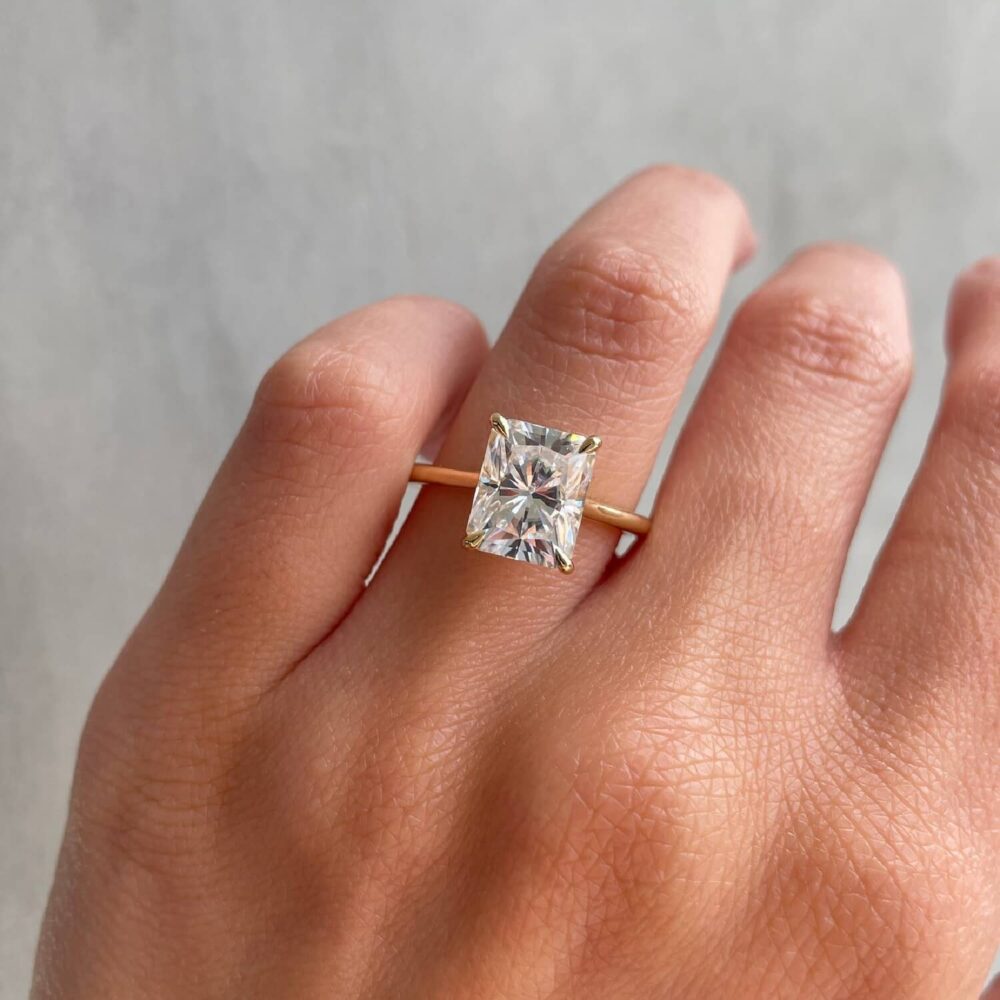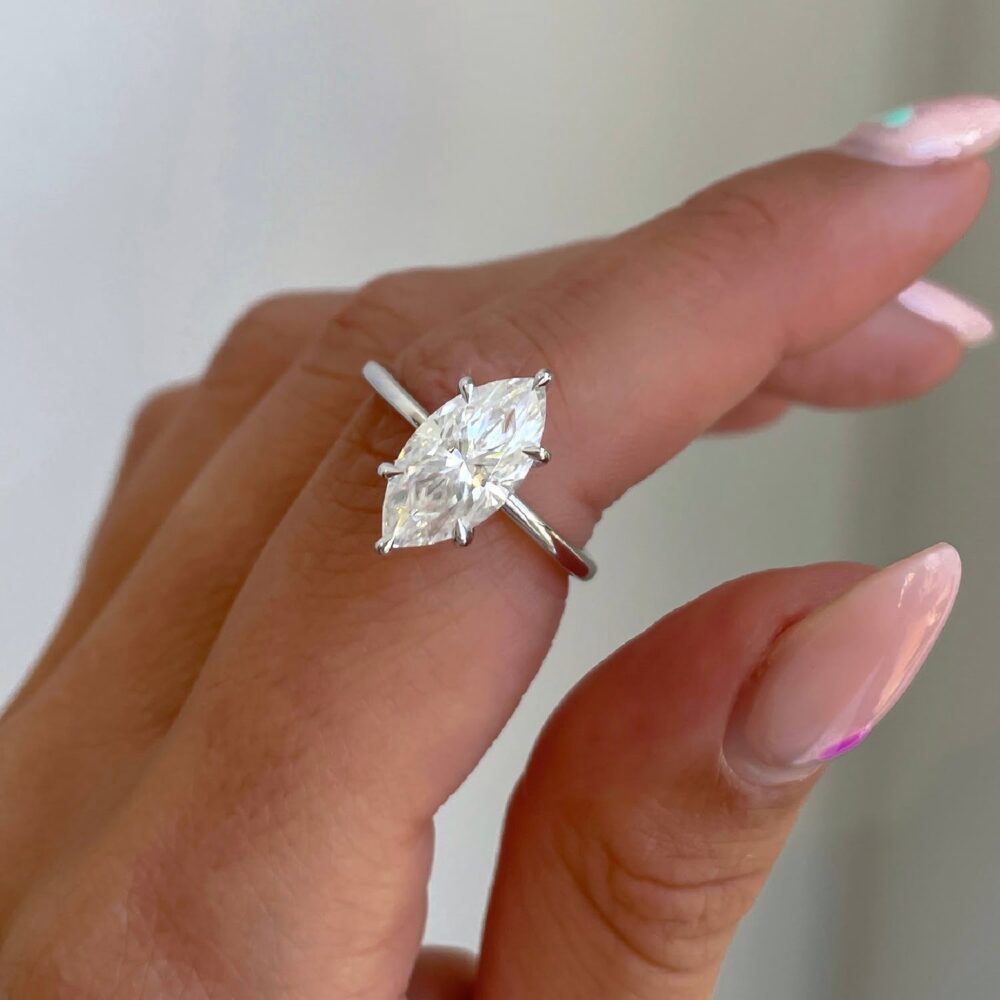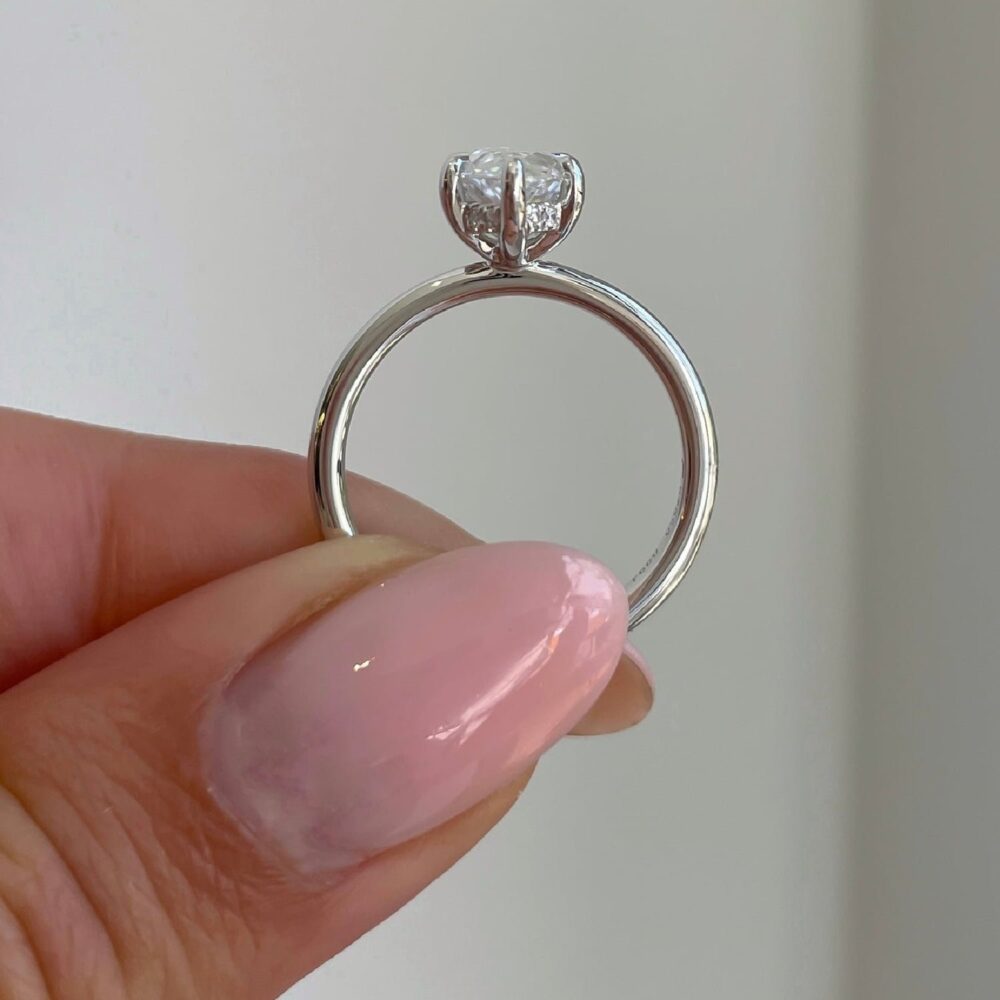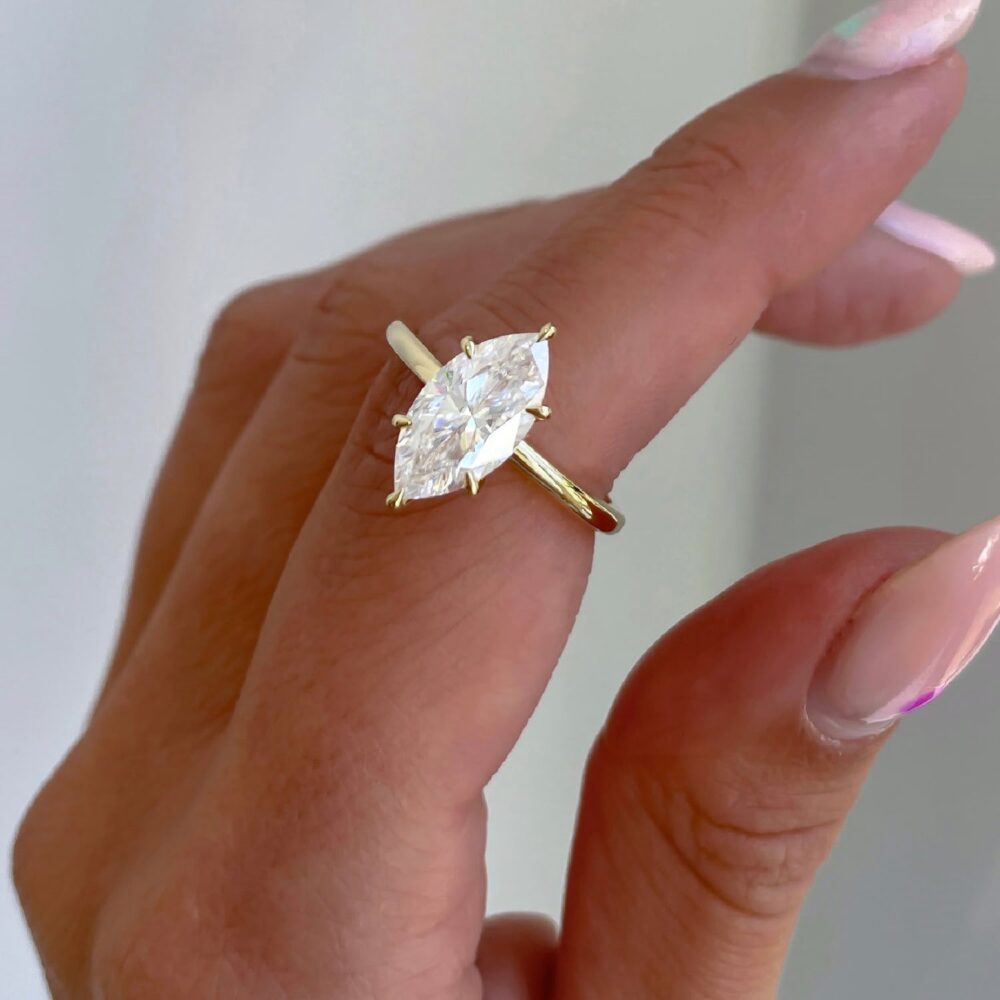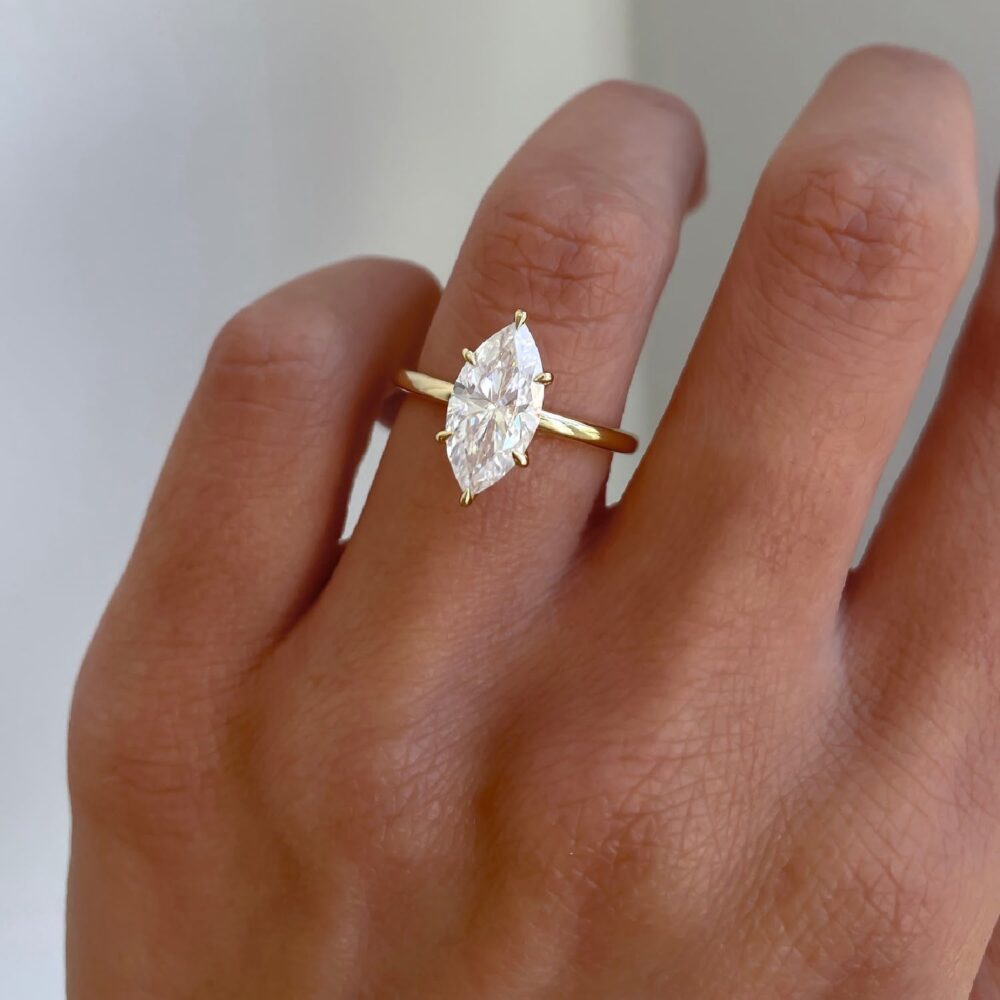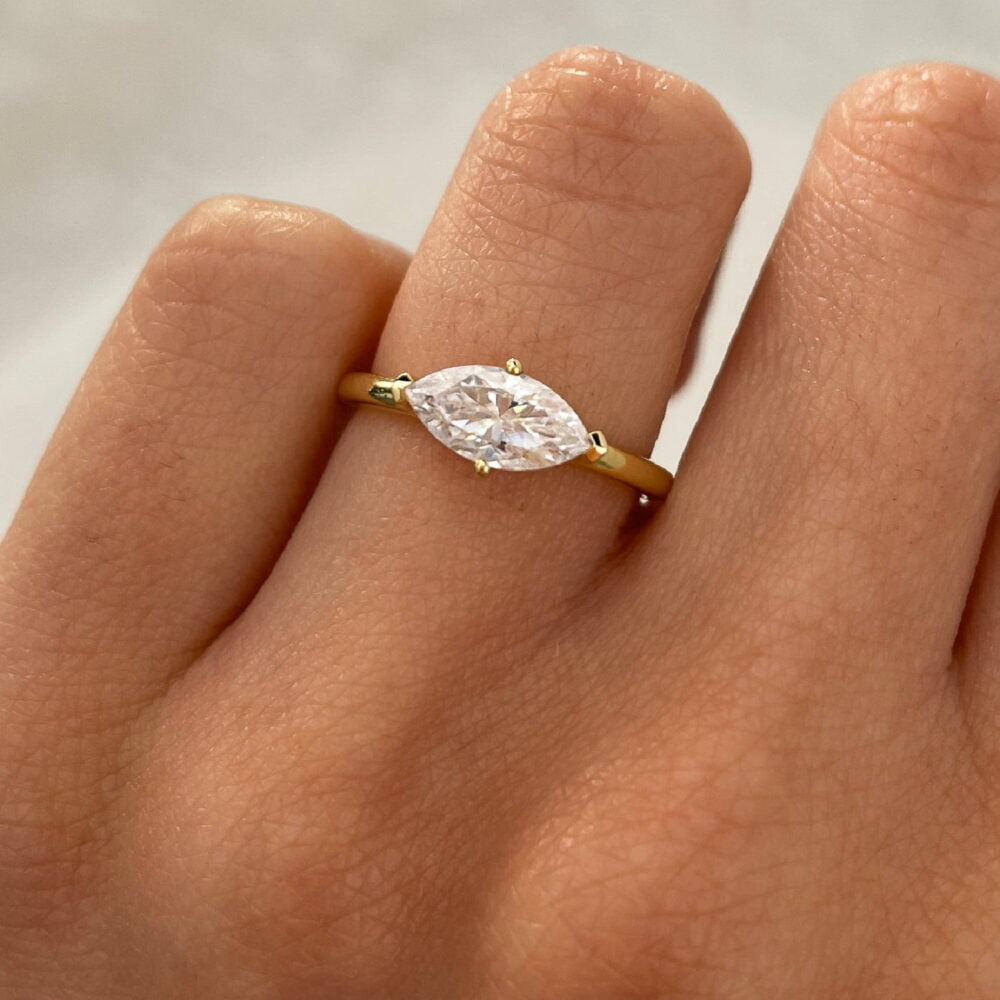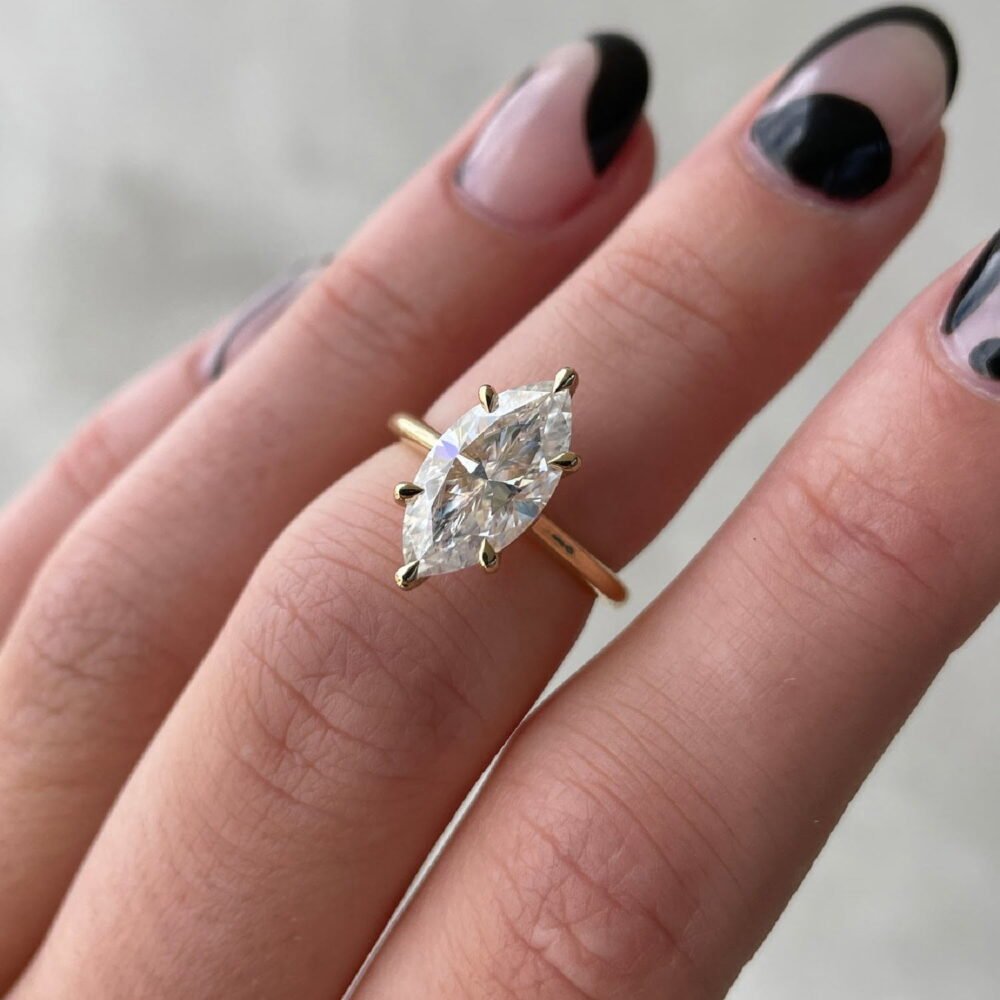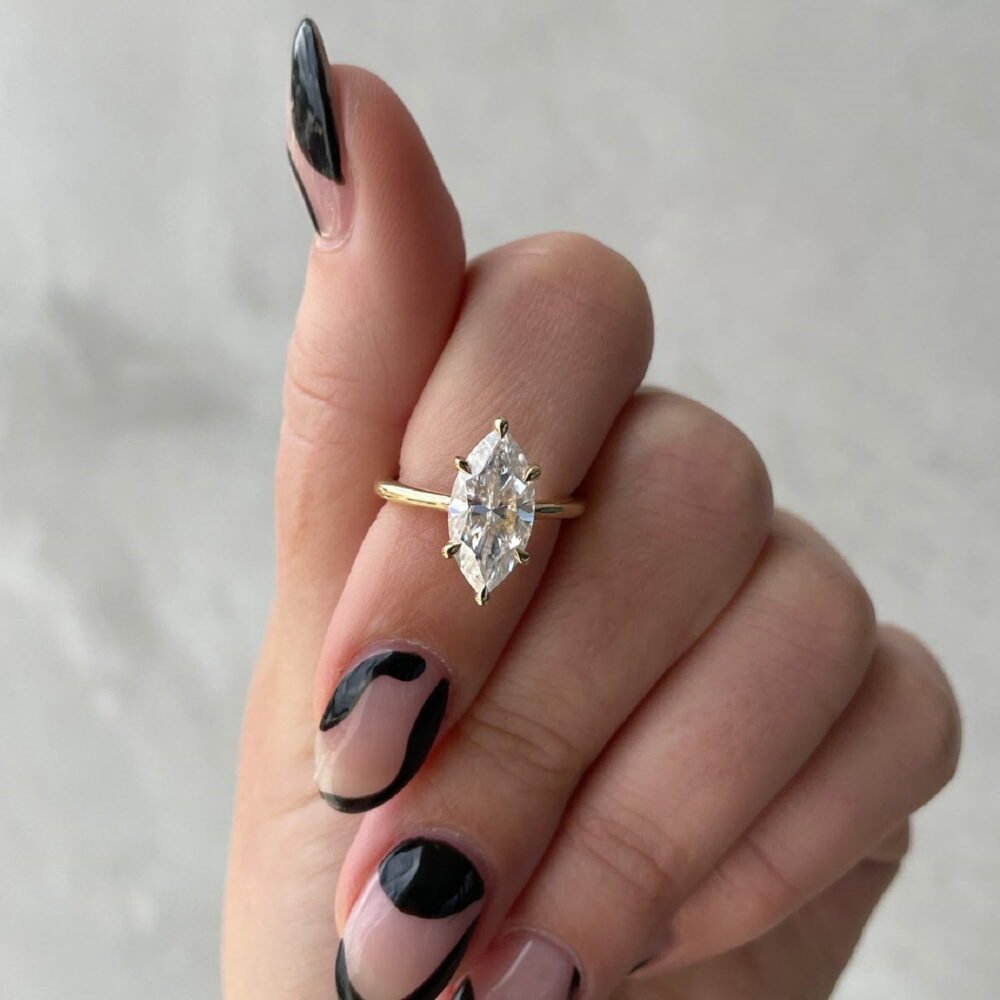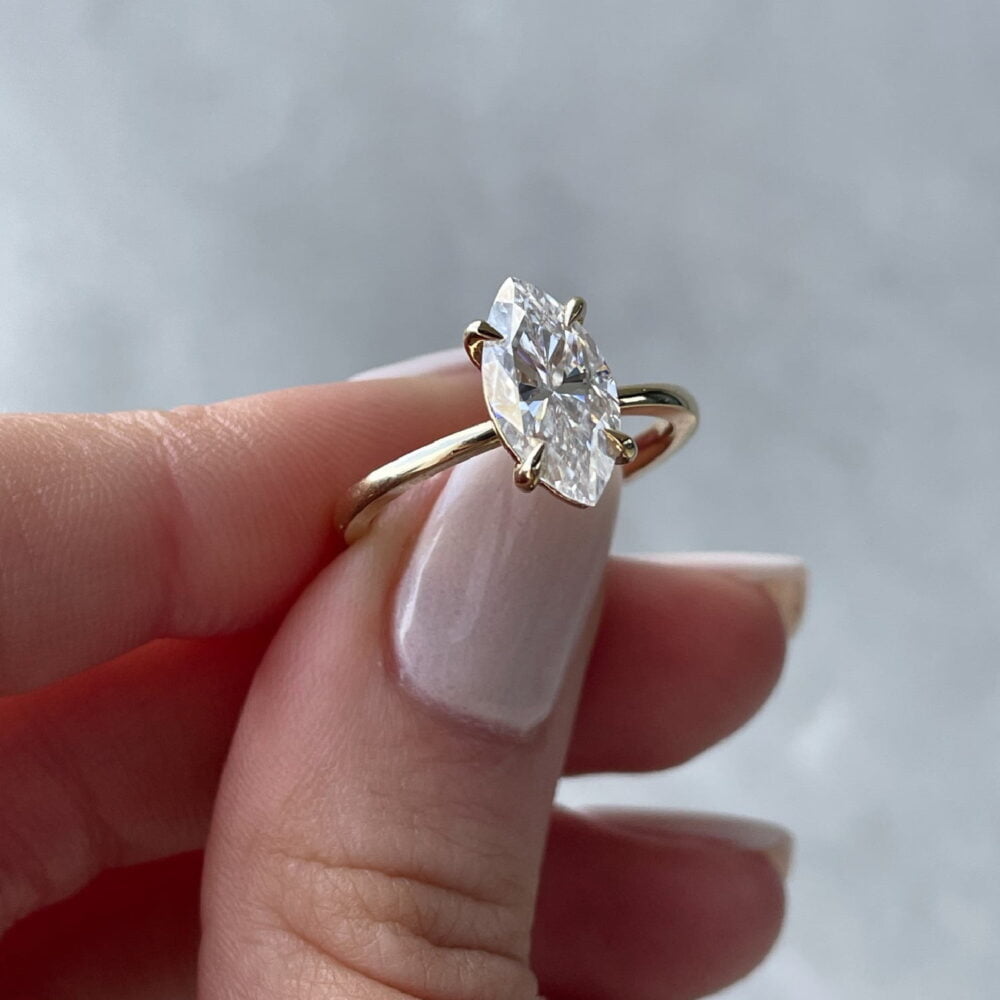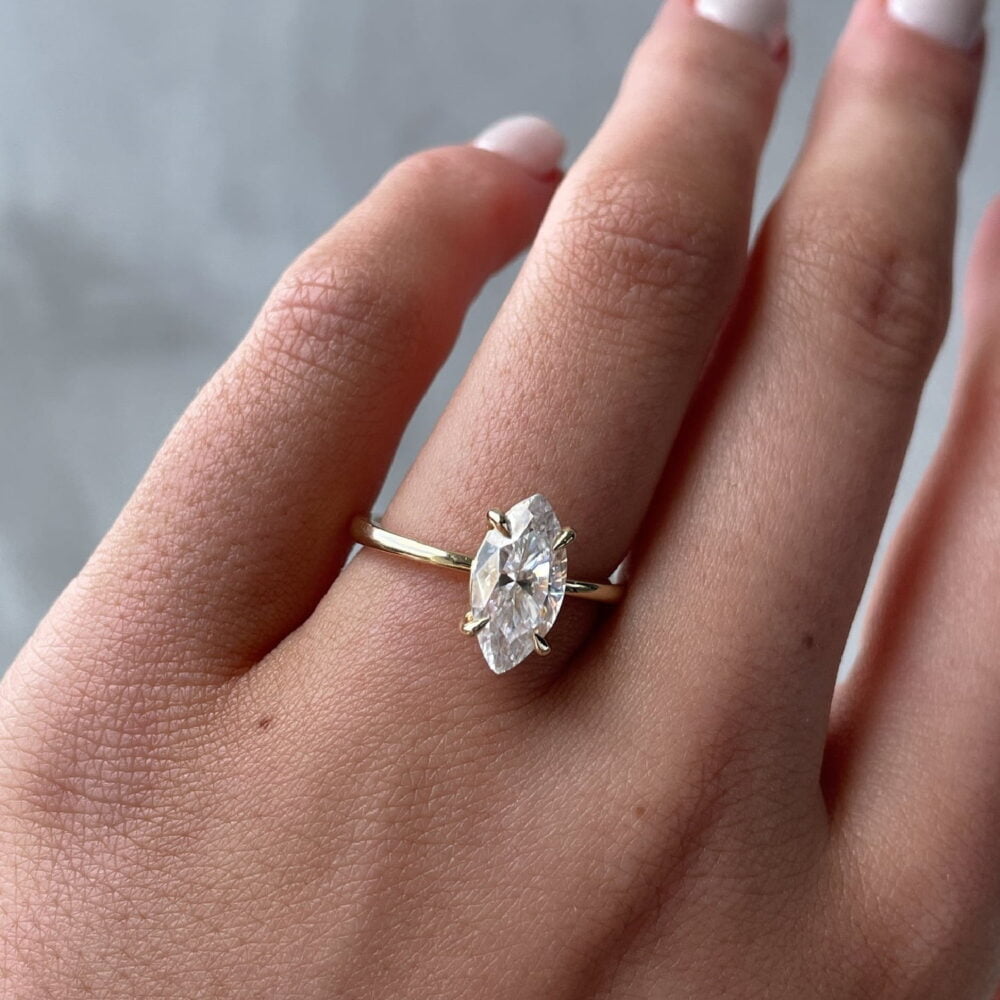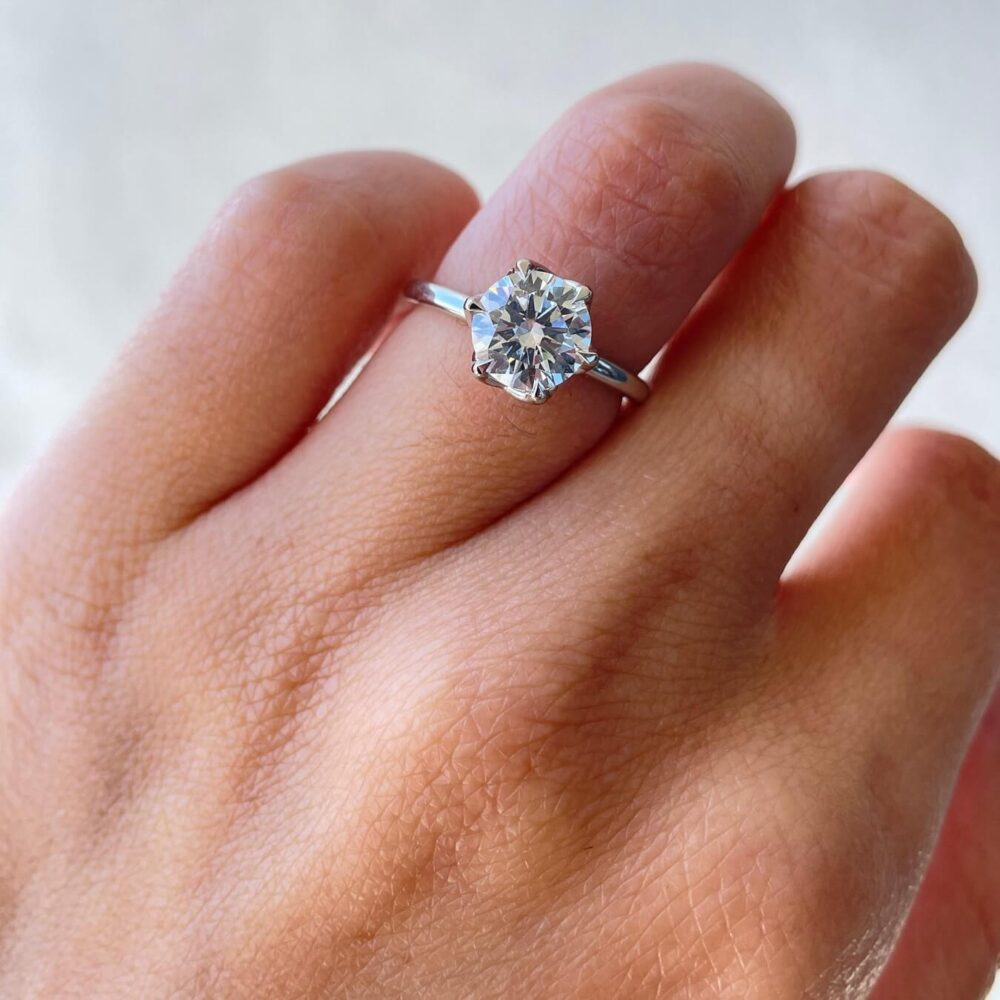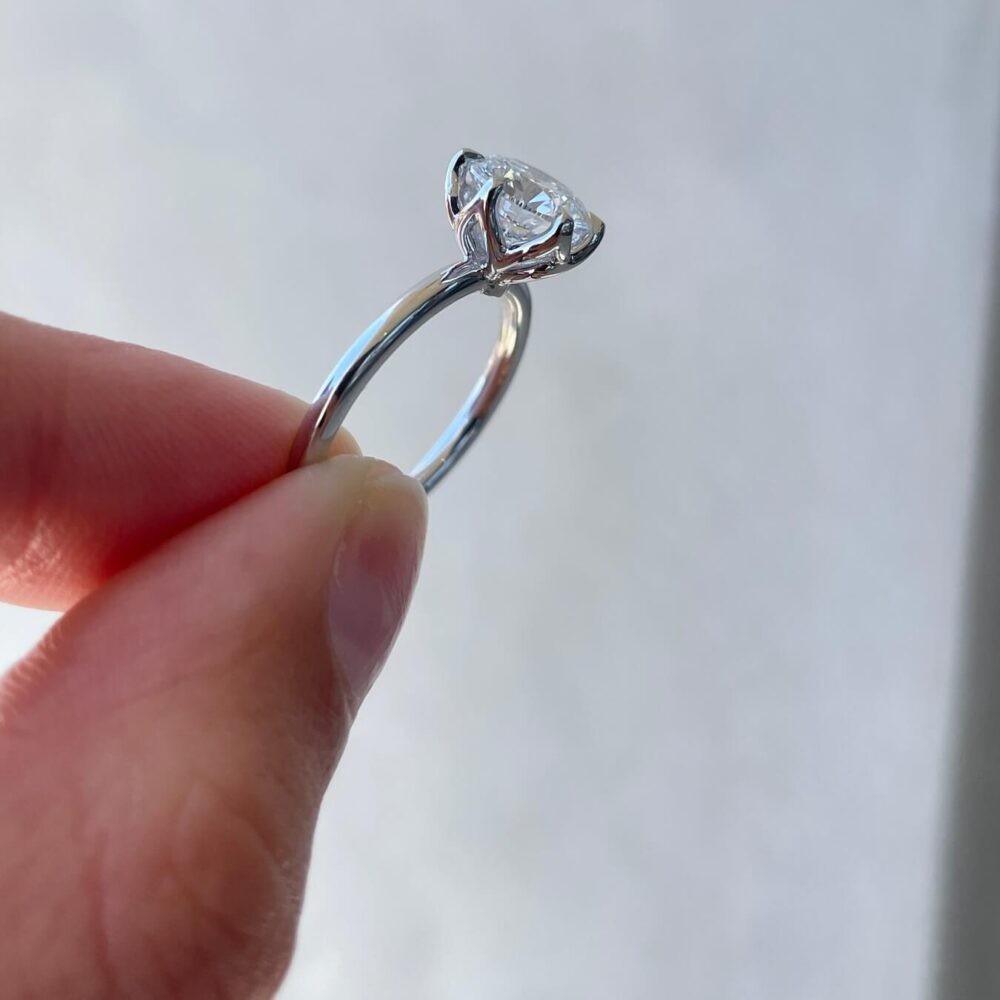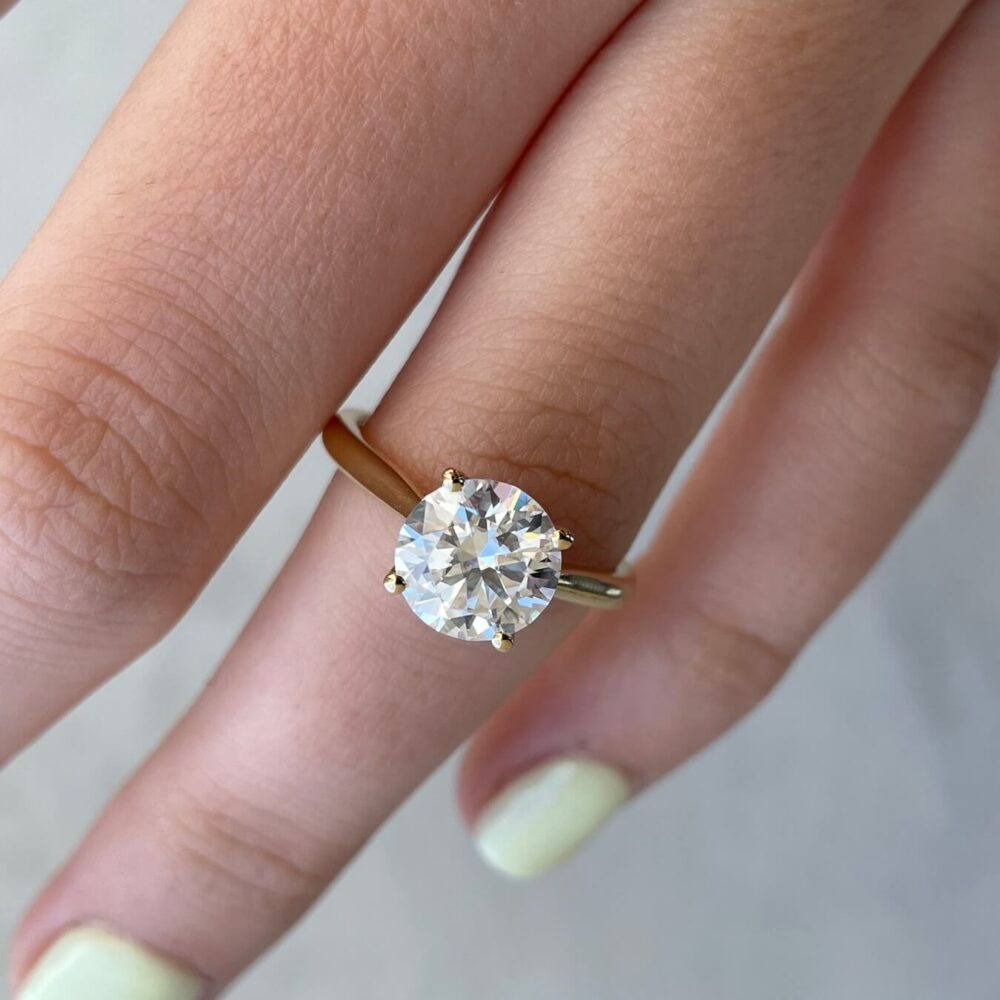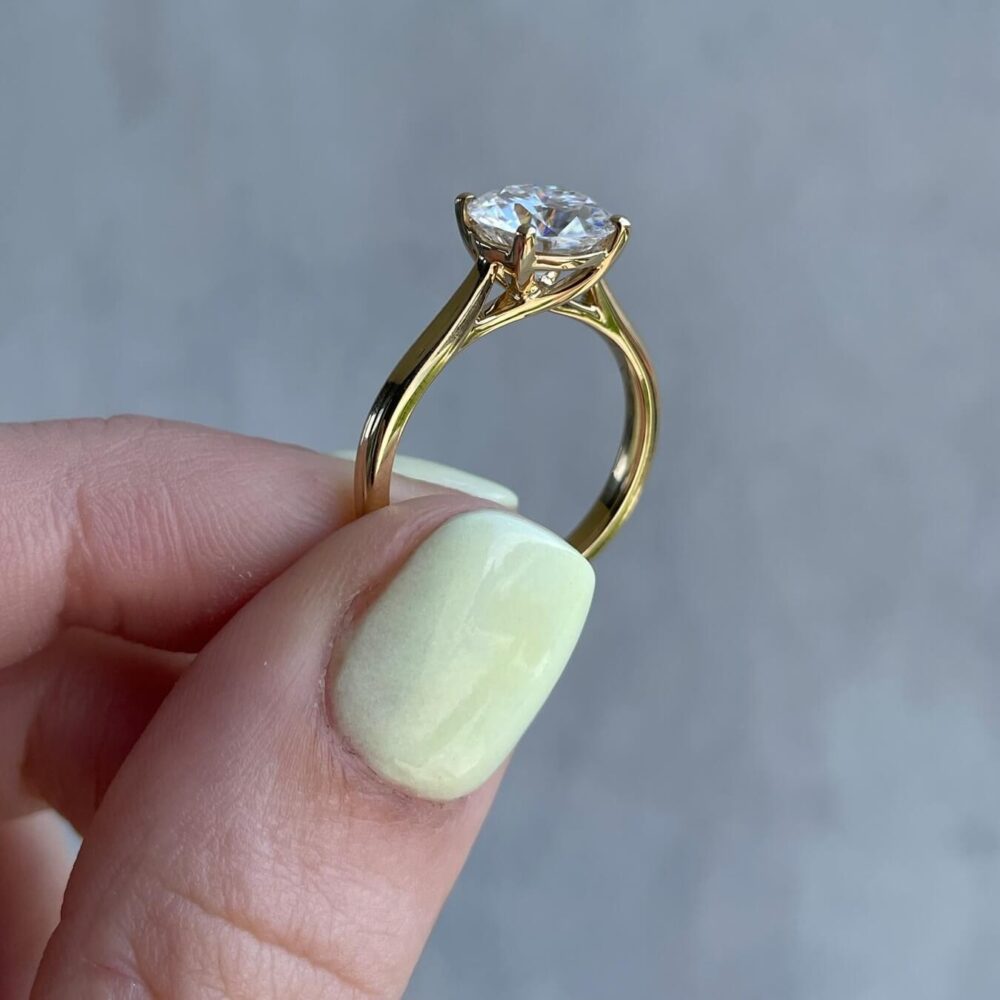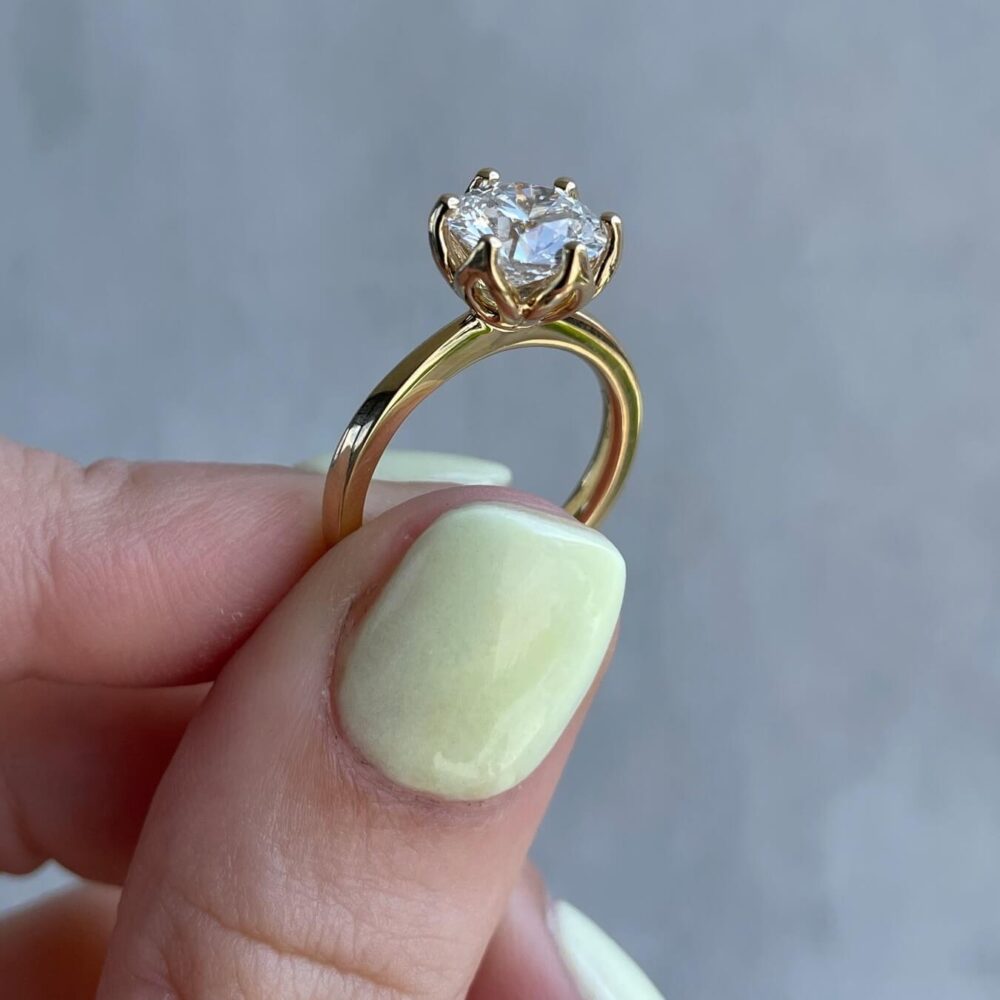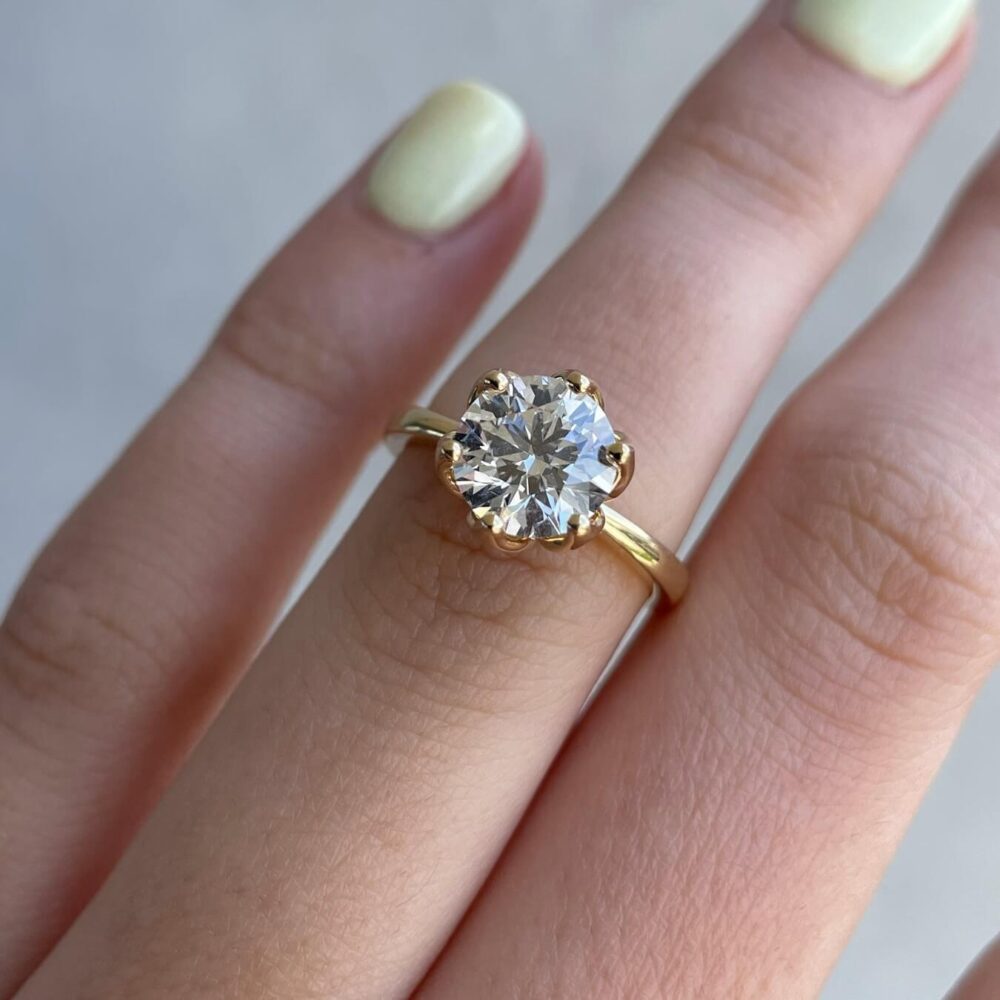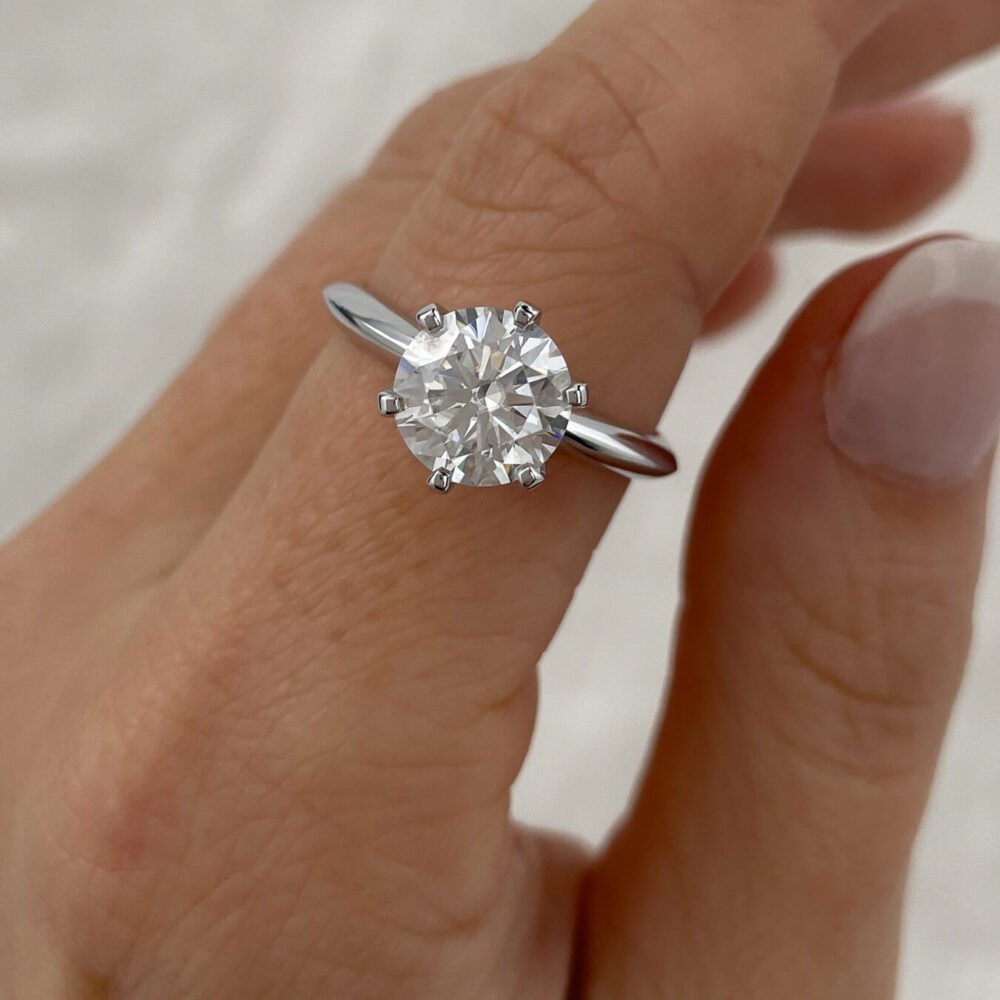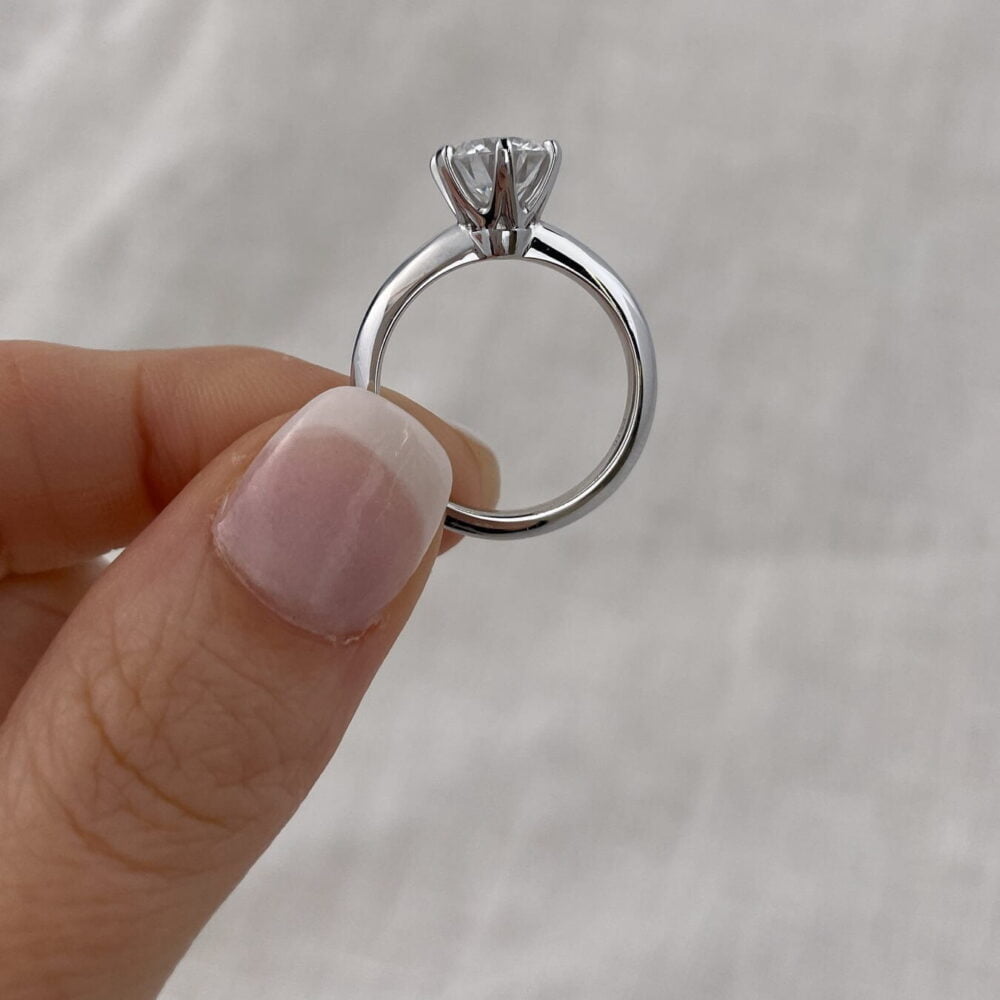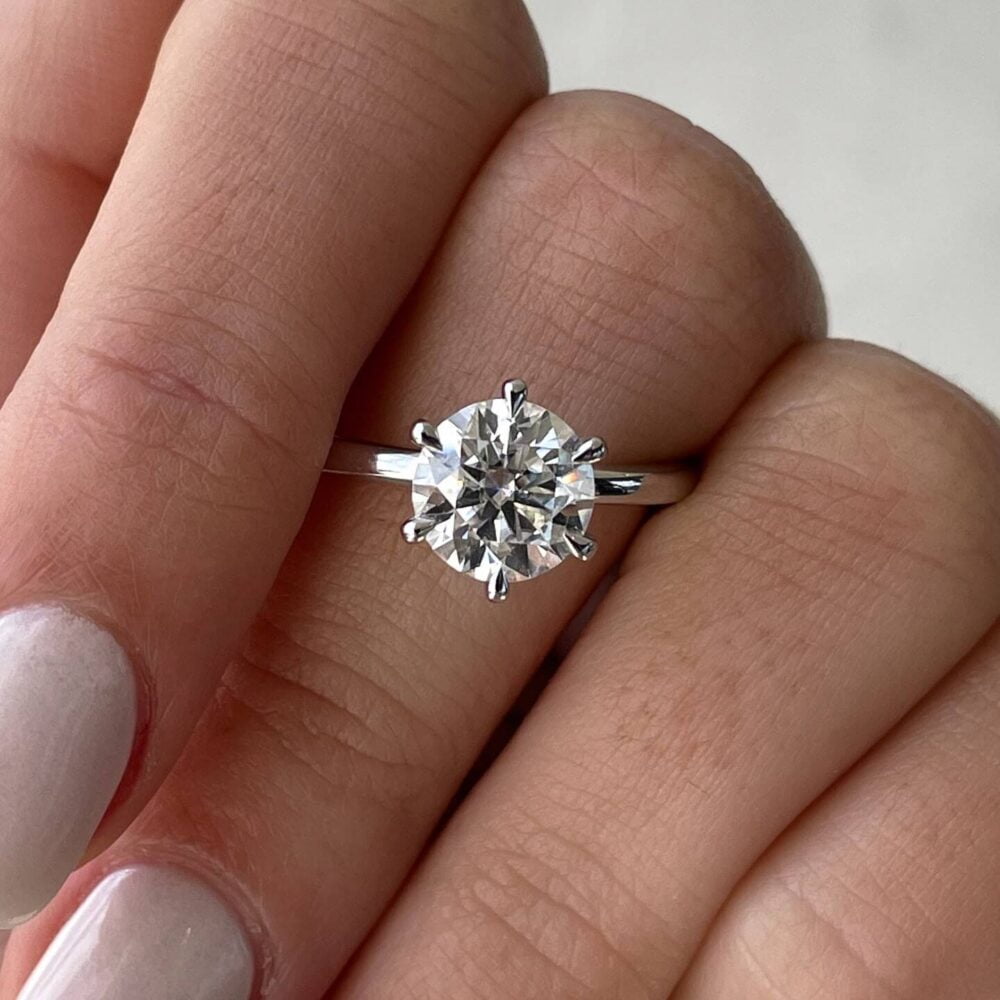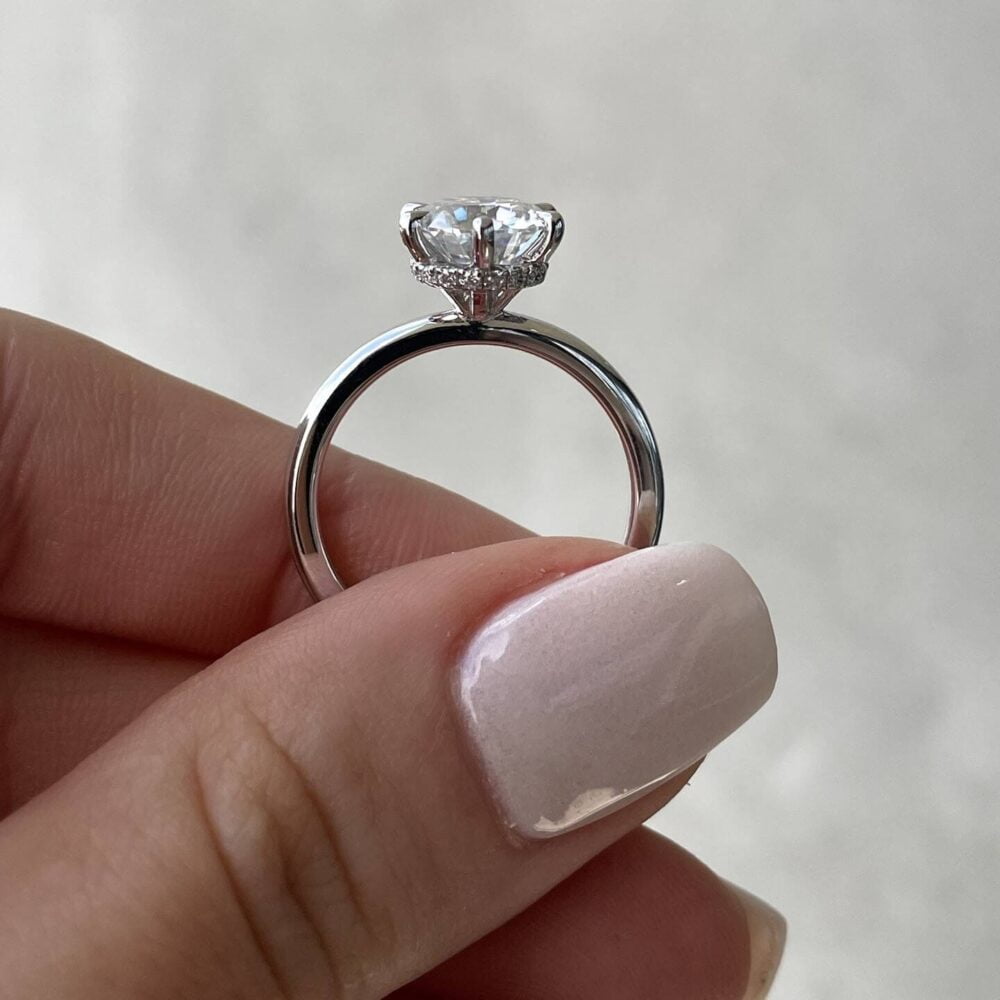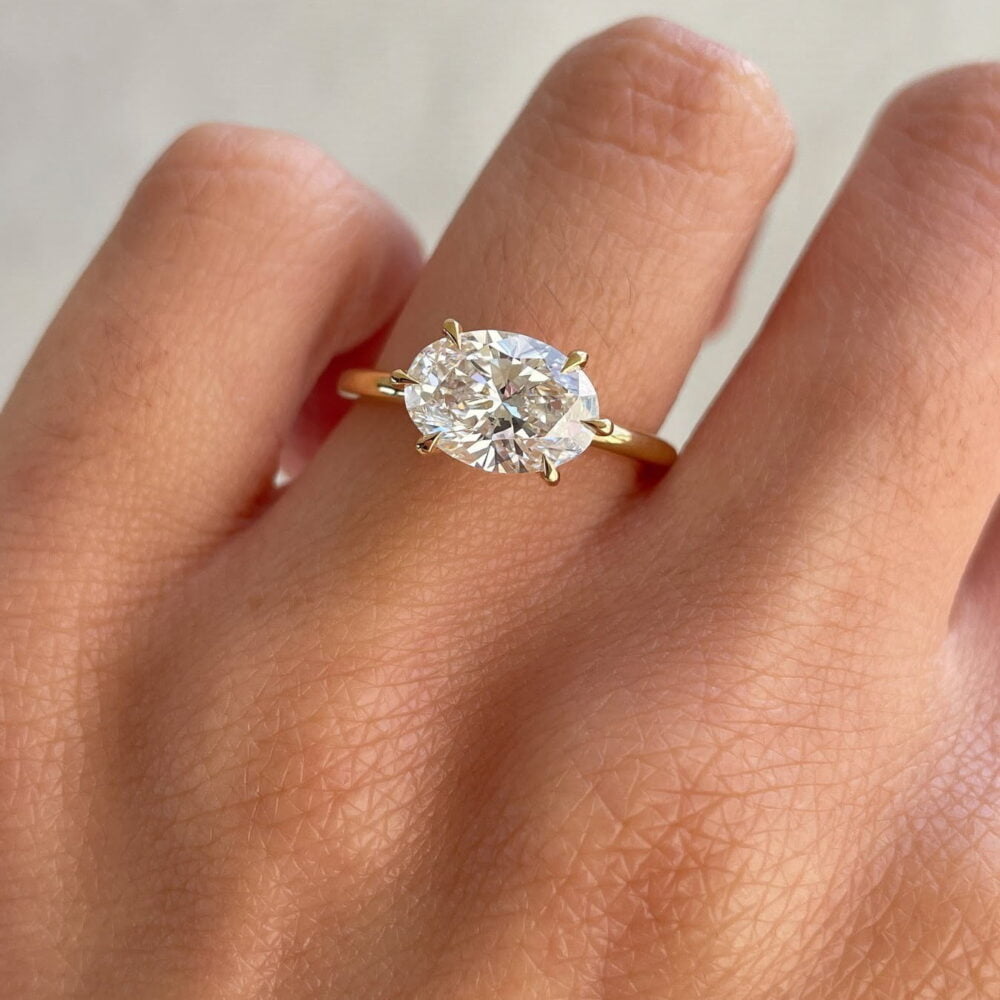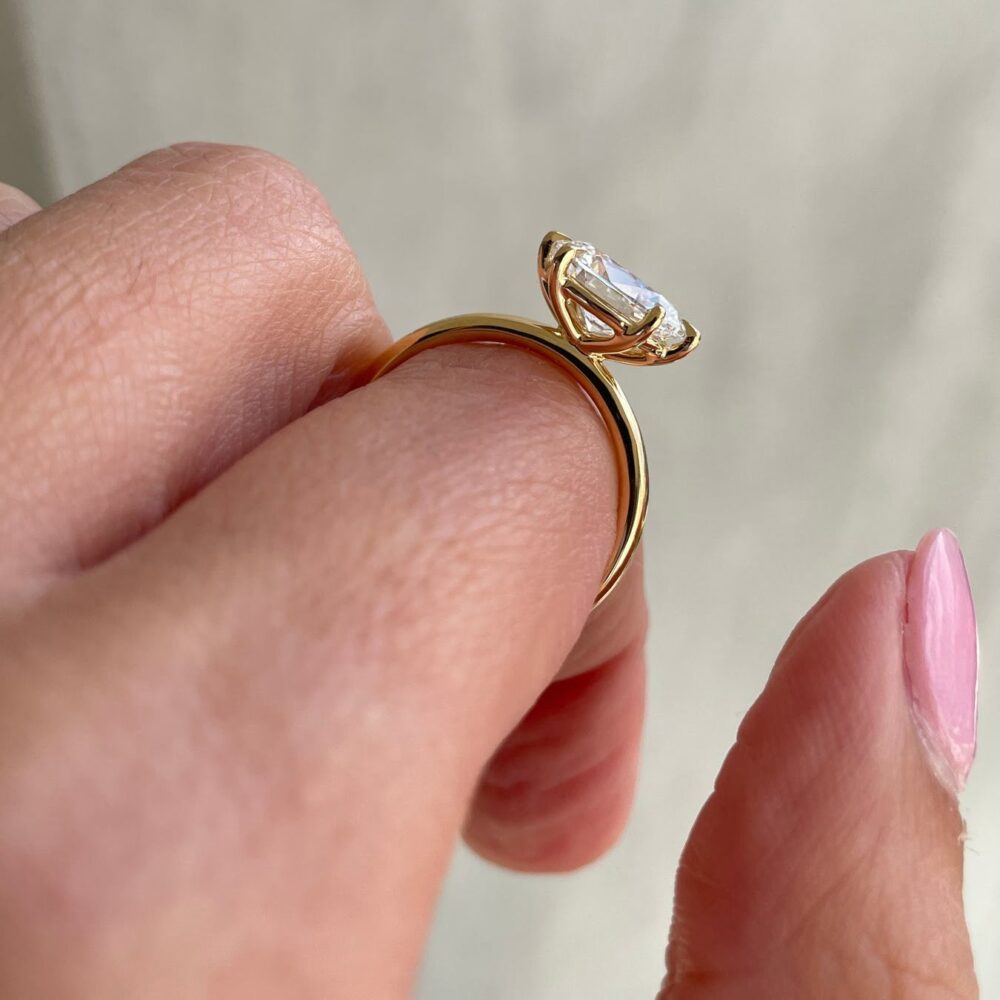Solitaire Engagement Ring
A solitaire engagement ring is defined by its elegant simplicity. It features a single, beautiful gemstone, typically a diamond, set on a plain or subtly detailed band. There are no additional diamonds or gemstones on the band or surrounding the center stone. Read More…
 14K Rose Gold
14K Rose Gold 14K White Gold
14K White Gold 14K Yellow Gold
14K Yellow Gold 18K Rose Gold
18K Rose Gold 18K White Gold
18K White Gold 18K Yellow Gold
18K Yellow Gold 14K Rose Gold
14K Rose Gold 14K White Gold
14K White Gold 14K Yellow Gold
14K Yellow Gold 18K Rose Gold
18K Rose Gold 18K White Gold
18K White Gold 18K Yellow Gold
18K Yellow Gold 14K Rose Gold
14K Rose Gold 14K White Gold
14K White Gold 14K Yellow Gold
14K Yellow Gold 18K Rose Gold
18K Rose Gold 18K White Gold
18K White Gold 18K Yellow Gold
18K Yellow Gold 14K Rose Gold
14K Rose Gold 14K White Gold
14K White Gold 14K Yellow Gold
14K Yellow Gold 18K Rose Gold
18K Rose Gold 18K White Gold
18K White Gold 18K Yellow Gold
18K Yellow Gold 14K Rose Gold
14K Rose Gold 14K White Gold
14K White Gold 14K Yellow Gold
14K Yellow Gold 18K Rose Gold
18K Rose Gold 18K White Gold
18K White Gold 18K Yellow Gold
18K Yellow Gold 14K Rose Gold
14K Rose Gold 14K White Gold
14K White Gold 14K Yellow Gold
14K Yellow Gold 18K Rose Gold
18K Rose Gold 18K White Gold
18K White Gold 18K Yellow Gold
18K Yellow Gold 14K Rose Gold
14K Rose Gold 14K White Gold
14K White Gold 14K Yellow Gold
14K Yellow Gold 18K Rose Gold
18K Rose Gold 18K White Gold
18K White Gold 18K Yellow Gold
18K Yellow Gold 14K Rose Gold
14K Rose Gold 14K White Gold
14K White Gold 14K Yellow Gold
14K Yellow Gold 18K Rose Gold
18K Rose Gold 18K White Gold
18K White Gold 18K Yellow Gold
18K Yellow Gold 14K Rose Gold
14K Rose Gold 14K White Gold
14K White Gold 14K Yellow Gold
14K Yellow Gold 18K Rose Gold
18K Rose Gold 18K White Gold
18K White Gold 18K Yellow Gold
18K Yellow Gold 14K Rose Gold
14K Rose Gold 14K White Gold
14K White Gold 14K Yellow Gold
14K Yellow Gold 18K Rose Gold
18K Rose Gold 18K White Gold
18K White Gold 18K Yellow Gold
18K Yellow Gold 14K Rose Gold
14K Rose Gold 14K White Gold
14K White Gold 14K Yellow Gold
14K Yellow Gold 18K Rose Gold
18K Rose Gold 18K White Gold
18K White Gold 18K Yellow Gold
18K Yellow Gold 14K Rose Gold
14K Rose Gold 14K White Gold
14K White Gold 14K Yellow Gold
14K Yellow Gold 18K Rose Gold
18K Rose Gold 18K White Gold
18K White Gold 18K Yellow Gold
18K Yellow Gold 14K Rose Gold
14K Rose Gold 14K White Gold
14K White Gold 14K Yellow Gold
14K Yellow Gold 18K Rose Gold
18K Rose Gold 18K White Gold
18K White Gold 18K Yellow Gold
18K Yellow Gold 14K Rose Gold
14K Rose Gold 14K White Gold
14K White Gold 14K Yellow Gold
14K Yellow Gold 18K Rose Gold
18K Rose Gold 18K White Gold
18K White Gold 18K Yellow Gold
18K Yellow Gold 14K Rose Gold
14K Rose Gold 14K White Gold
14K White Gold 14K Yellow Gold
14K Yellow Gold 14K Rose Gold
14K Rose Gold 14K White Gold
14K White Gold 14K Yellow Gold
14K Yellow Gold 14K Rose Gold
14K Rose Gold 14K White Gold
14K White Gold 14K Yellow Gold
14K Yellow Gold 14K Rose Gold
14K Rose Gold 14K White Gold
14K White Gold 14K Yellow Gold
14K Yellow Gold 14K Rose Gold
14K Rose Gold 14K White Gold
14K White Gold 14K Yellow Gold
14K Yellow Gold 14K Rose Gold
14K Rose Gold 14K White Gold
14K White Gold 14K Yellow Gold
14K Yellow Gold 14K Rose Gold
14K Rose Gold 14K White Gold
14K White Gold 14K Yellow Gold
14K Yellow Gold 14K Rose Gold
14K Rose Gold 14K White Gold
14K White Gold 14K Yellow Gold
14K Yellow Gold 14K Rose Gold
14K Rose Gold 14K White Gold
14K White Gold 14K Yellow Gold
14K Yellow Gold 14K Rose Gold
14K Rose Gold 14K White Gold
14K White Gold 14K Yellow Gold
14K Yellow Gold 14K Rose Gold
14K Rose Gold 14K White Gold
14K White Gold 14K Yellow Gold
14K Yellow Gold 14K Rose Gold
14K Rose Gold 14K White Gold
14K White Gold 14K Yellow Gold
14K Yellow Gold 14K Rose Gold
14K Rose Gold 14K White Gold
14K White Gold 14K Yellow Gold
14K Yellow Gold 14K Rose Gold
14K Rose Gold 14K White Gold
14K White Gold 14K Yellow Gold
14K Yellow Gold 14K Rose Gold
14K Rose Gold 14K White Gold
14K White Gold 14K Yellow Gold
14K Yellow Gold 14K Rose Gold
14K Rose Gold 14K White Gold
14K White Gold 14K Yellow Gold
14K Yellow Gold 14K Rose Gold
14K Rose Gold 14K White Gold
14K White Gold 14K Yellow Gold
14K Yellow Gold 14K Rose Gold
14K Rose Gold 14K White Gold
14K White Gold 14K Yellow Gold
14K Yellow Gold 14K Rose Gold
14K Rose Gold 14K White Gold
14K White Gold 14K Yellow Gold
14K Yellow Gold 14K Rose Gold
14K Rose Gold 14K White Gold
14K White Gold 14K Yellow Gold
14K Yellow Gold 14K Rose Gold
14K Rose Gold 14K White Gold
14K White Gold 14K Yellow Gold
14K Yellow Gold 14K Rose Gold
14K Rose Gold 14K White Gold
14K White Gold 14K Yellow Gold
14K Yellow Gold 14K Rose Gold
14K Rose Gold 14K White Gold
14K White Gold 14K Yellow Gold
14K Yellow Gold 14K Rose Gold
14K Rose Gold 14K White Gold
14K White Gold 14K Yellow Gold
14K Yellow Gold 14K Rose Gold
14K Rose Gold 14K White Gold
14K White Gold 14K Yellow Gold
14K Yellow Gold 14K Rose Gold
14K Rose Gold 14K White Gold
14K White Gold 14K Yellow Gold
14K Yellow Gold 14K Rose Gold
14K Rose Gold 14K White Gold
14K White Gold 14K Yellow Gold
14K Yellow Gold 14K Rose Gold
14K Rose Gold 14K White Gold
14K White Gold 14K Yellow Gold
14K Yellow Gold 14K Rose Gold
14K Rose Gold 14K White Gold
14K White Gold 14K Yellow Gold
14K Yellow Gold 14K Rose Gold
14K Rose Gold 14K White Gold
14K White Gold 14K Yellow Gold
14K Yellow Gold 14K Rose Gold
14K Rose Gold 14K White Gold
14K White Gold 14K Yellow Gold
14K Yellow Gold 14K Rose Gold
14K Rose Gold 14K White Gold
14K White Gold 14K Yellow Gold
14K Yellow Gold 14K Rose Gold
14K Rose Gold 14K White Gold
14K White Gold 14K Yellow Gold
14K Yellow Gold 14K Rose Gold
14K Rose Gold 14K White Gold
14K White Gold 14K Yellow Gold
14K Yellow Gold 14K Rose Gold
14K Rose Gold 14K White Gold
14K White Gold 14K Yellow Gold
14K Yellow Gold 14K Rose Gold
14K Rose Gold 14K White Gold
14K White Gold 14K Yellow Gold
14K Yellow Gold 14K Rose Gold
14K Rose Gold 14K White Gold
14K White Gold 14K Yellow Gold
14K Yellow Gold 14K Rose Gold
14K Rose Gold 14K White Gold
14K White Gold 14K Yellow Gold
14K Yellow GoldFall in Love with Our Stunning Halo Engagement Rings
A proposal is a moment suspended in time. It deserves a ring that captures that same magical feeling. Welcome to our breathtaking collection of halo engagement rings. This beloved style features a brilliant center stone completely surrounded by a circle of smaller gems. This "halo" of light creates an awe-inspiring effect. It amplifies the center stone's sparkle and makes it appear significantly larger. It is a design that promises maximum brilliance and timeless elegance. Our beautiful halo rings for women are crafted to be a symbol of your love, shining brightly for a lifetime.
We believe in offering beauty with a clear conscience. That is why we proudly feature the moissanite halo ring in our collection. Moissanite is a stunning lab-grown gemstone with more fire and brilliance than any other. It sparkles with an incredible rainbow of light, creating a dazzling display. This ethical gem is also exceptionally durable, making it perfect for everyday wear. Choosing a moissanite ring means you get a spectacular look at an amazing value. It is the perfect choice for the modern, conscious couple.
Your love is unique, and your ring should be, too. Our collection features a halo for every style and personality. You can choose the shape that speaks to you.
Round halo rings are a timeless classic, offering unmatched sparkle.
Oval halo rings create an elegant, elongated look that is very flattering.
Cushion cut halo engagement rings have soft, romantic corners for a vintage feel.
Princess cut halo engagement rings offer a modern, geometric brilliance.
Emerald cut halo engagement rings provide a sophisticated, Art Deco-inspired look.
A pear halo engagement ring is a graceful and distinctive teardrop shape.
The marquise halo engagement ring has a unique shape that maximizes carat weight.
Radiant cut halo engagement rings combine a rectangular shape with brilliant facets for incredible fire.
Beyond the center stone, the setting itself can tell a story. We offer an array of unique designs to help you find the perfect one. Our vintage halo engagement rings feature intricate details like milgrain and filigree. These elements give the ring a beautiful, heirloom quality. A twisted halo ring has bands that intertwine, symbolizing two lives becoming one. For a truly grand statement, a cathedral halo ring uses arches to lift the center stone high. This creates a dramatic and elegant profile. For even more sparkle, explore our halo engagement rings with split shank bands. This design features a band that parts as it reaches the center, adding an extra layer of detail and light.
Personalization is at the heart of what we do. You can select the size of your center stone to match your vision. We offer everything from a delicate 1 carat halo ring to a show-stopping 2 carat halo engagement ring. For those who desire ultimate glamour, we also craft stunning 3 ct halo rings. You can also choose your favorite precious metal. Our rose gold halo engagement rings are a very popular choice. They offer a warm, romantic blush that beautifully complements any skin tone.
We make it easy to create a perfectly coordinated look for your wedding day. Our halo wedding ring sets are designed to be a perfect match. These halo bridal set rings include both the engagement ring and a wedding band that fits flawlessly beside it. This ensures there are no awkward gaps between your rings. If you already have your ring, finding the right wedding band for halo ring designs is simple. We have many options designed to sit flush and enhance your ring's beauty.
Explore our collection and find the halo ring that captures your heart. Your journey to forever deserves a brilliant beginning.

